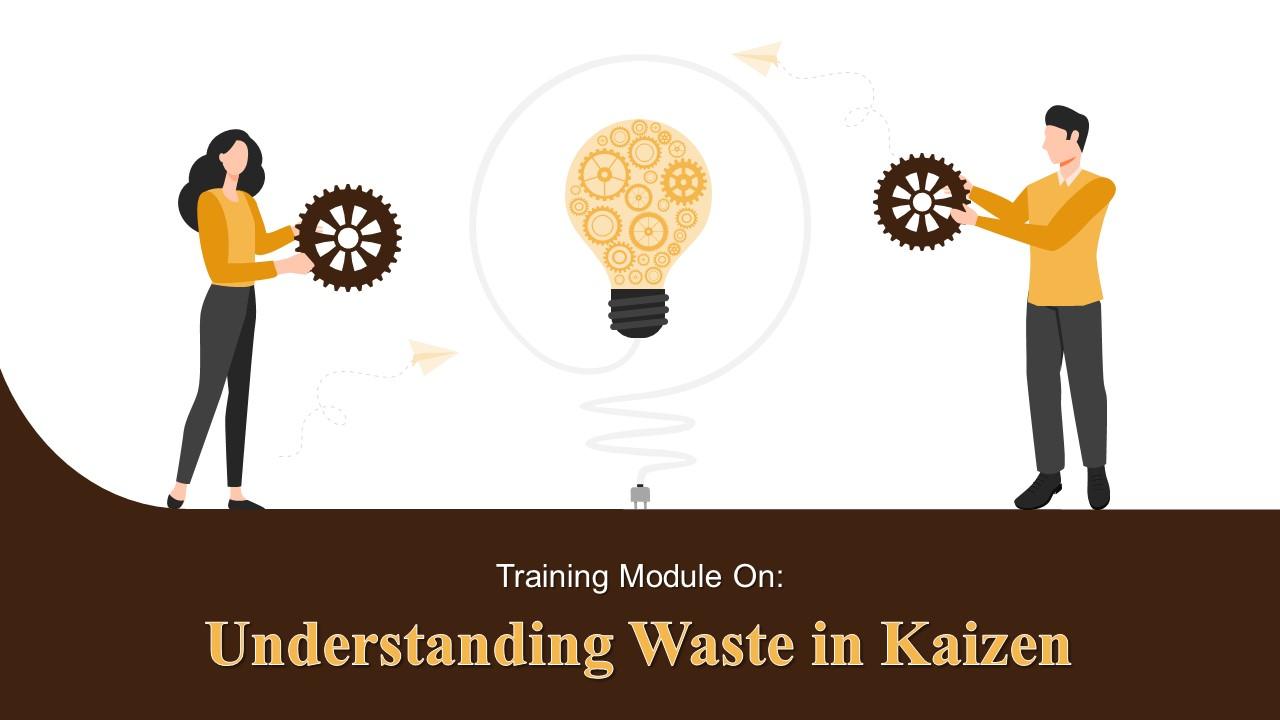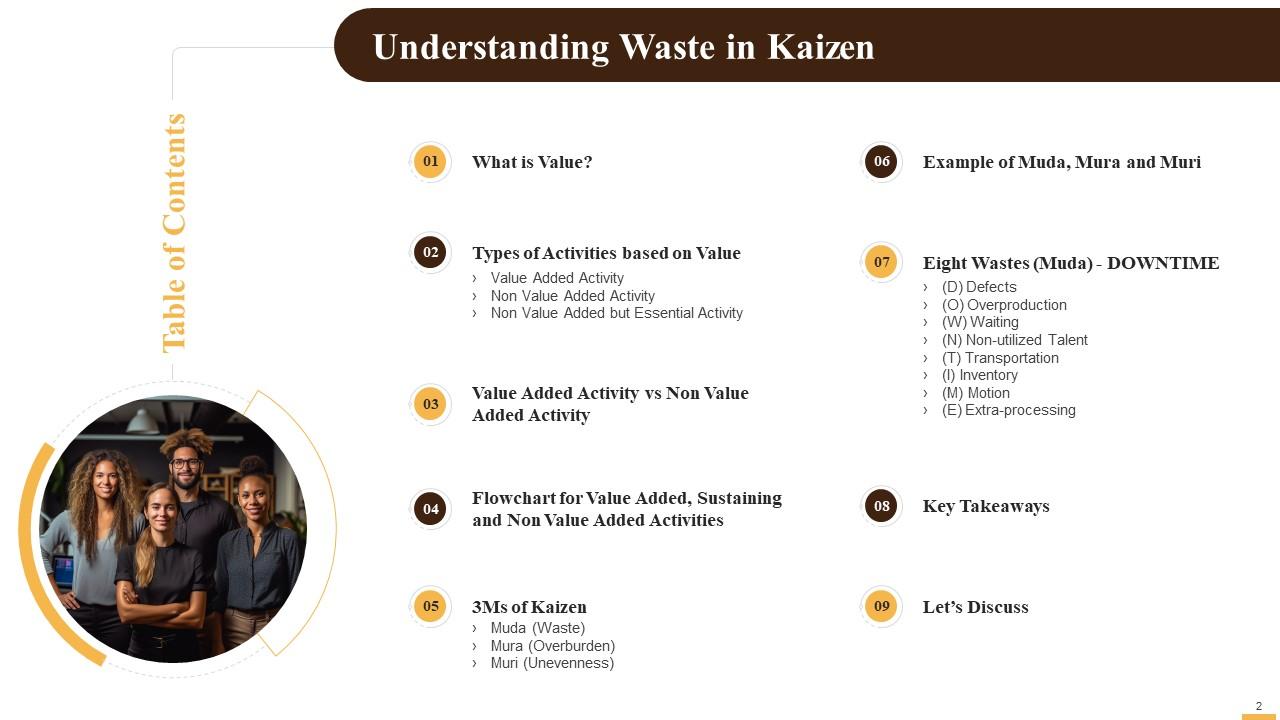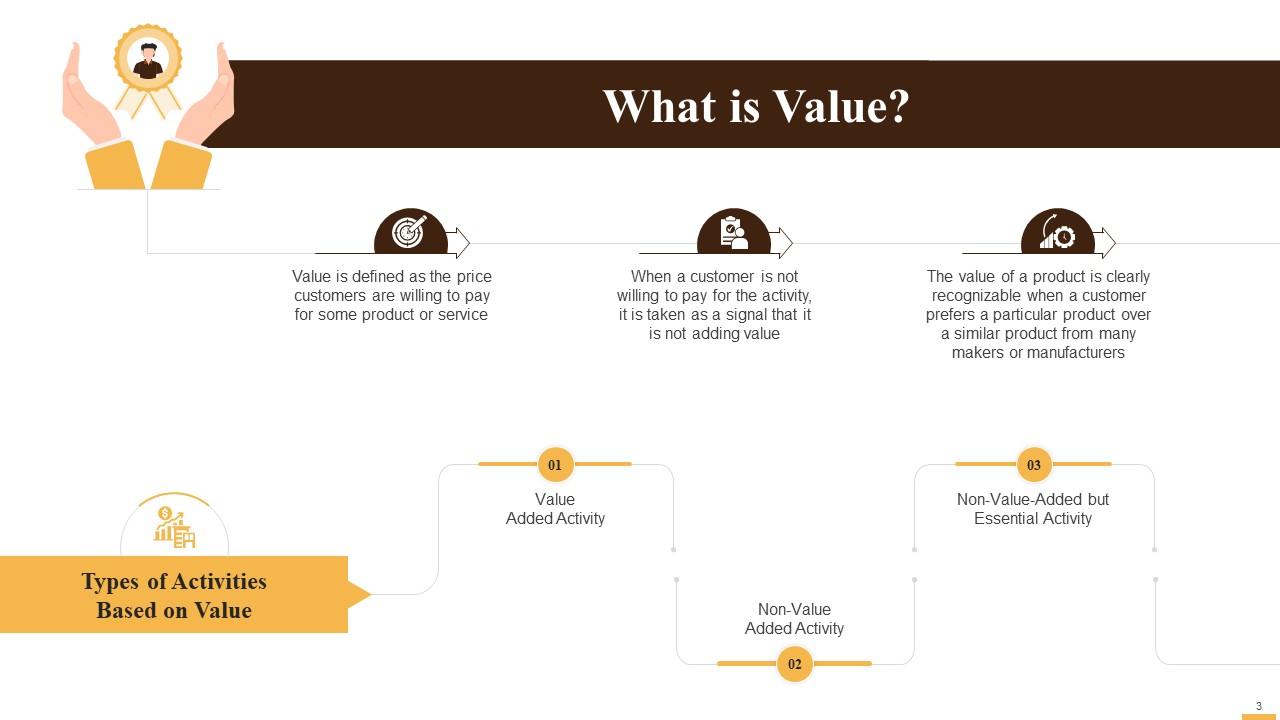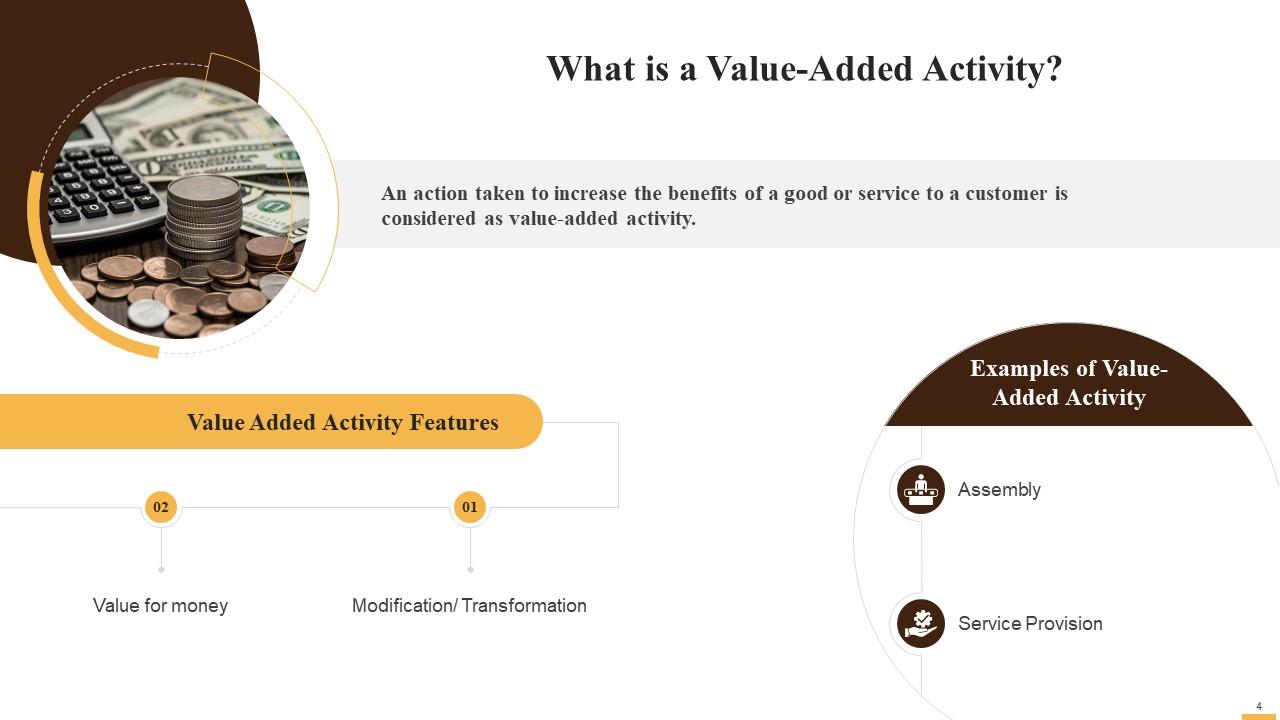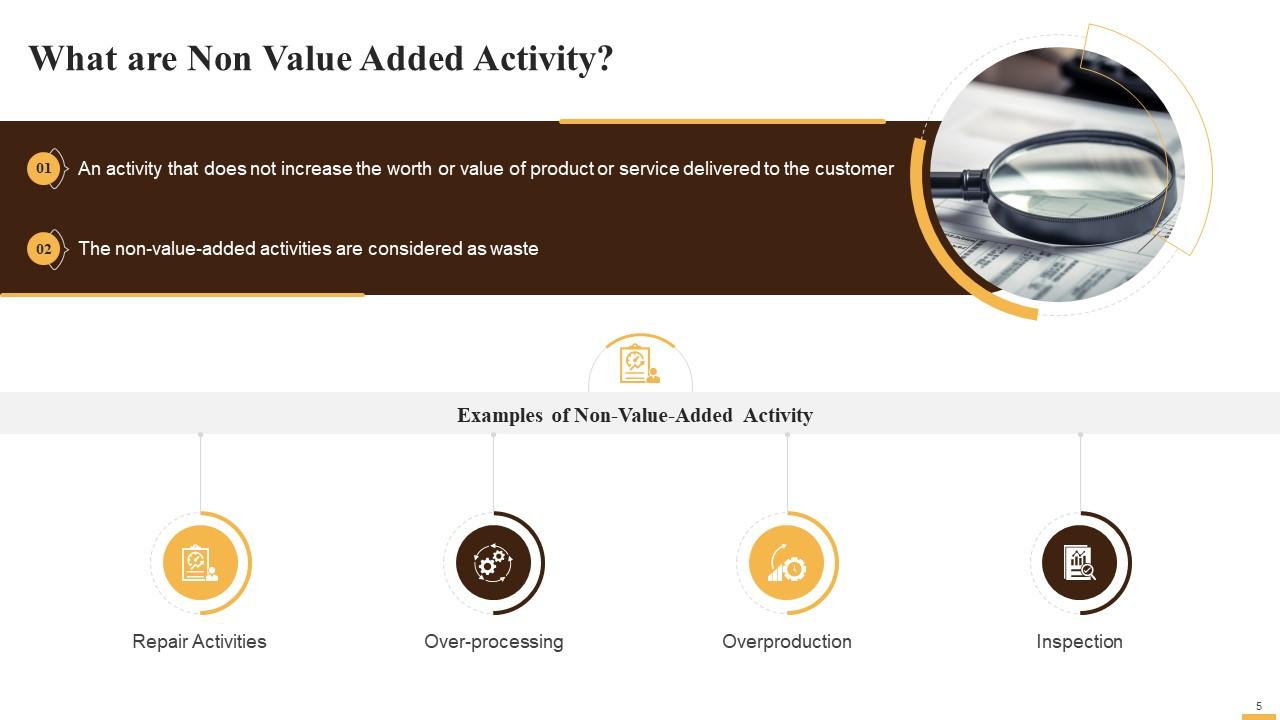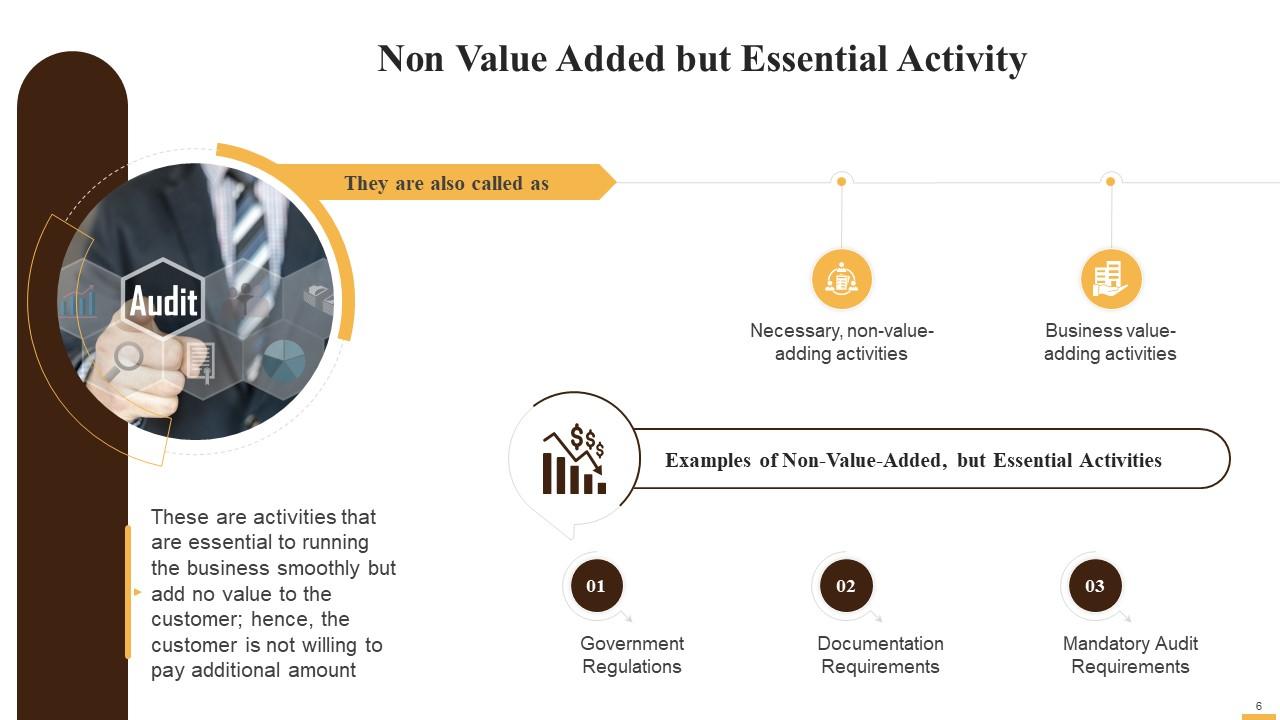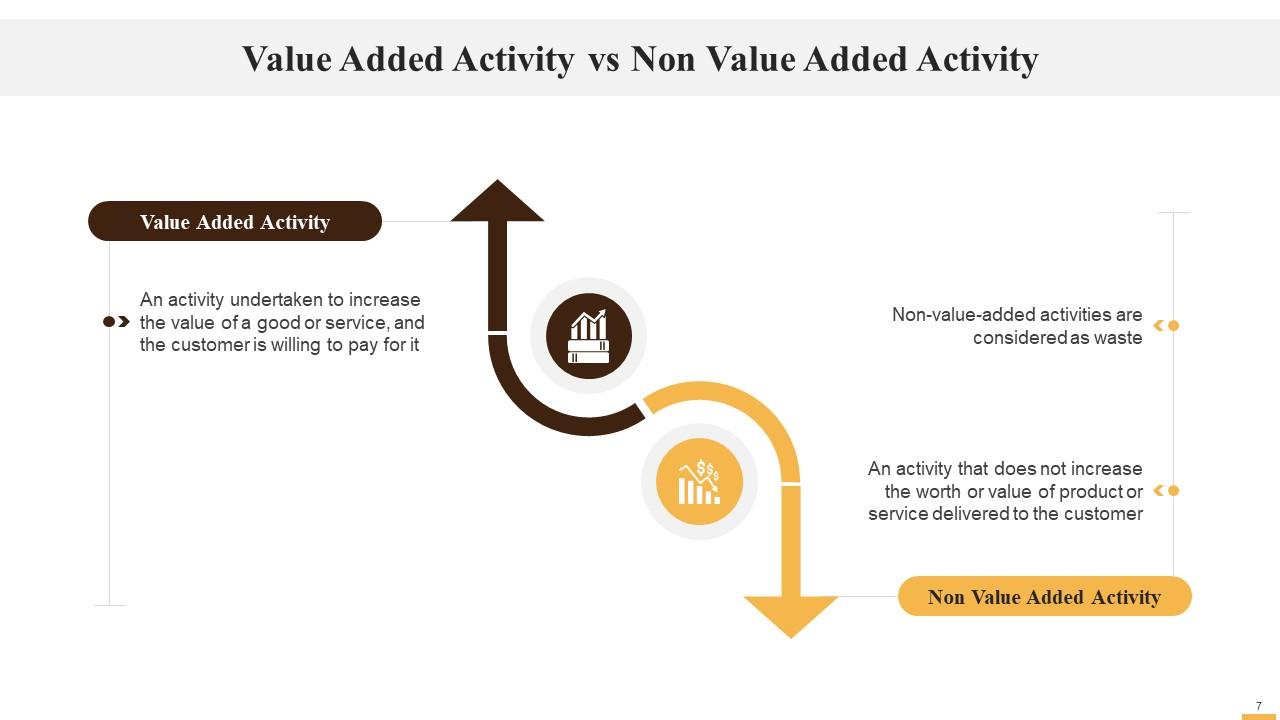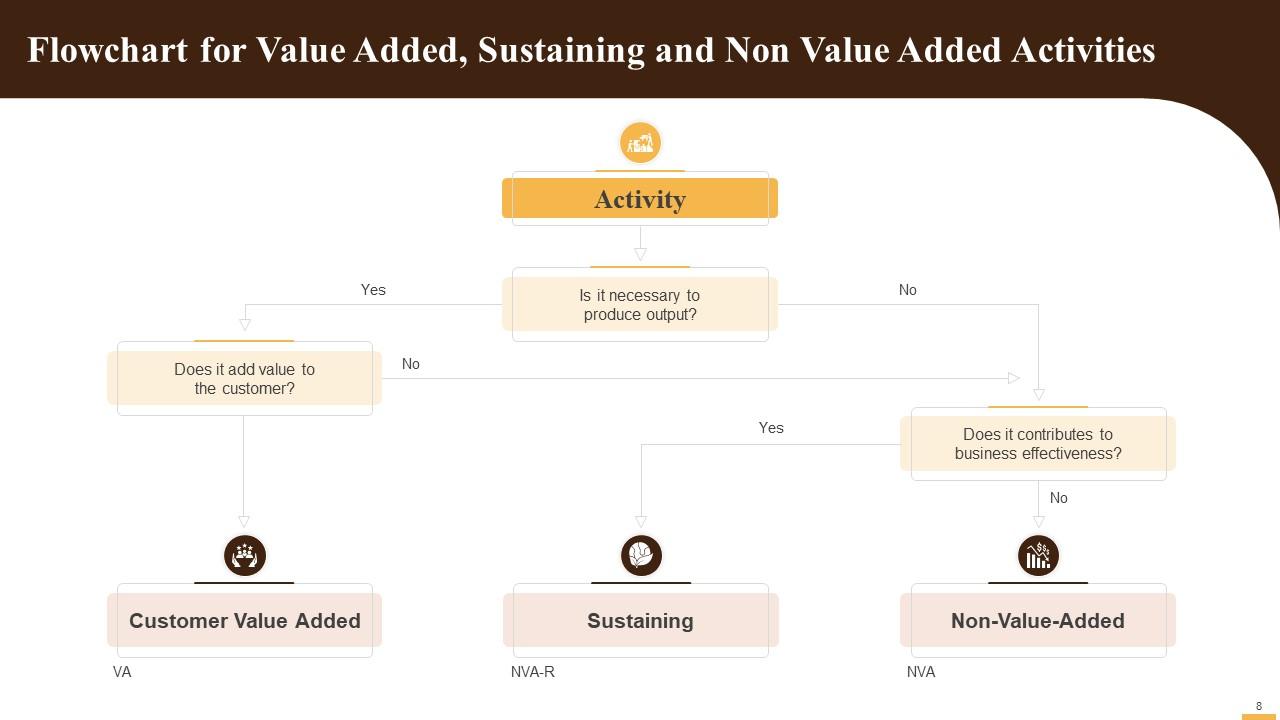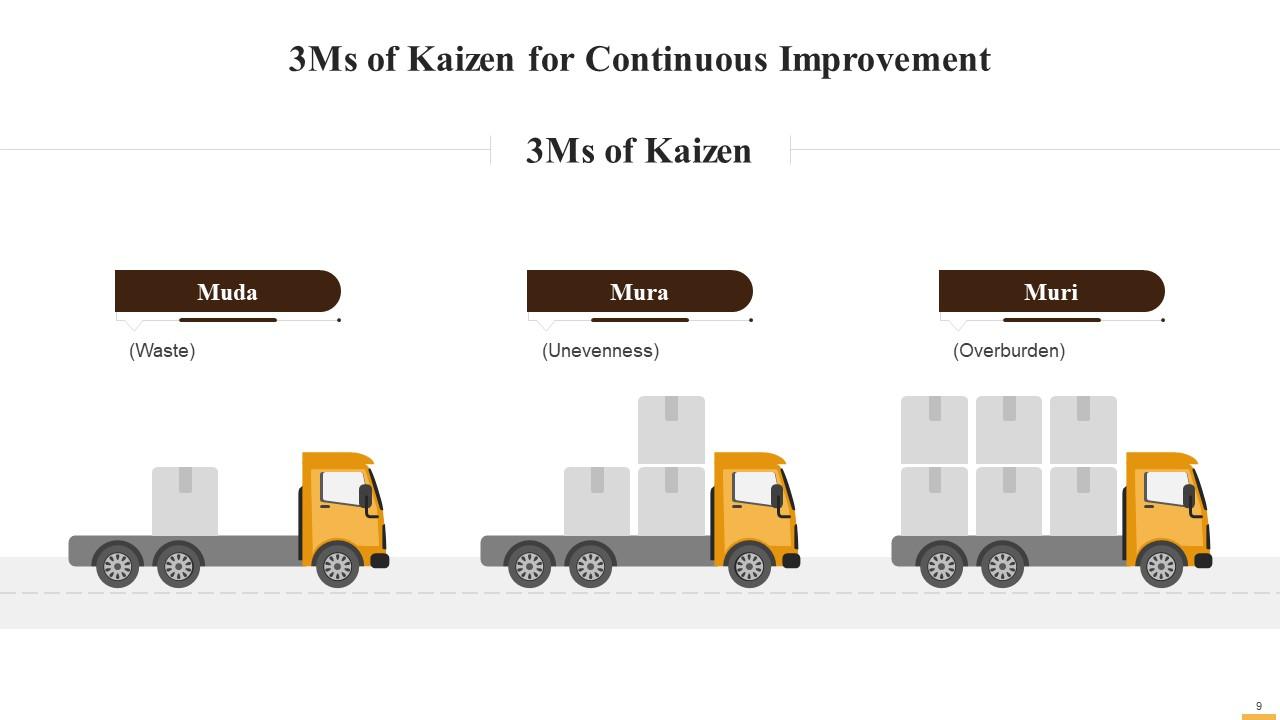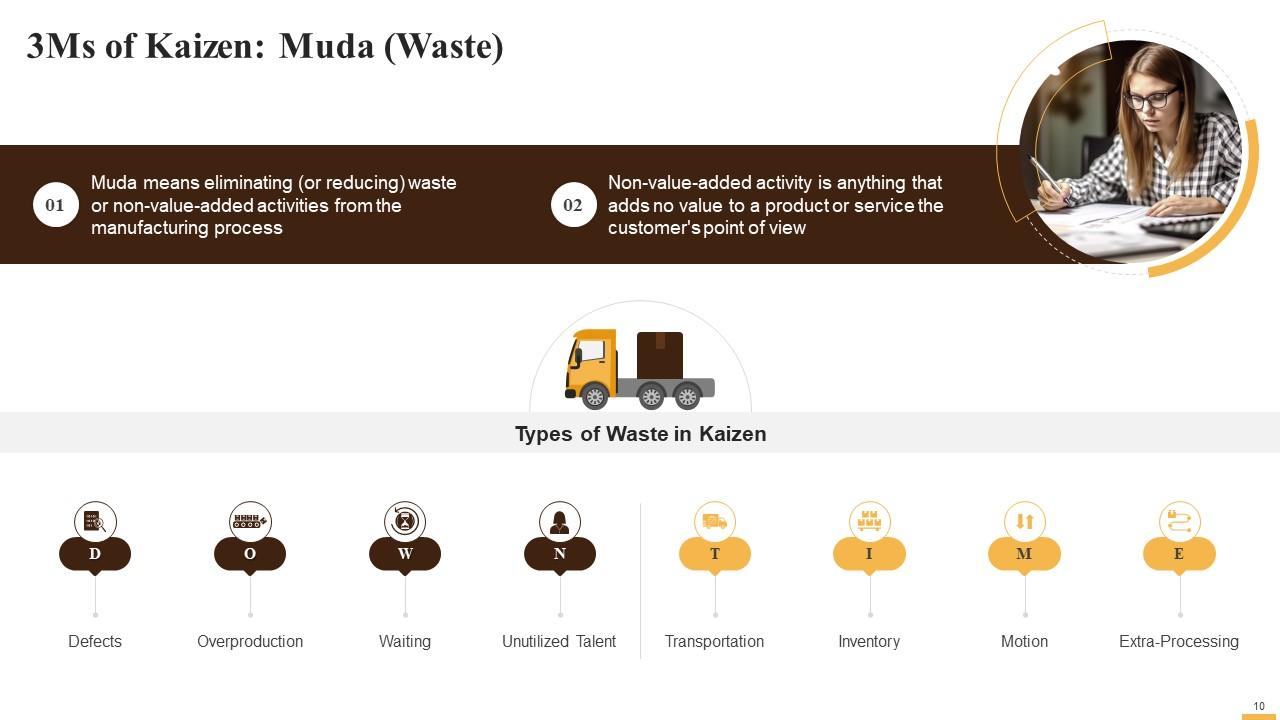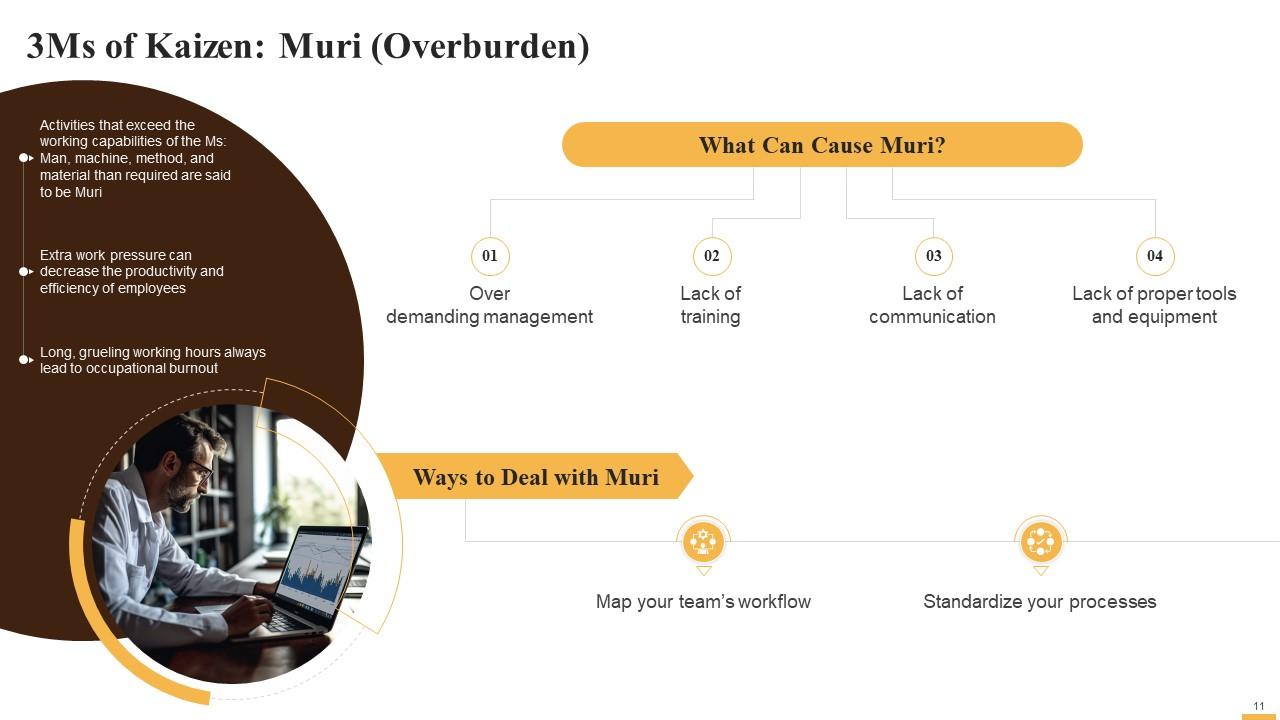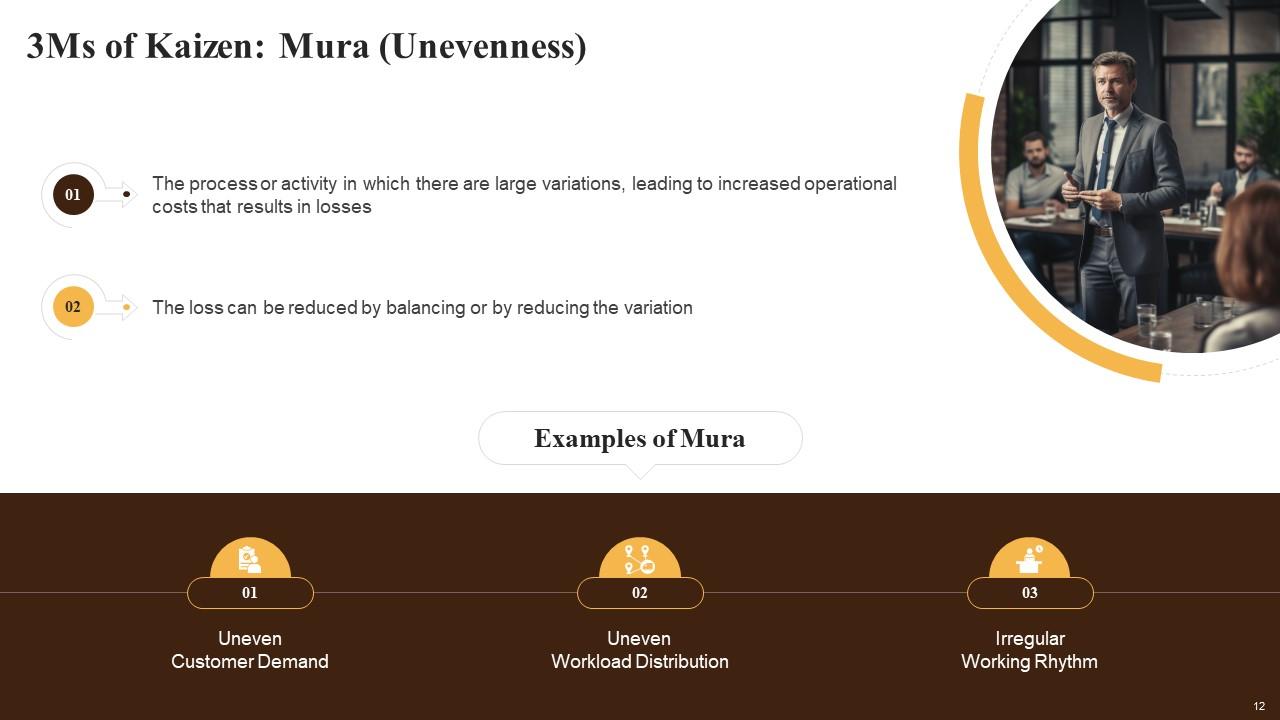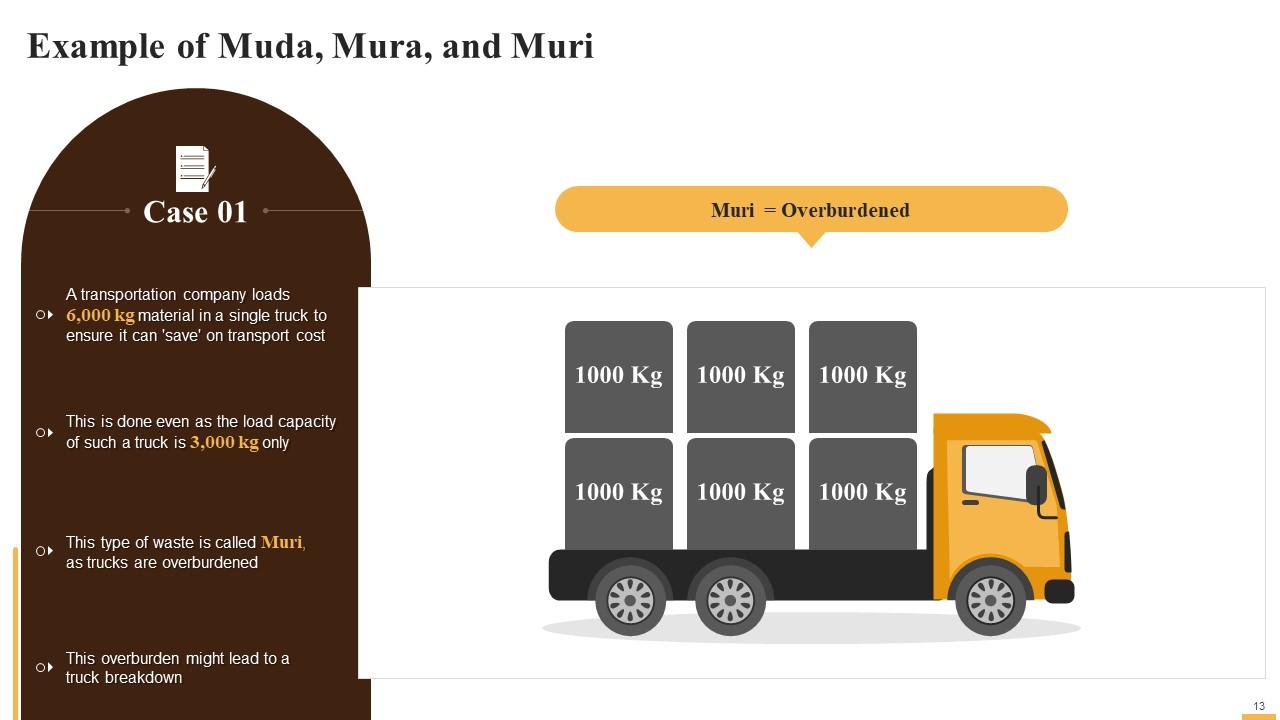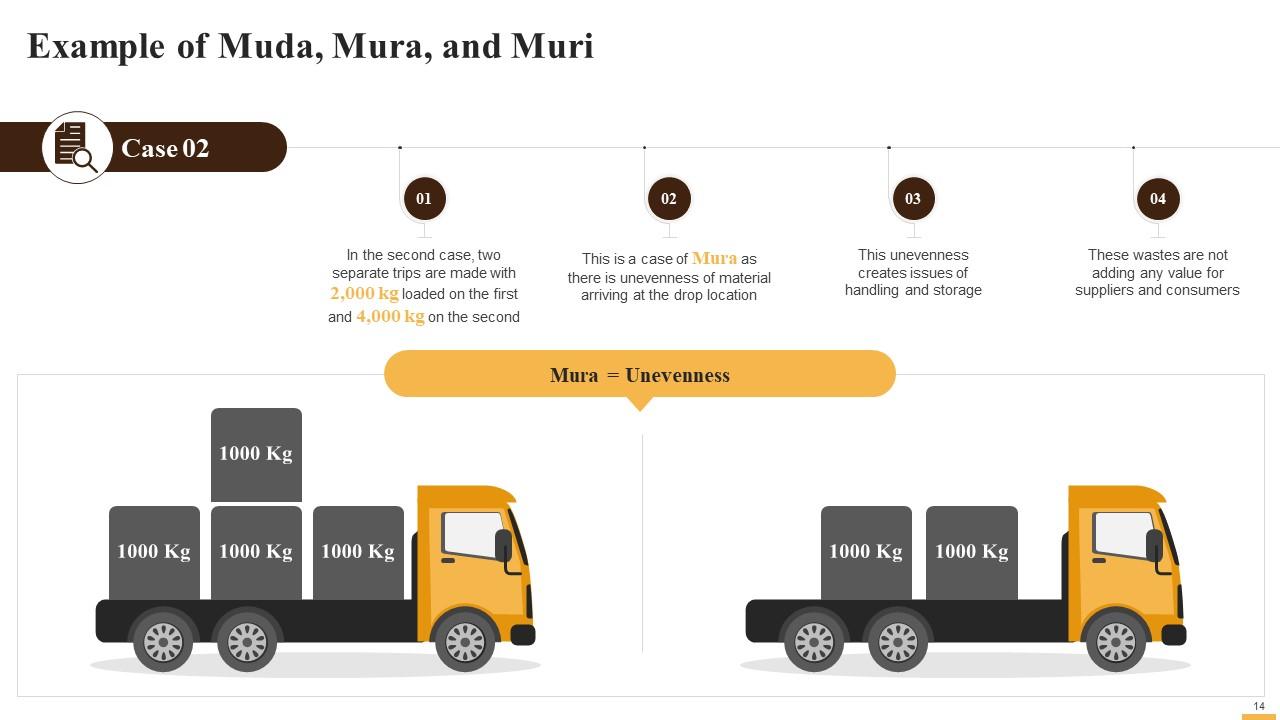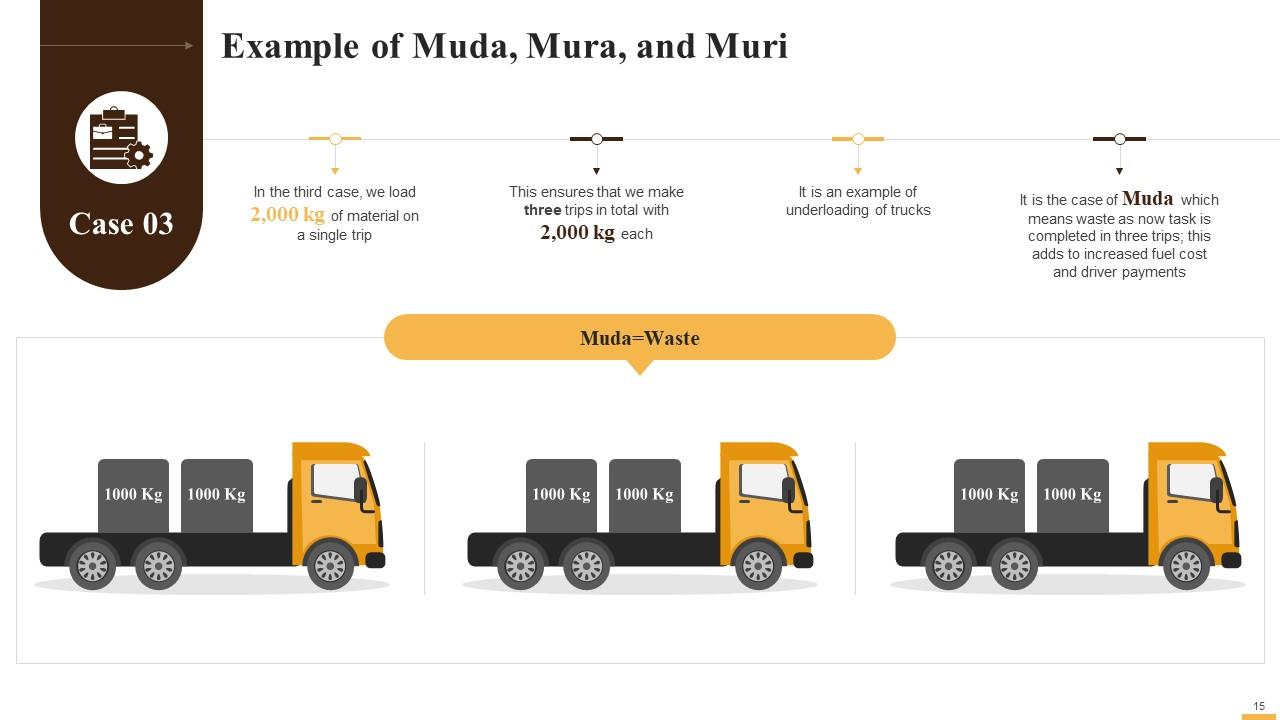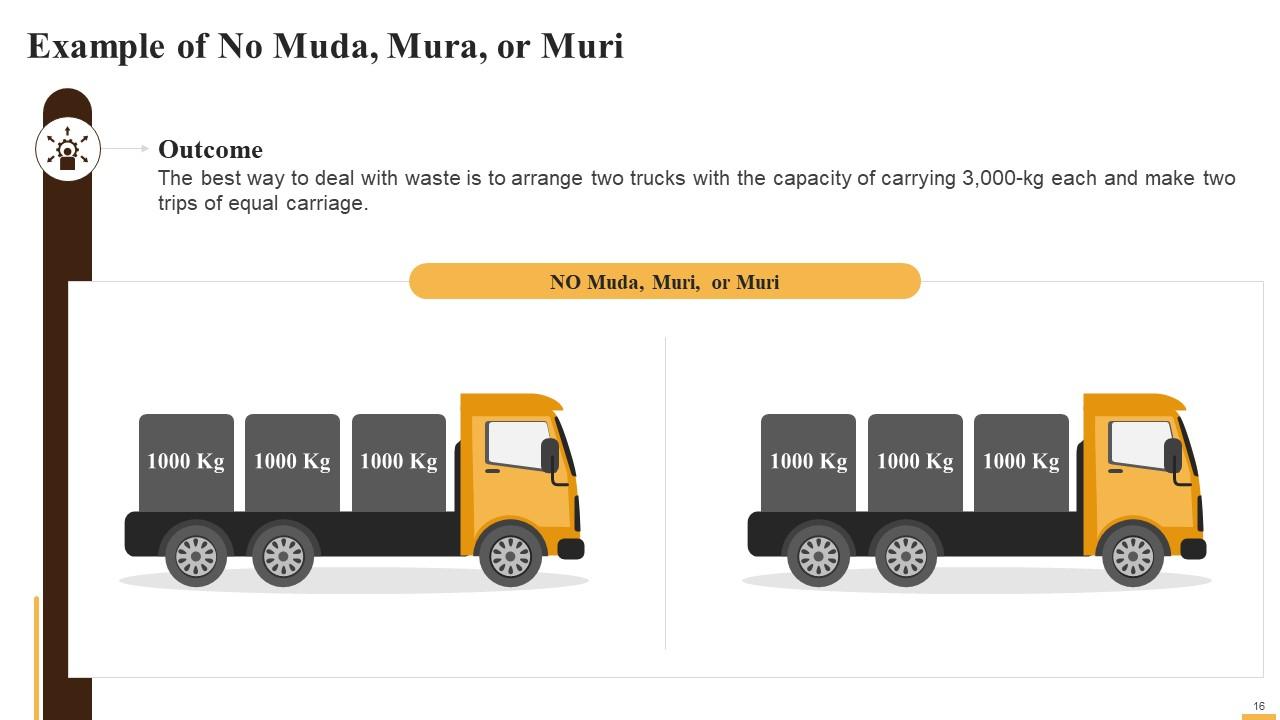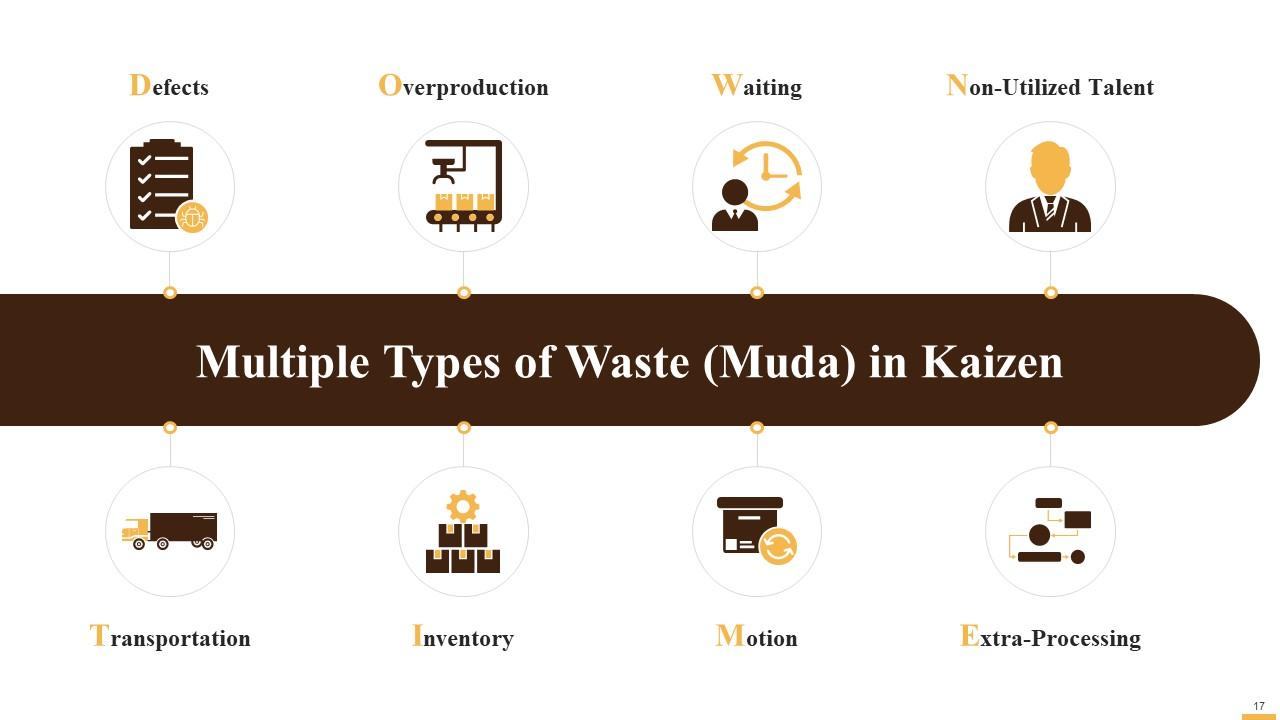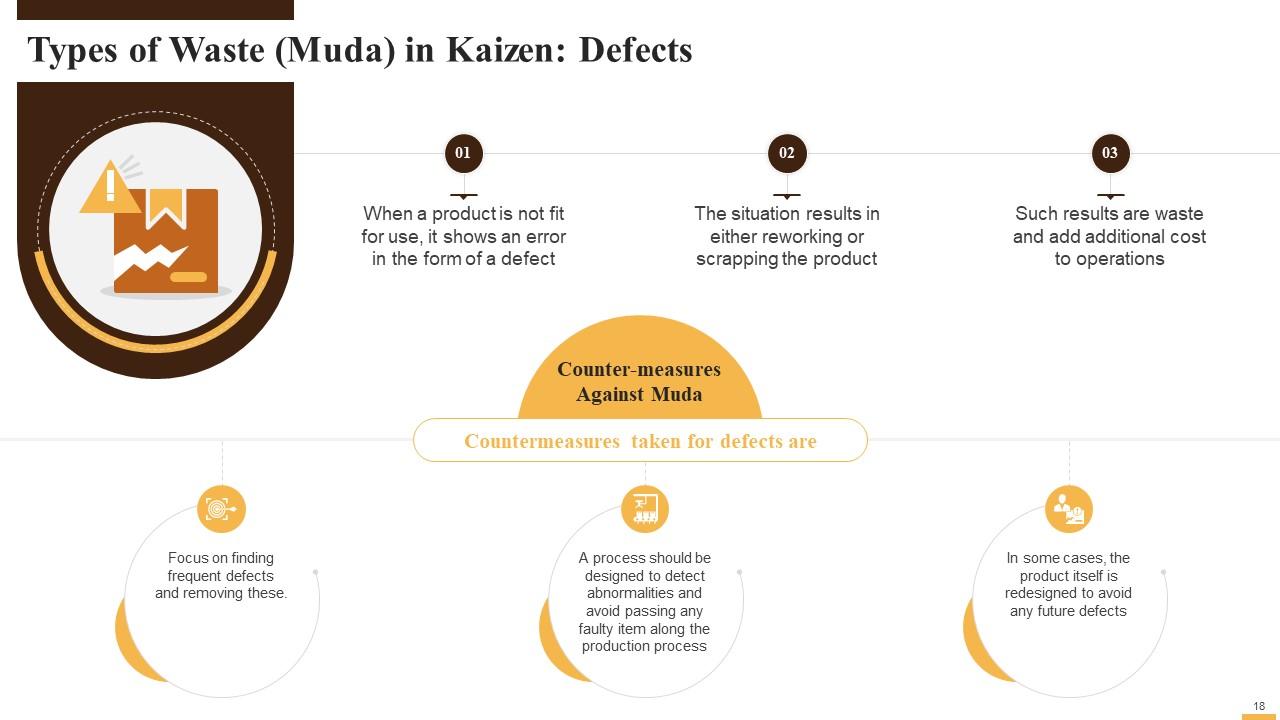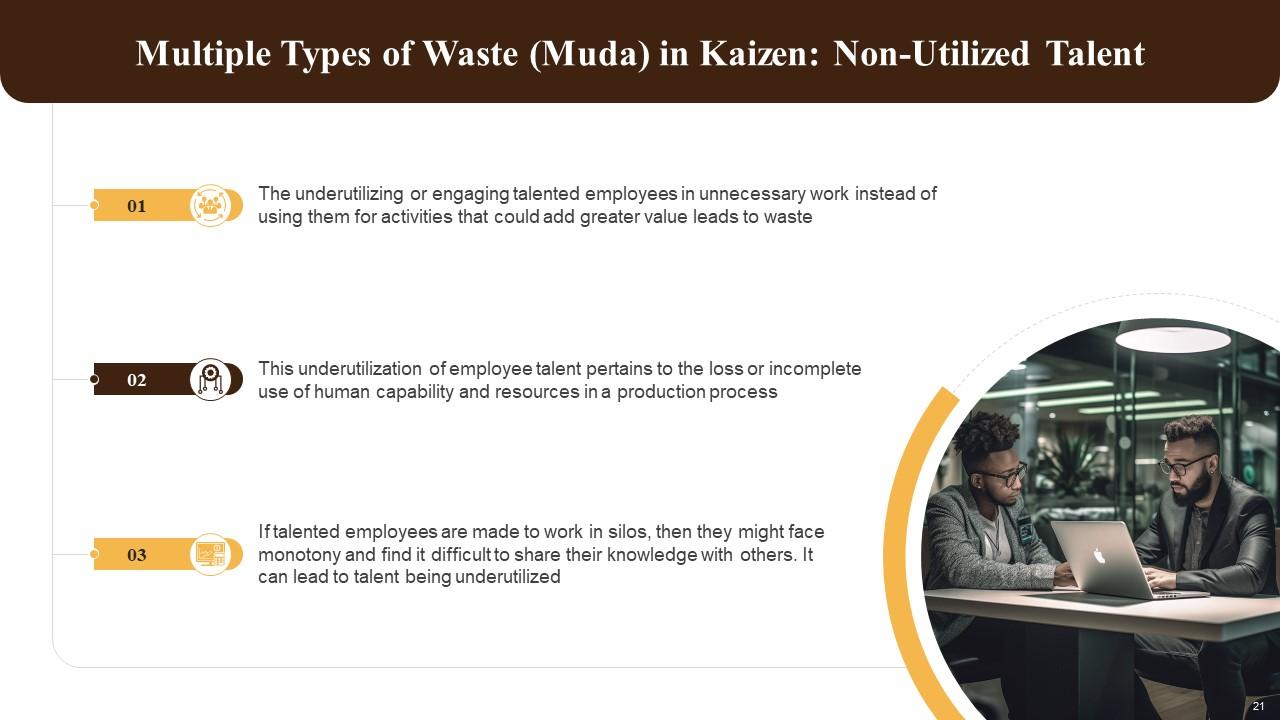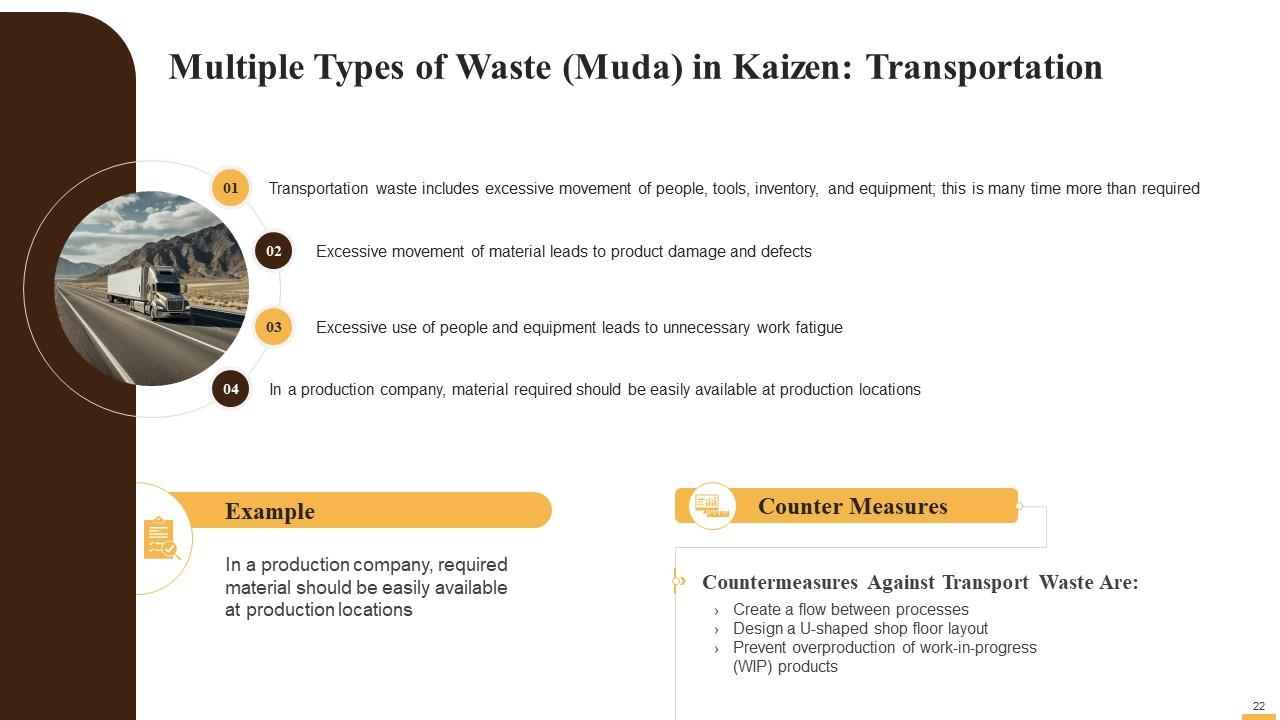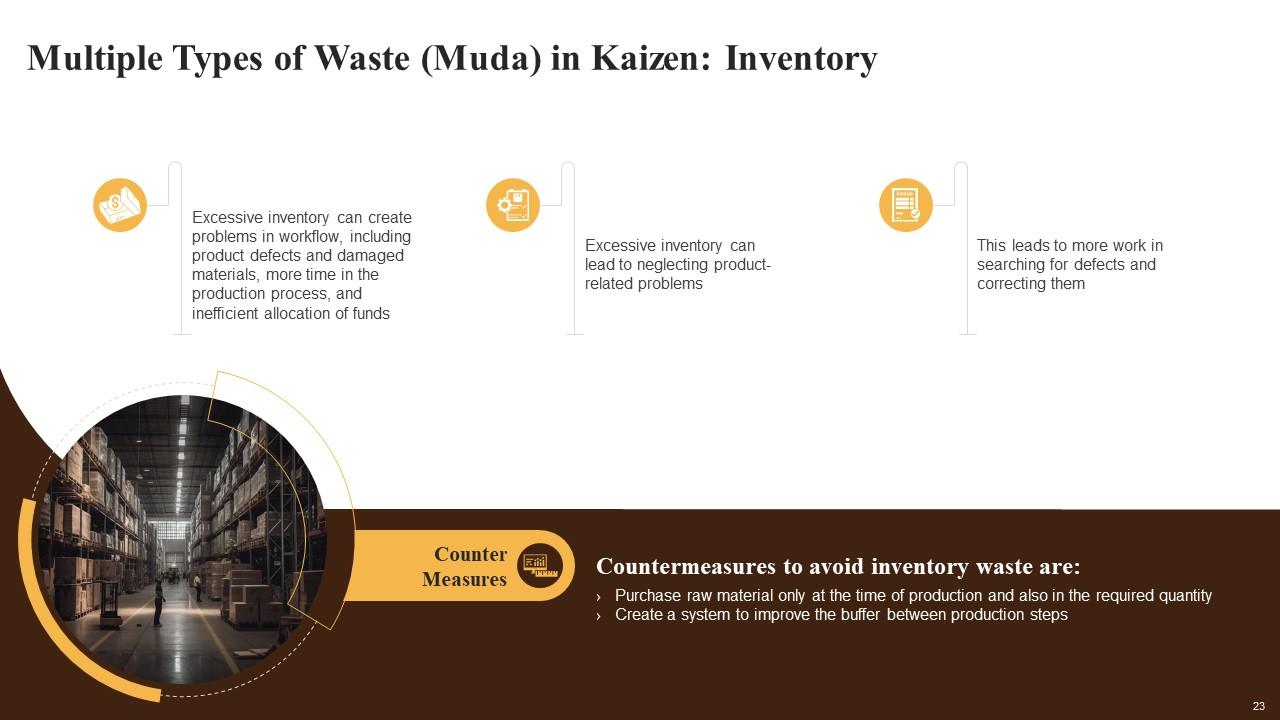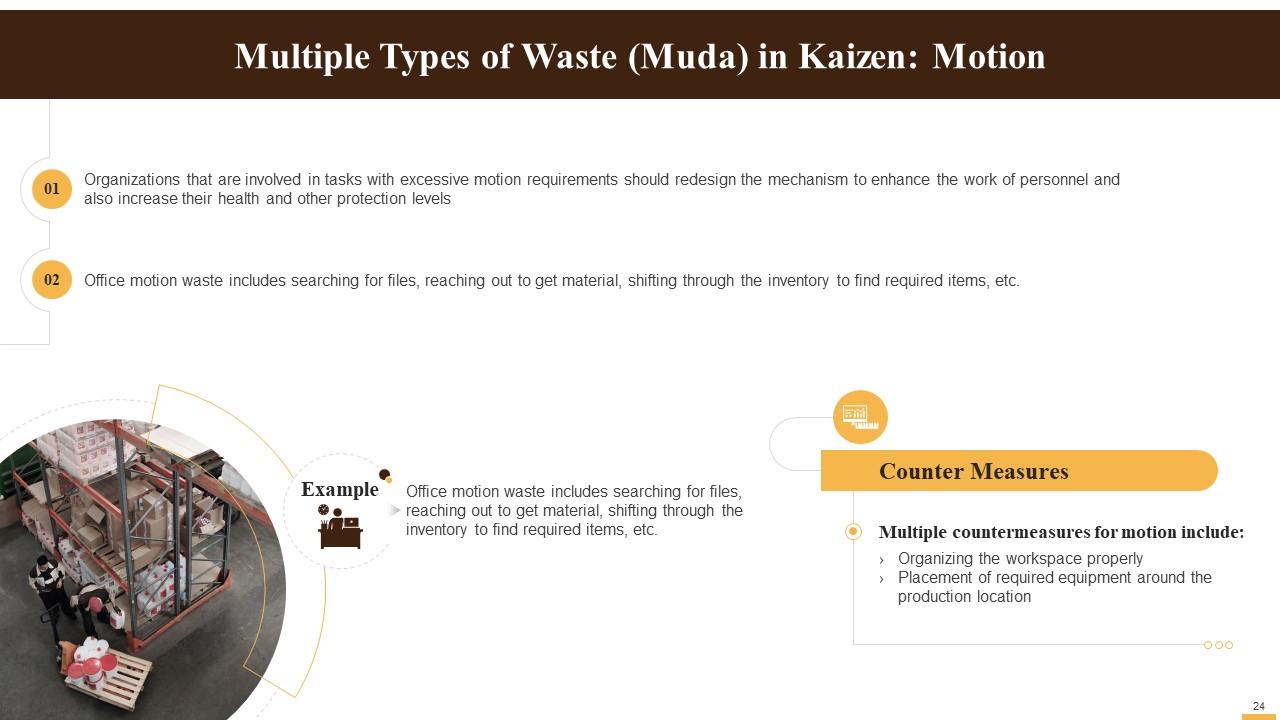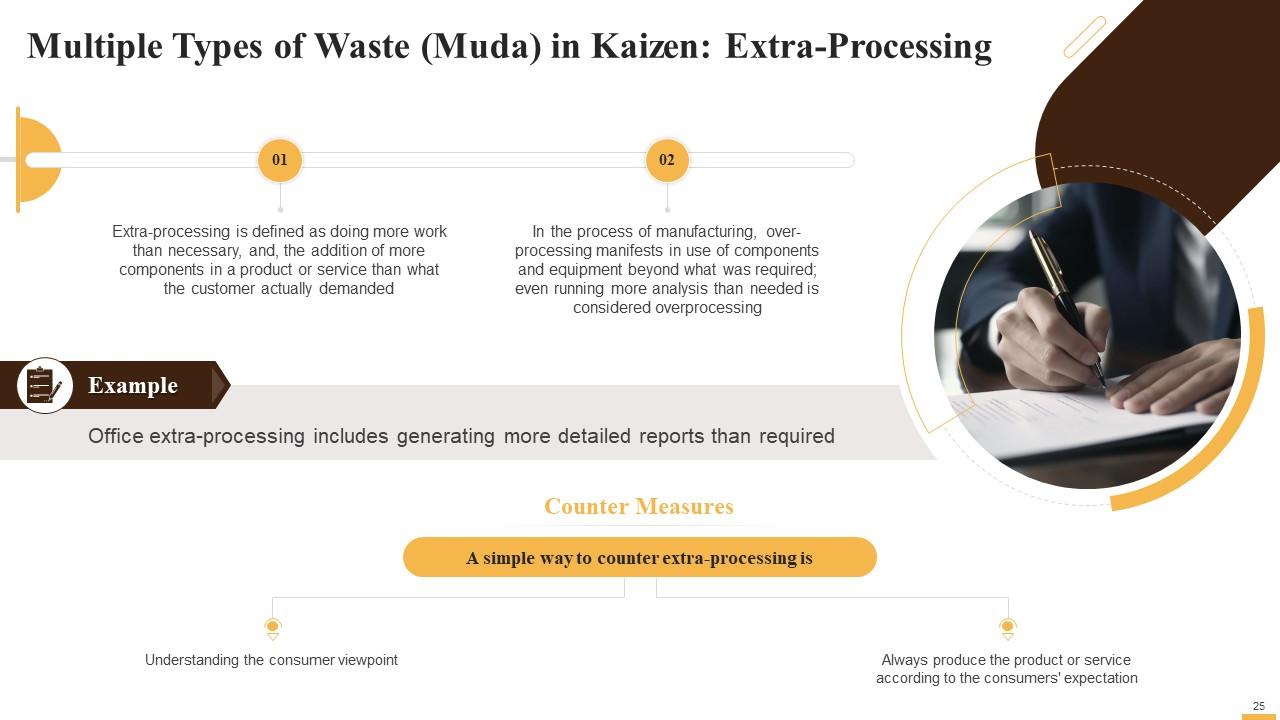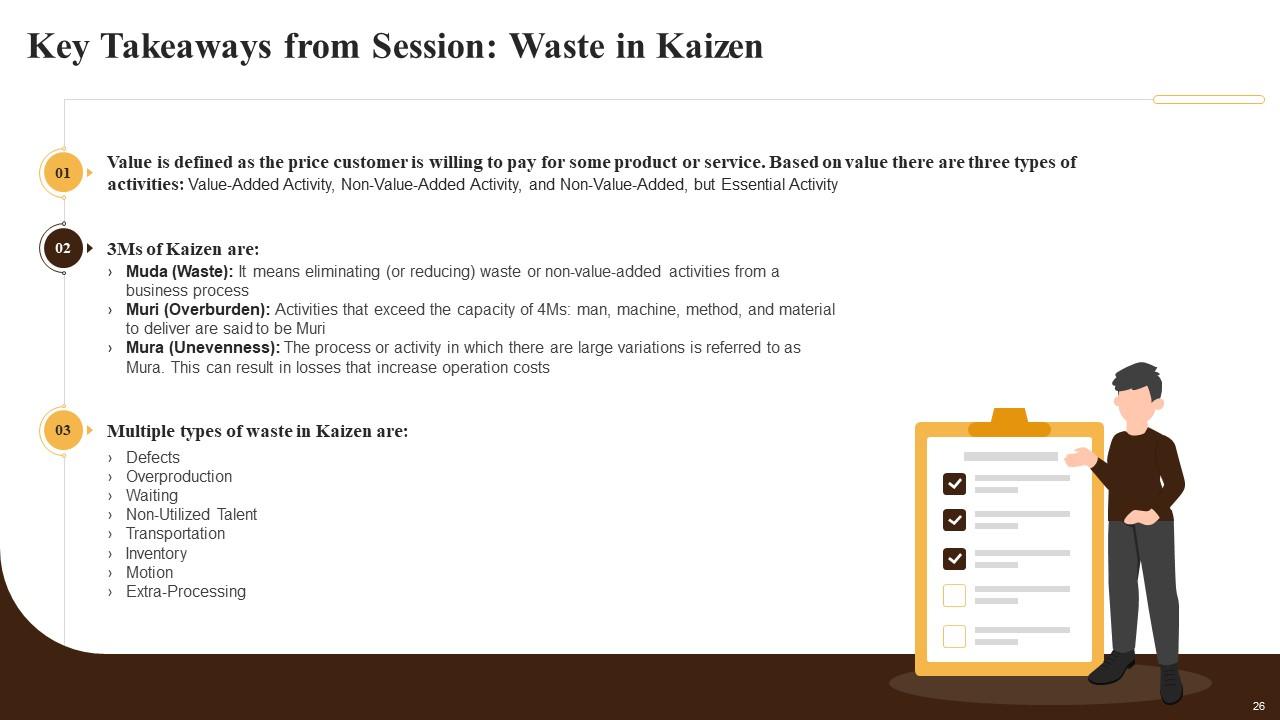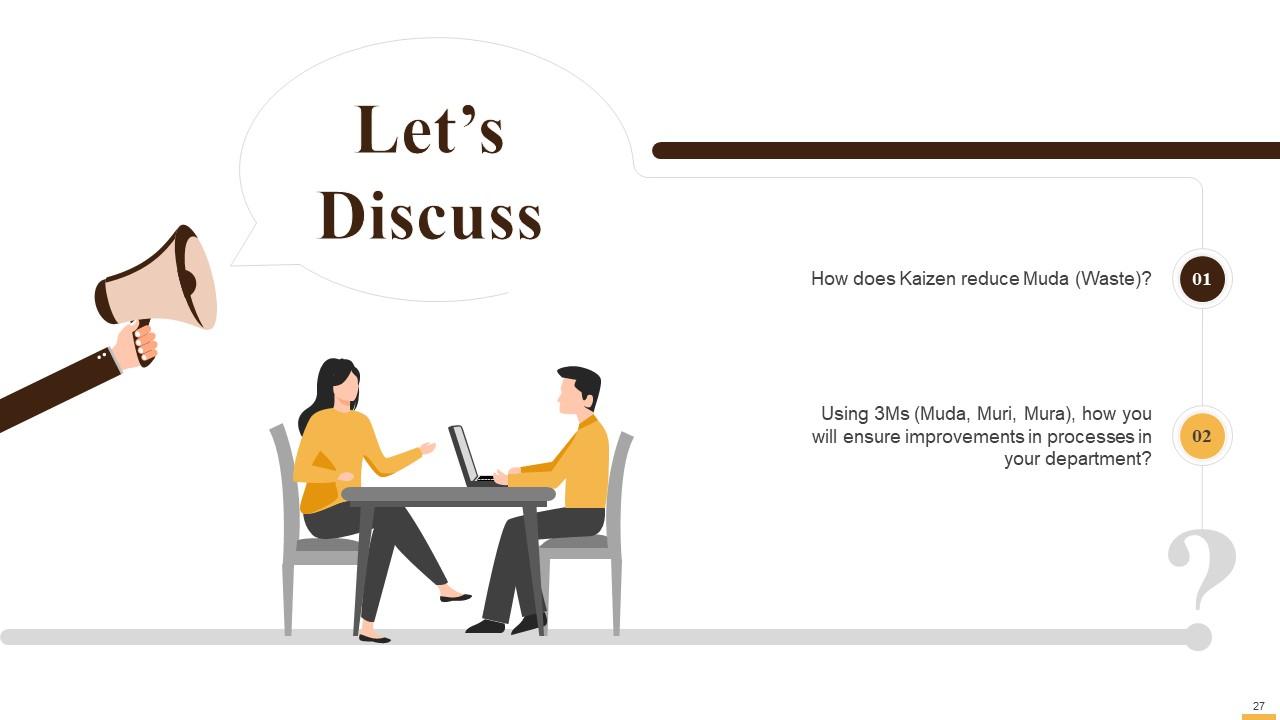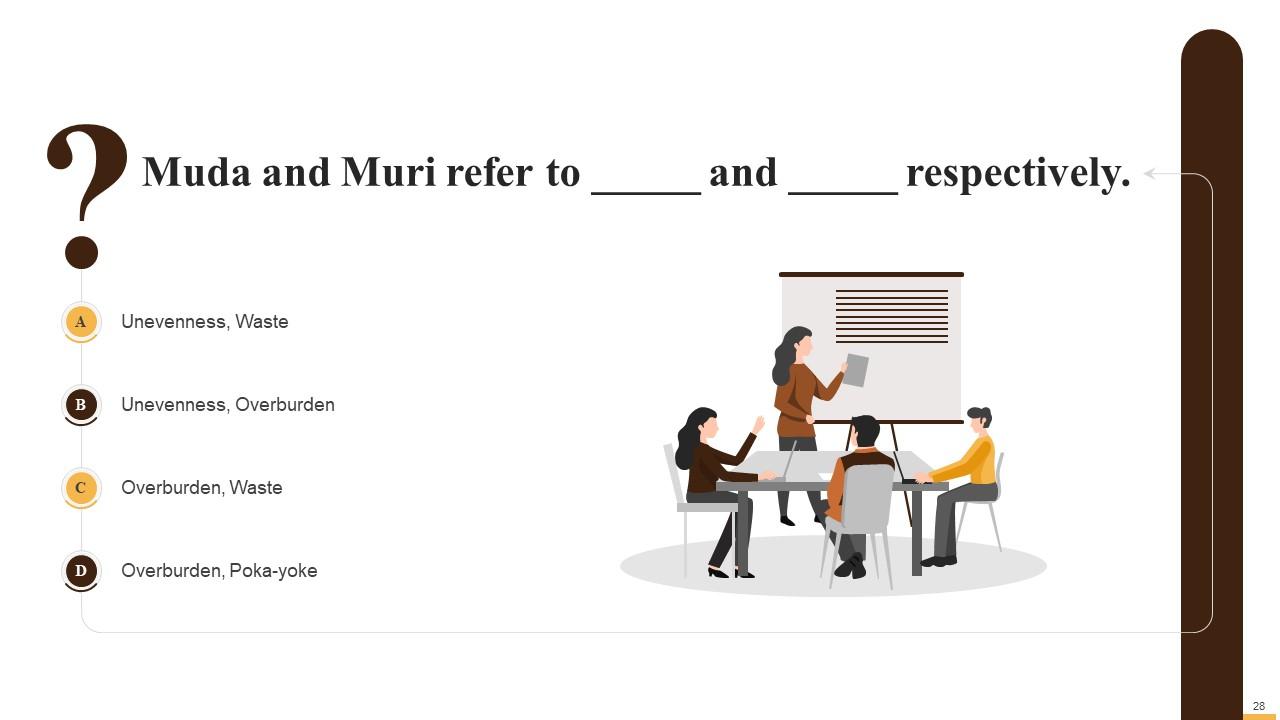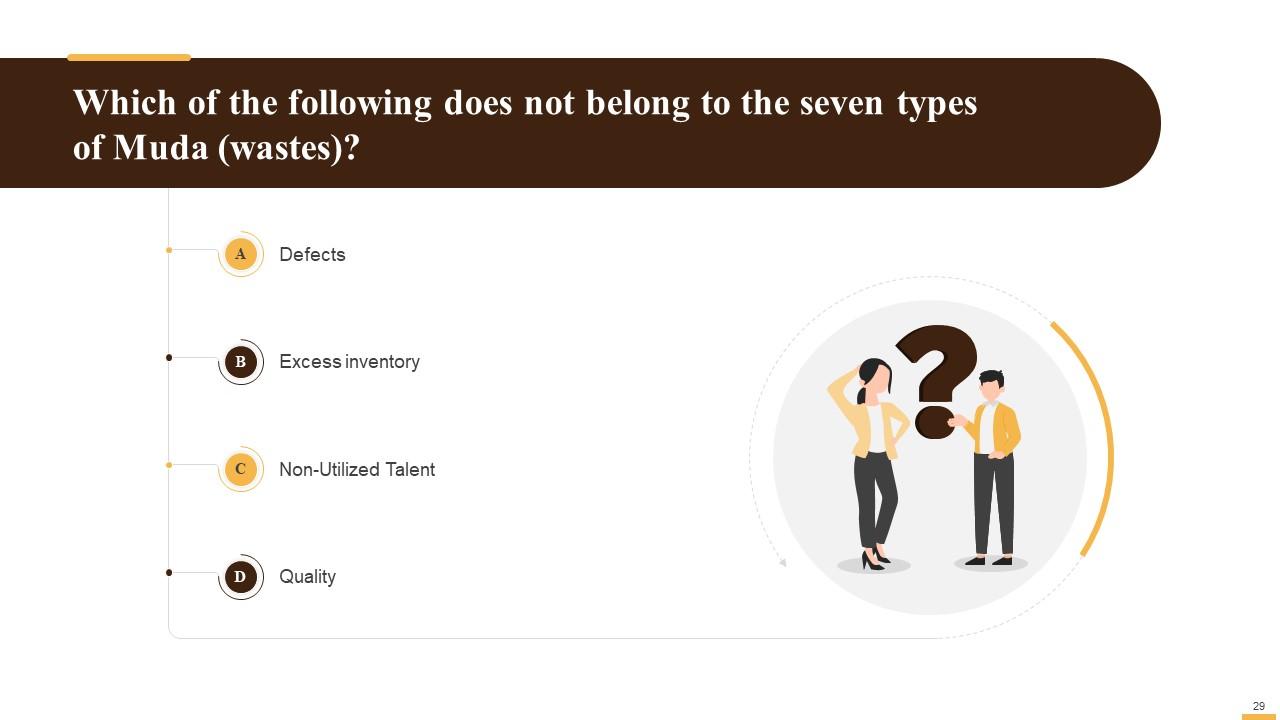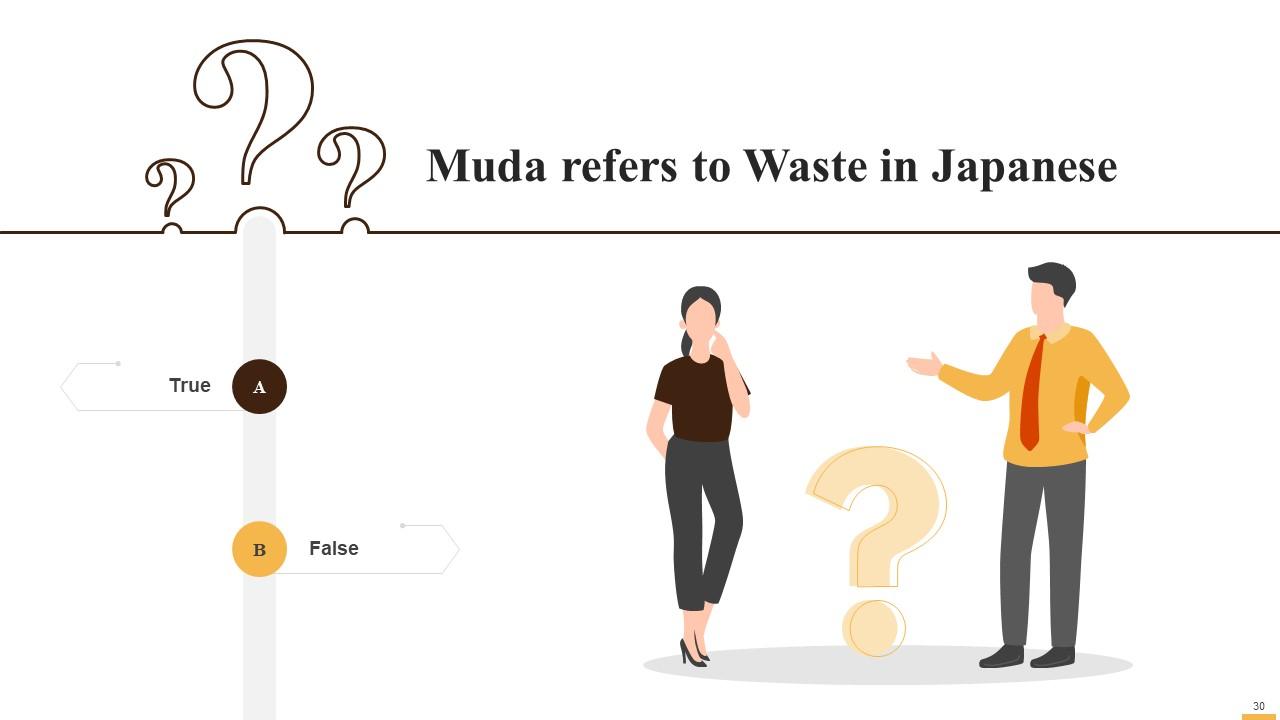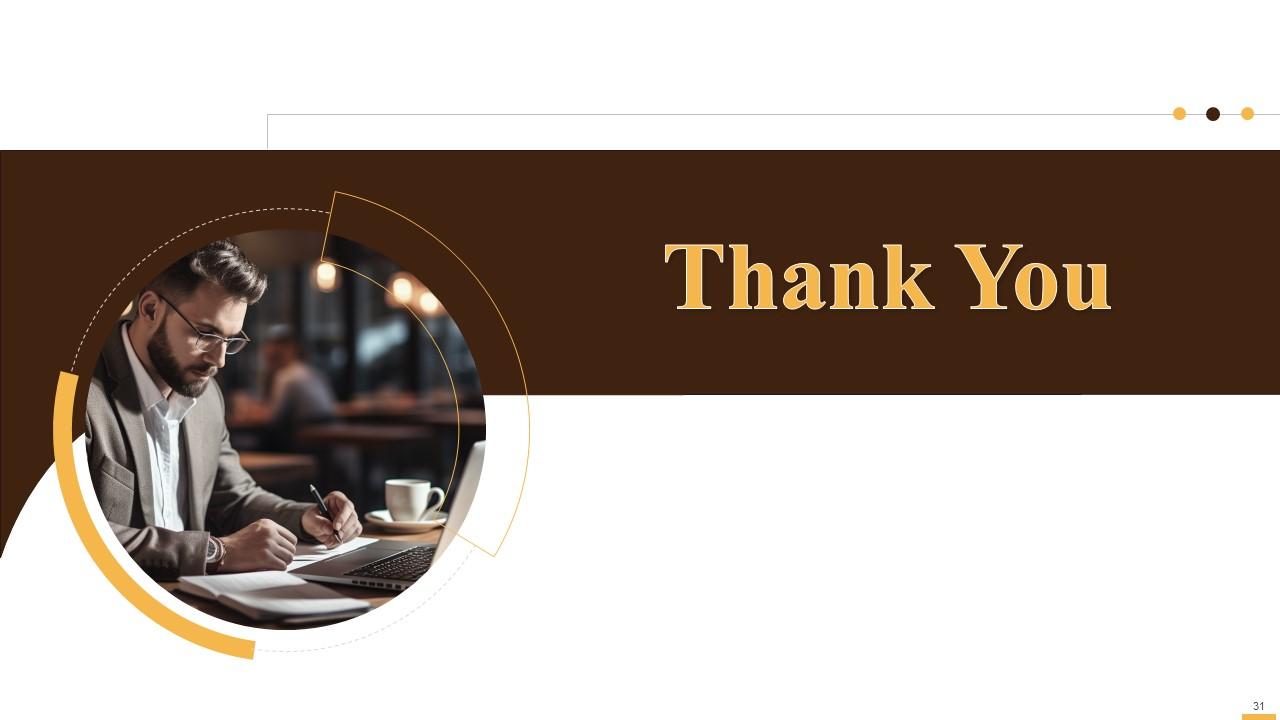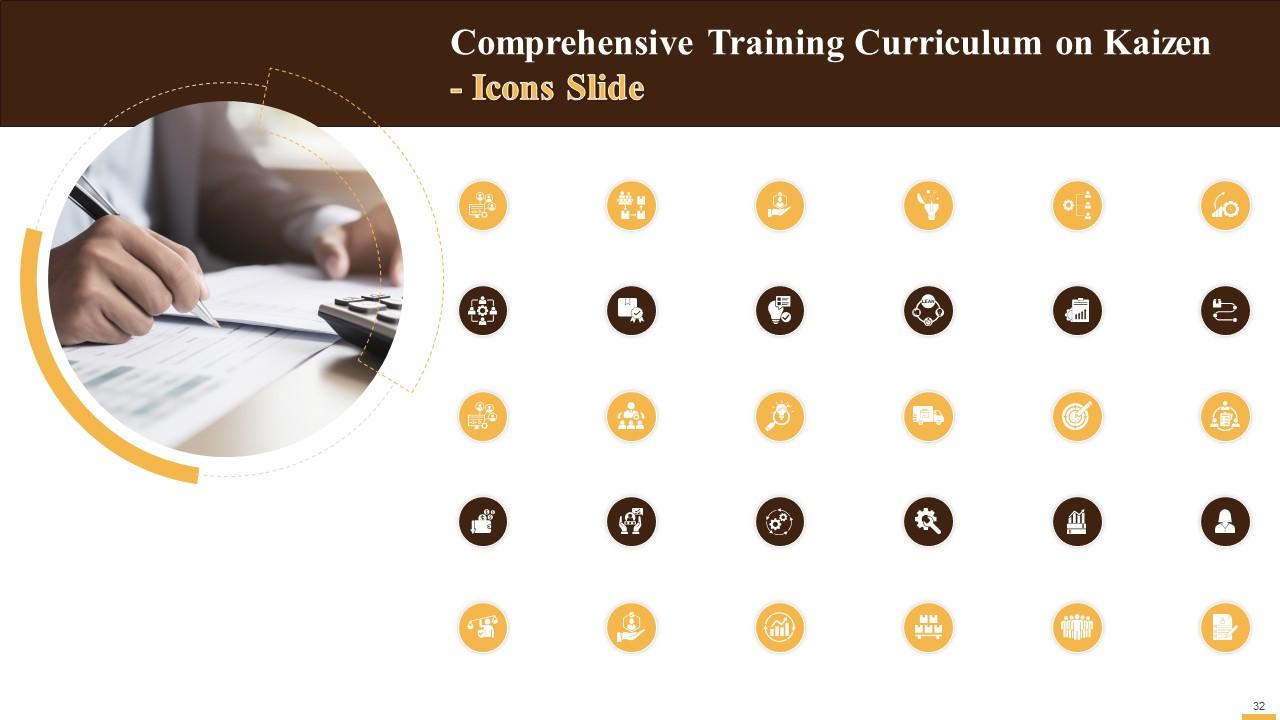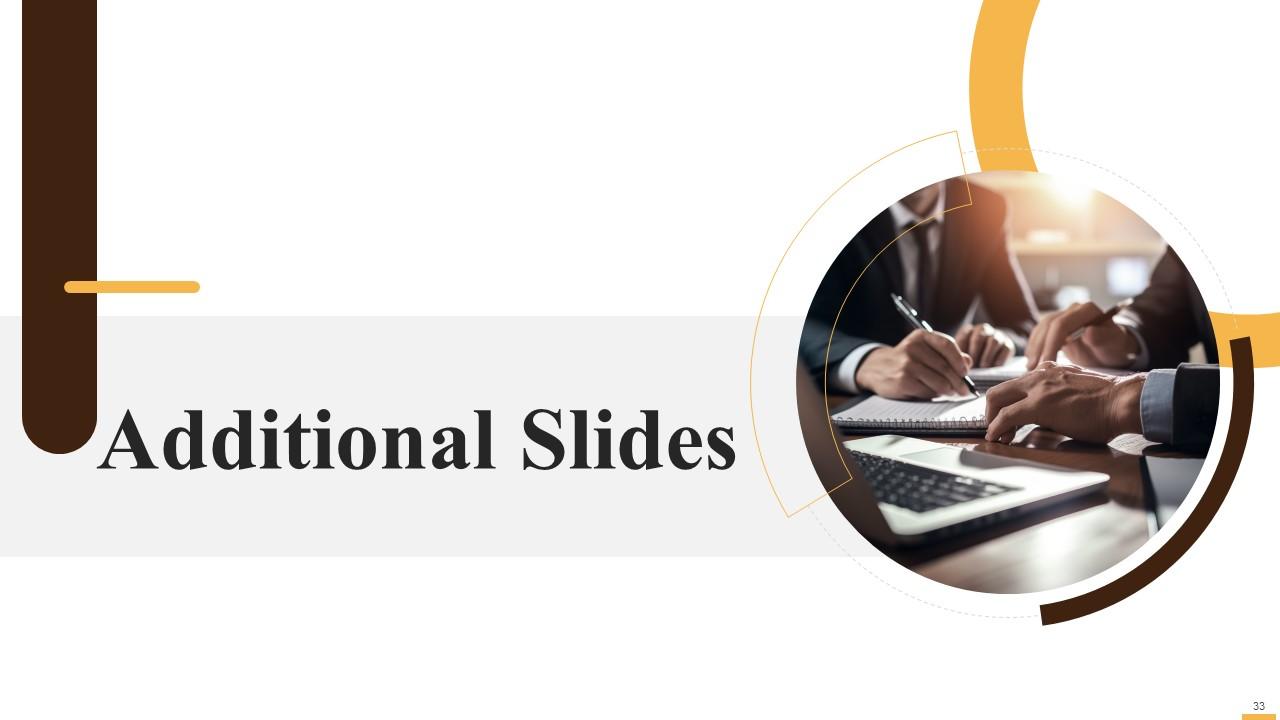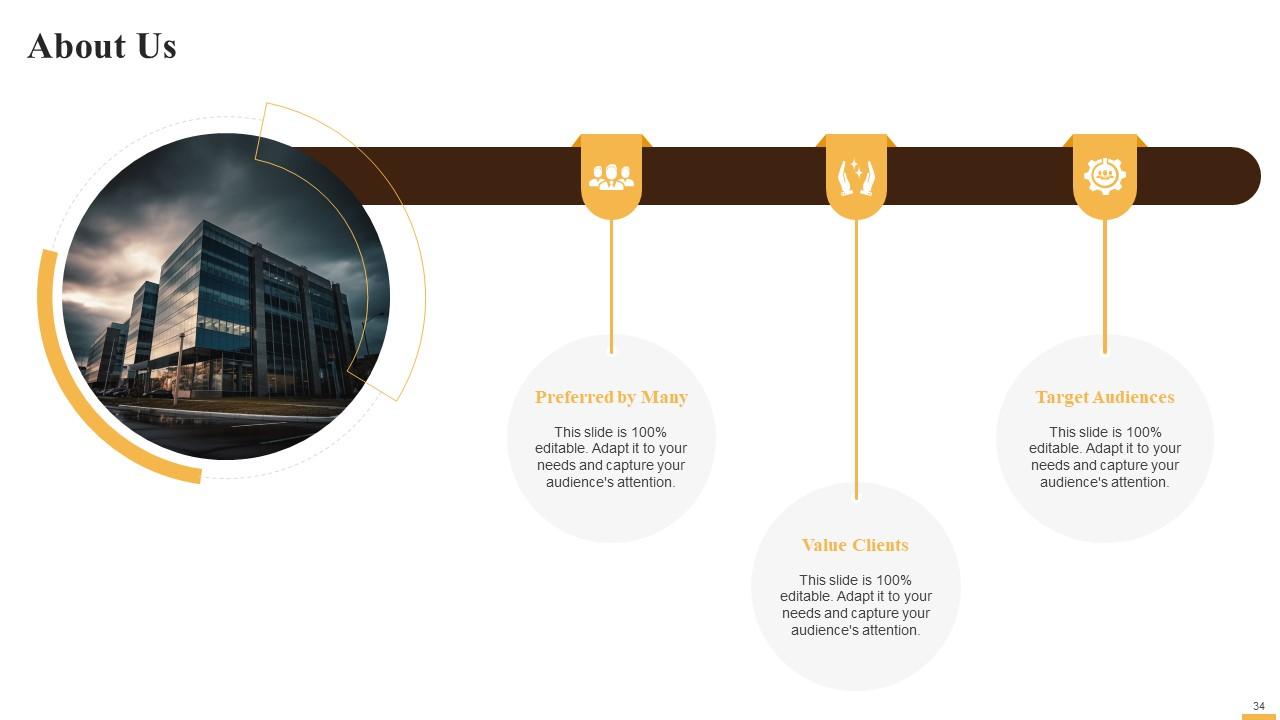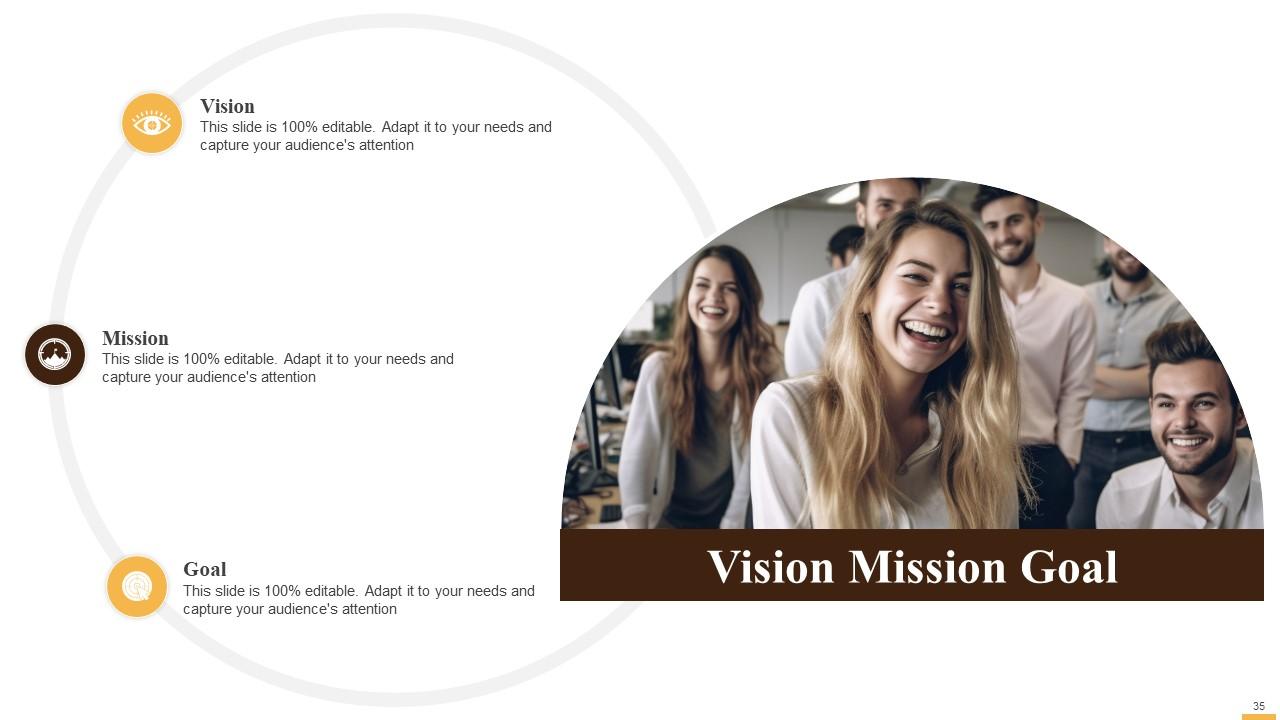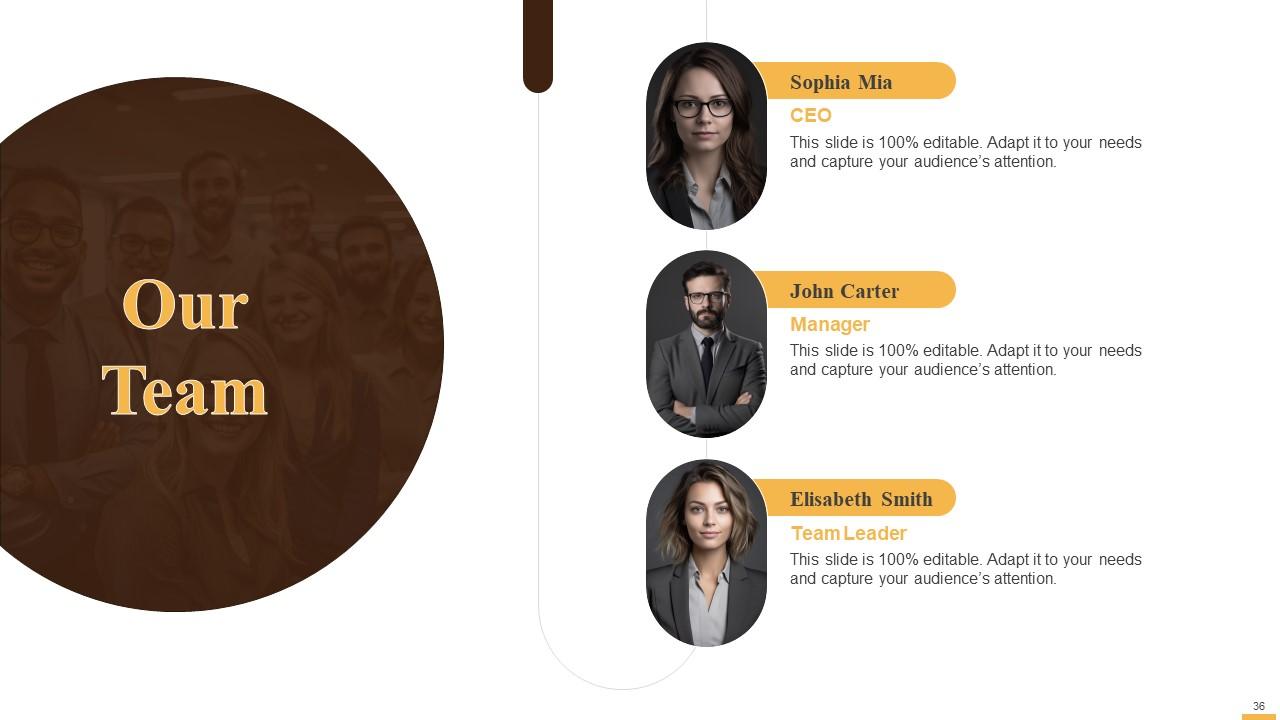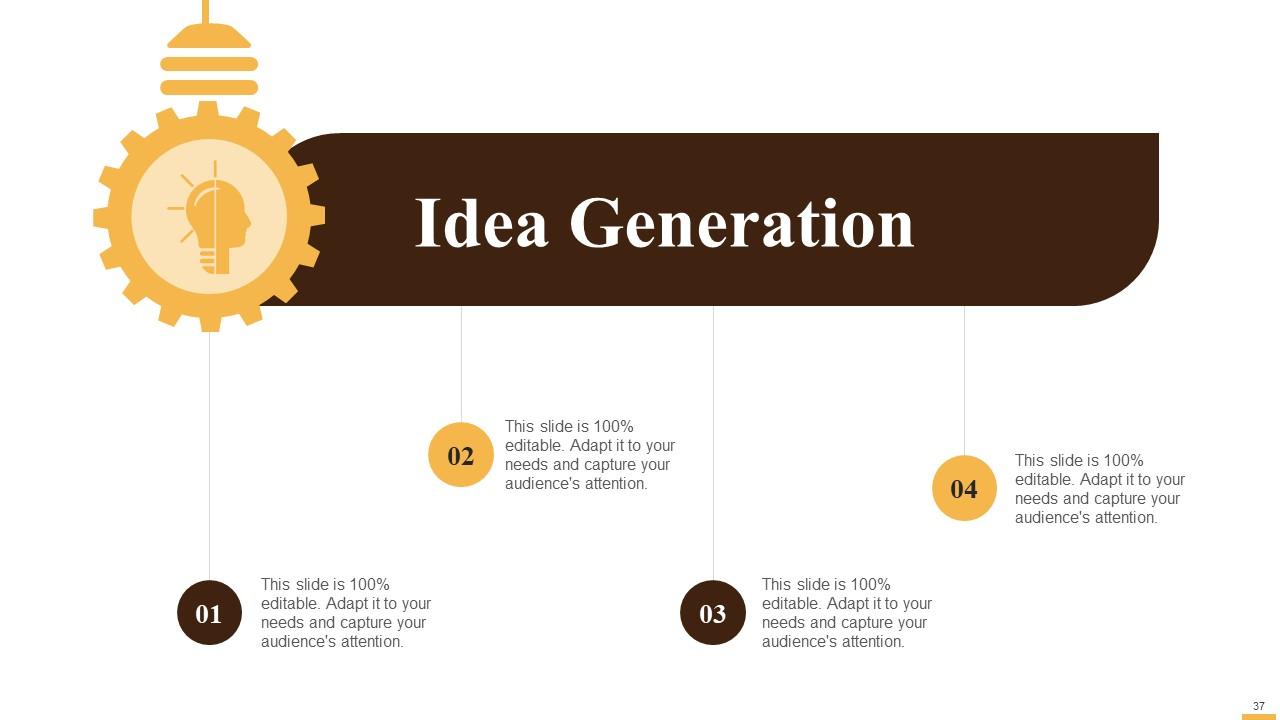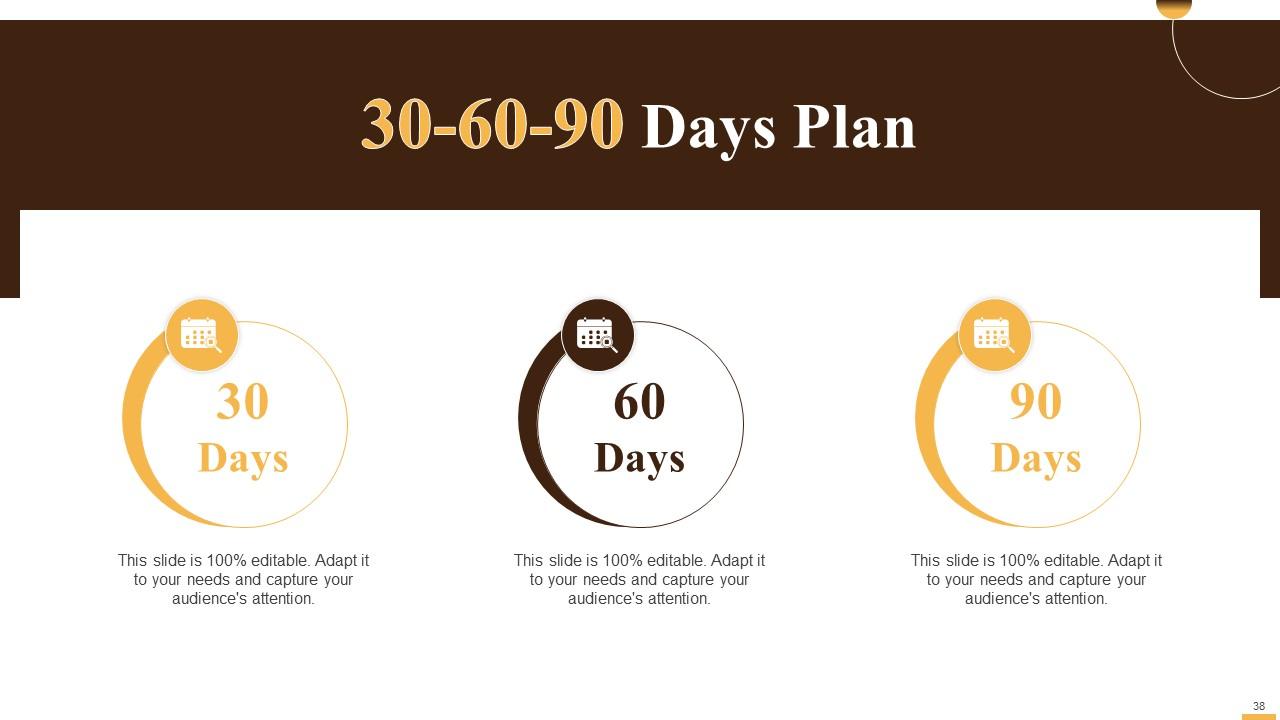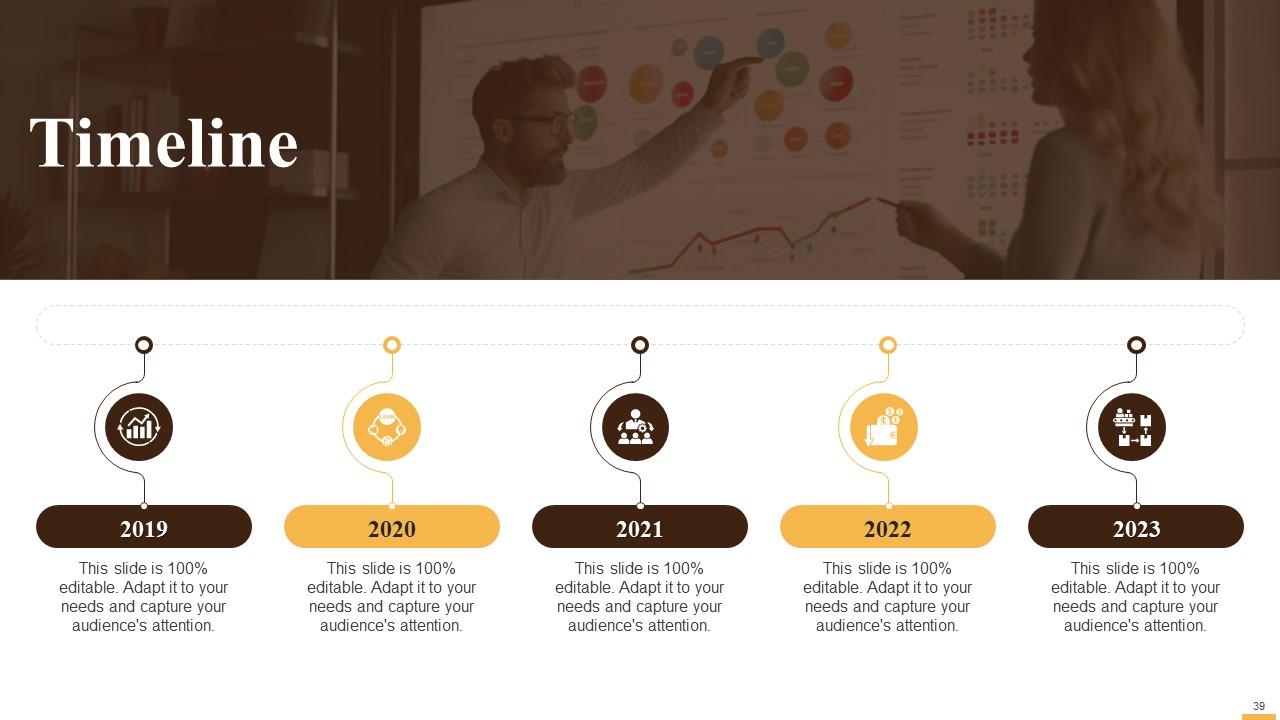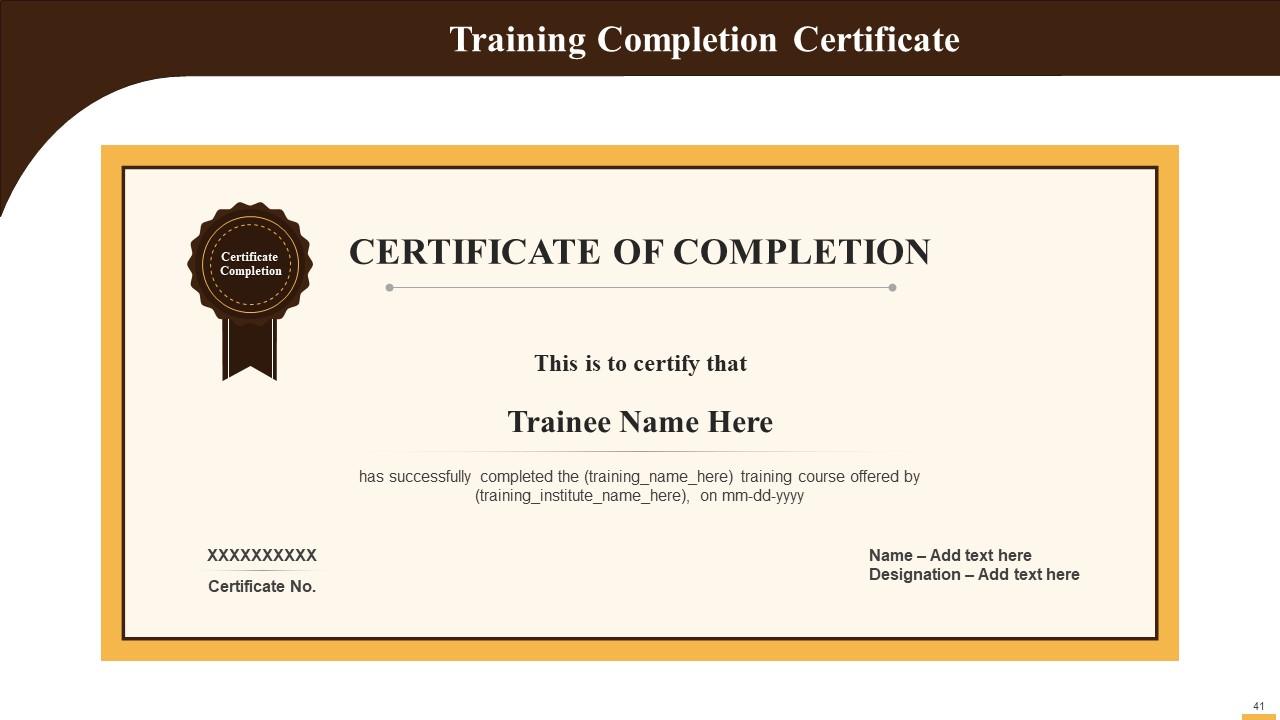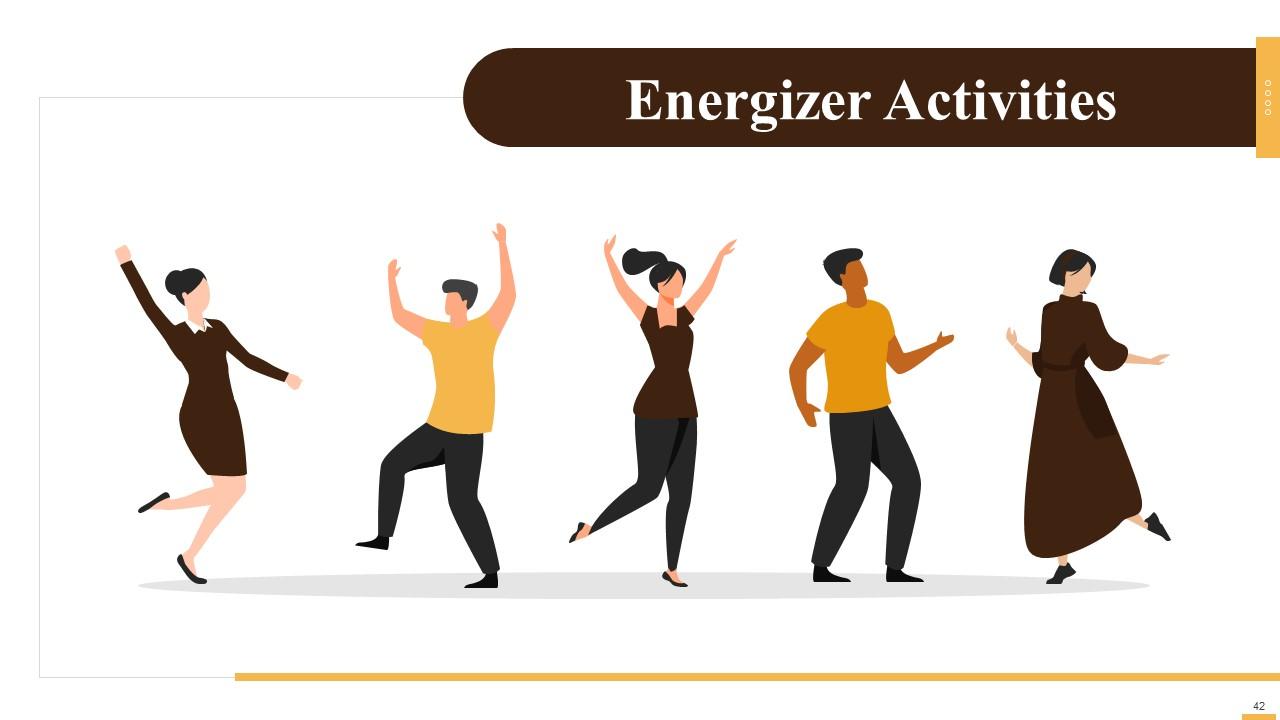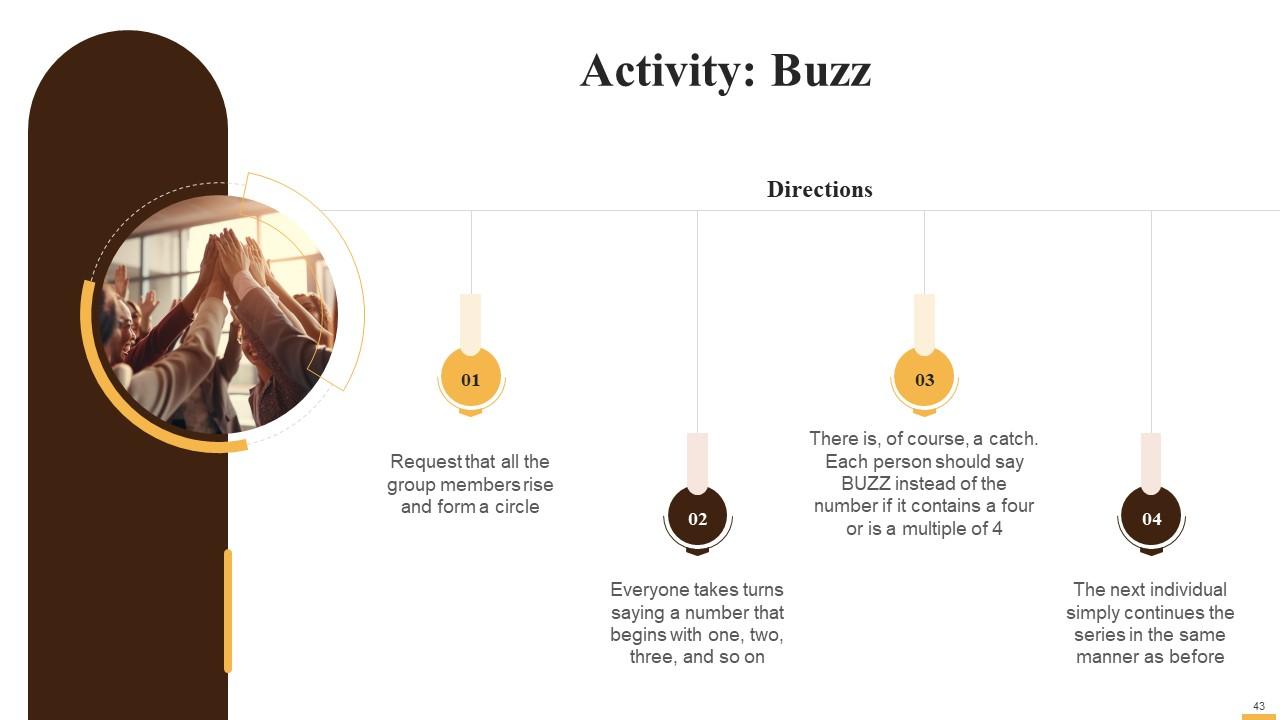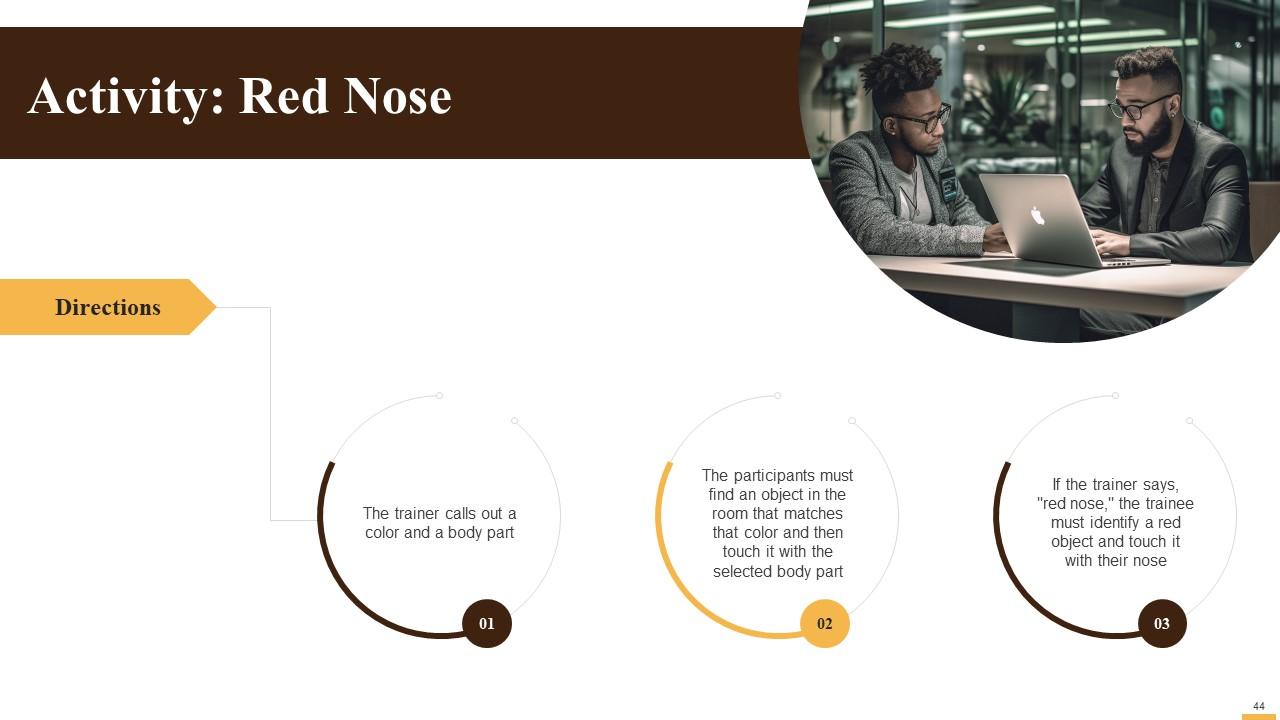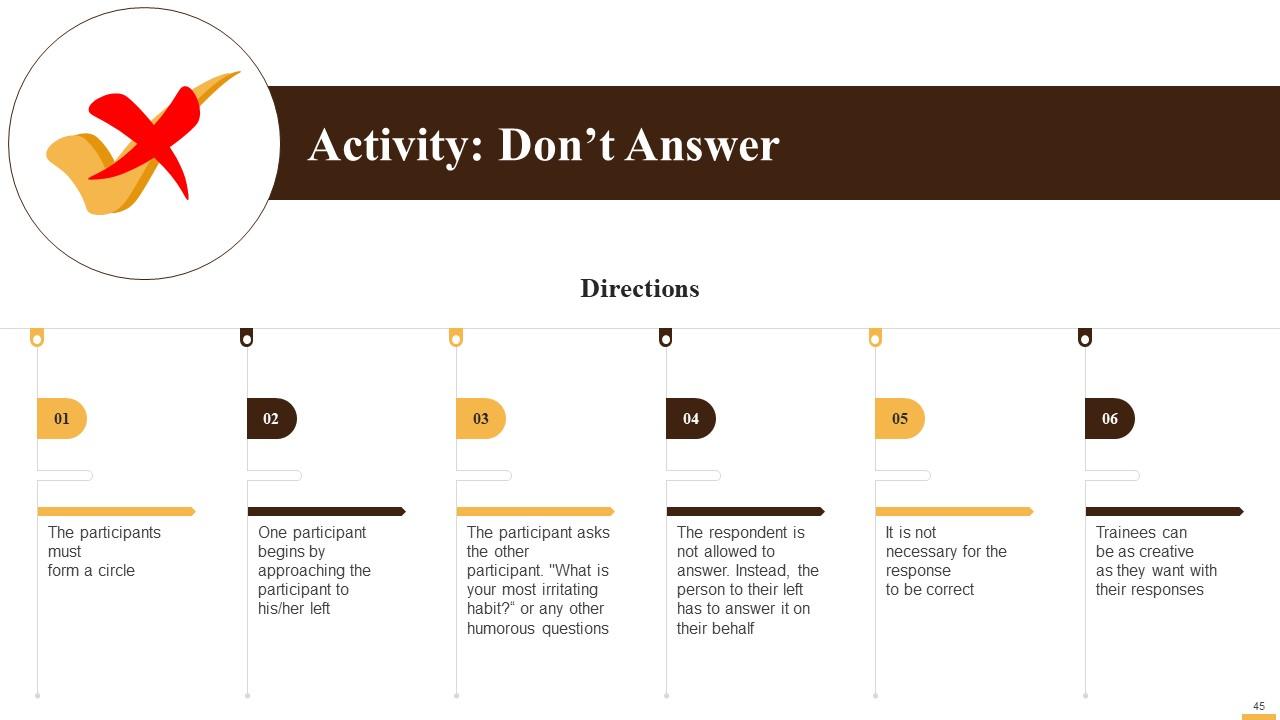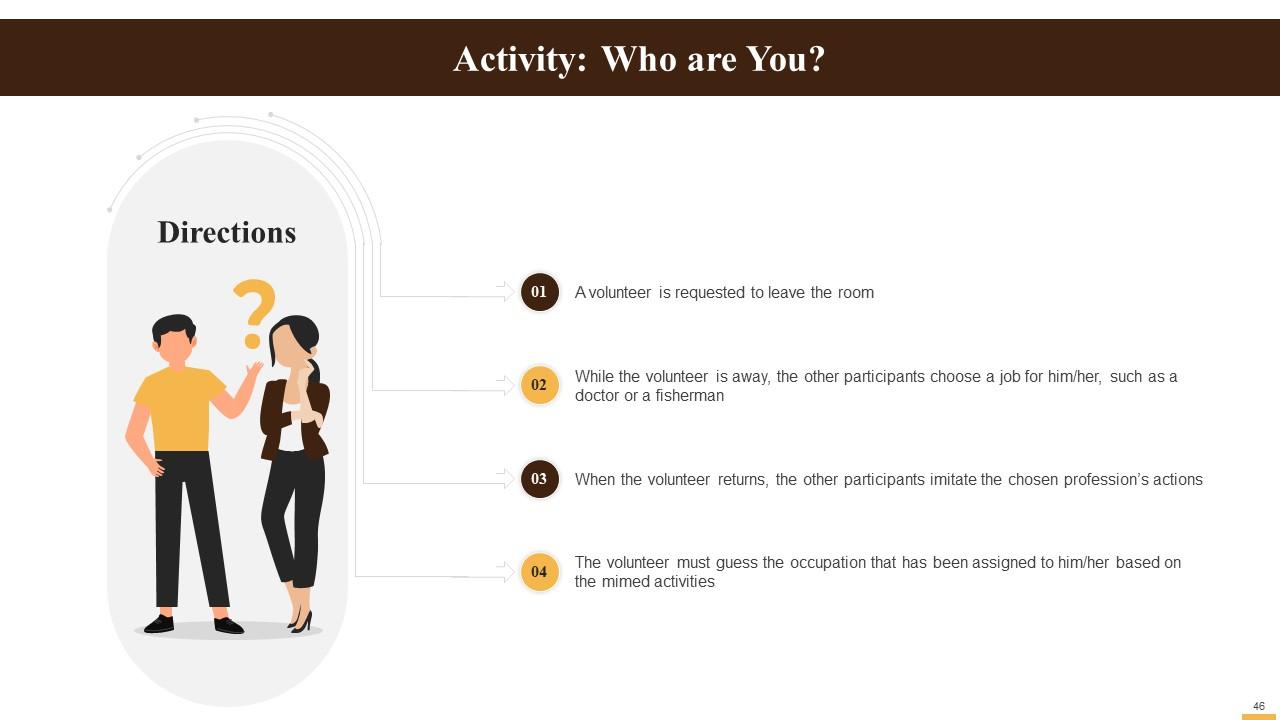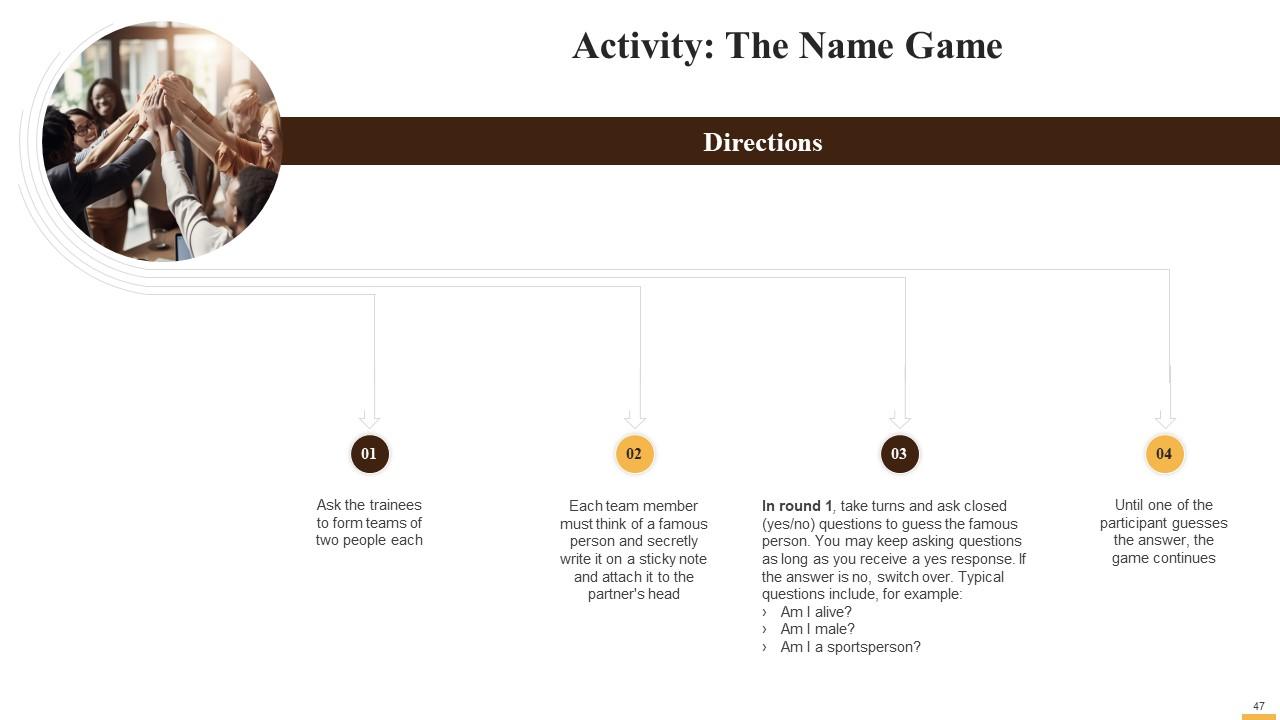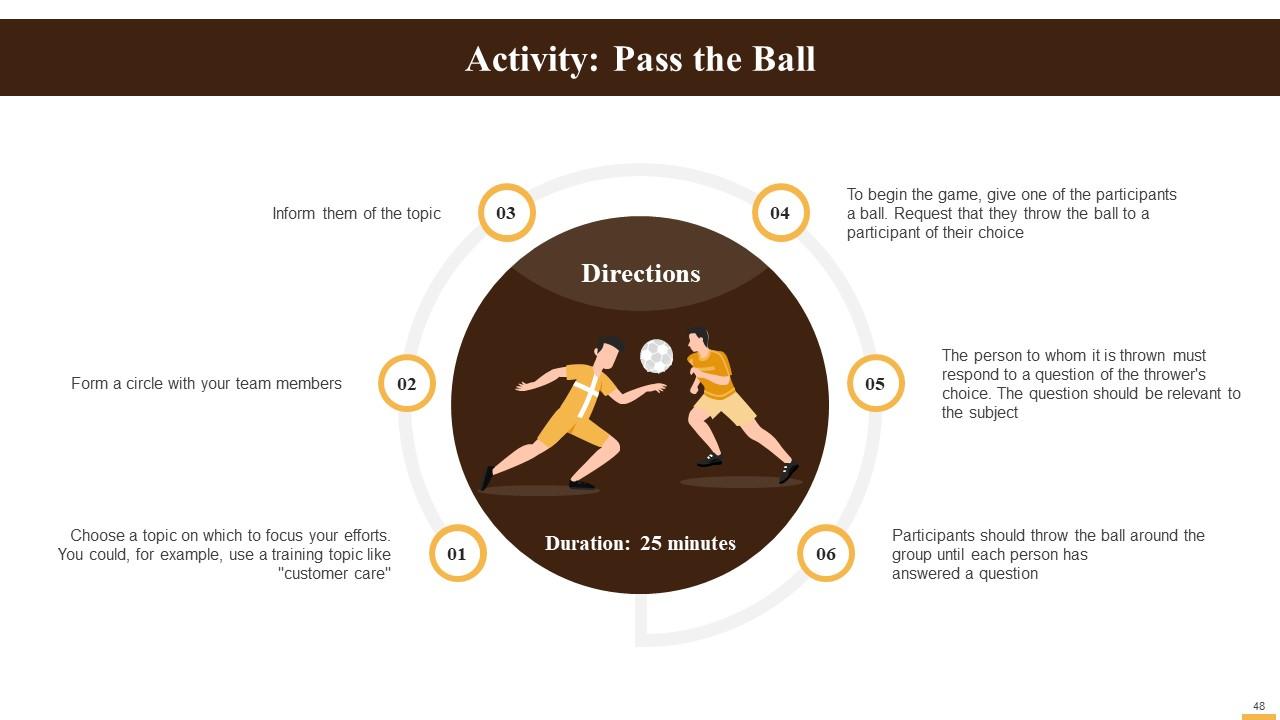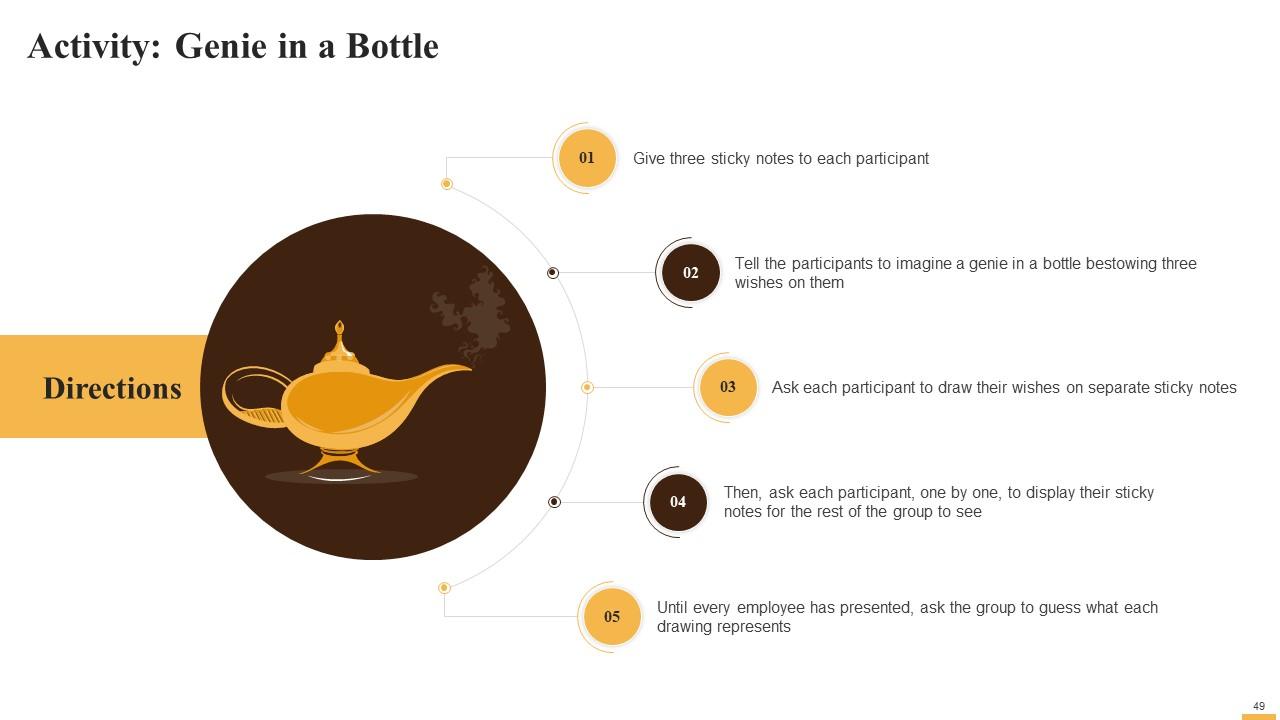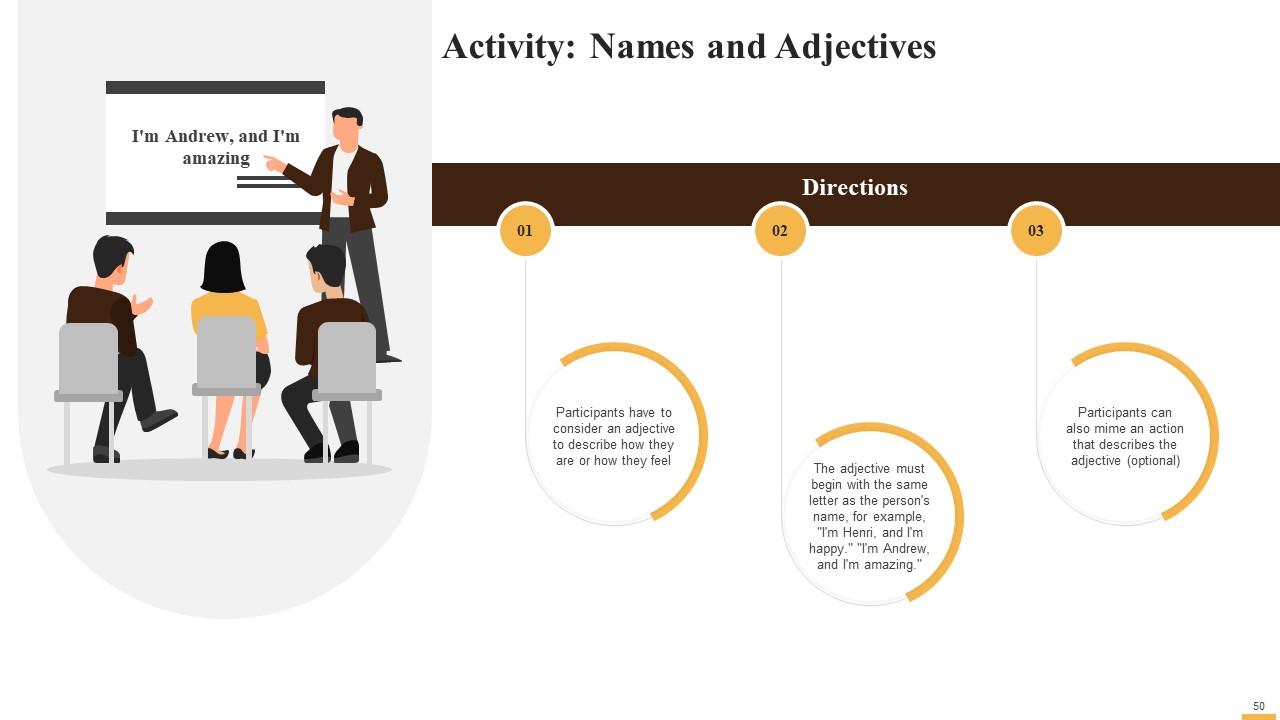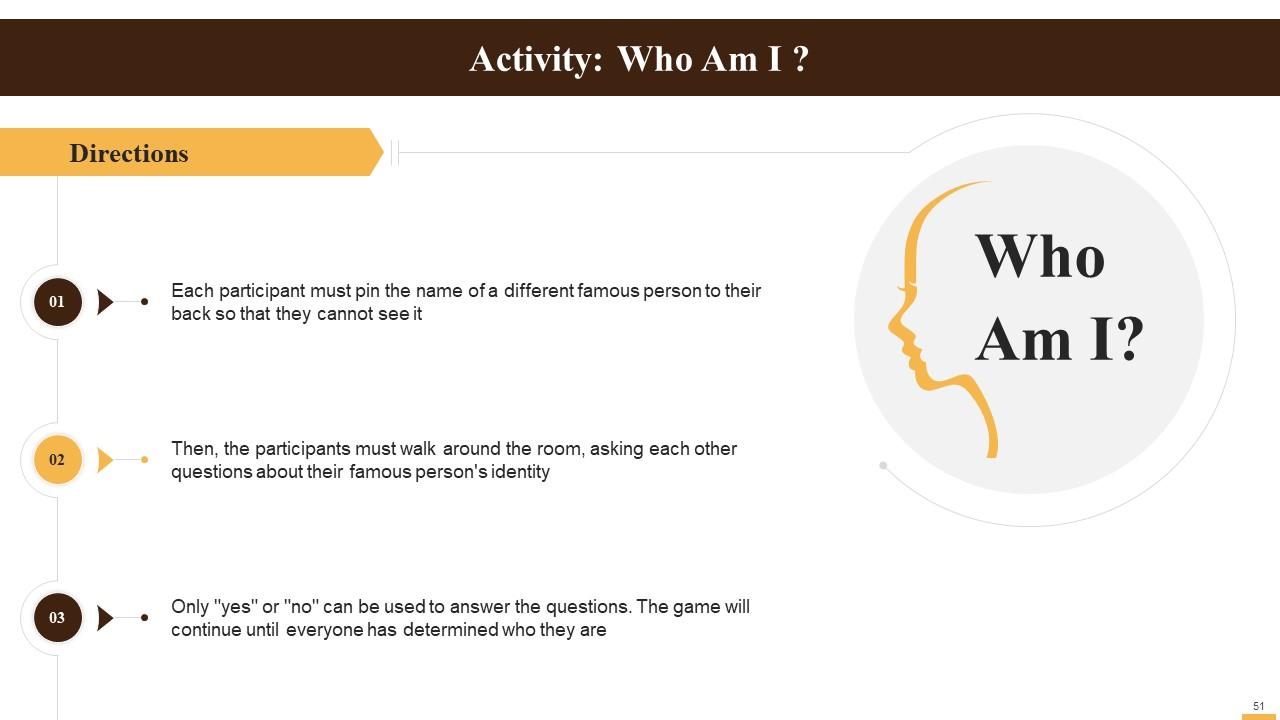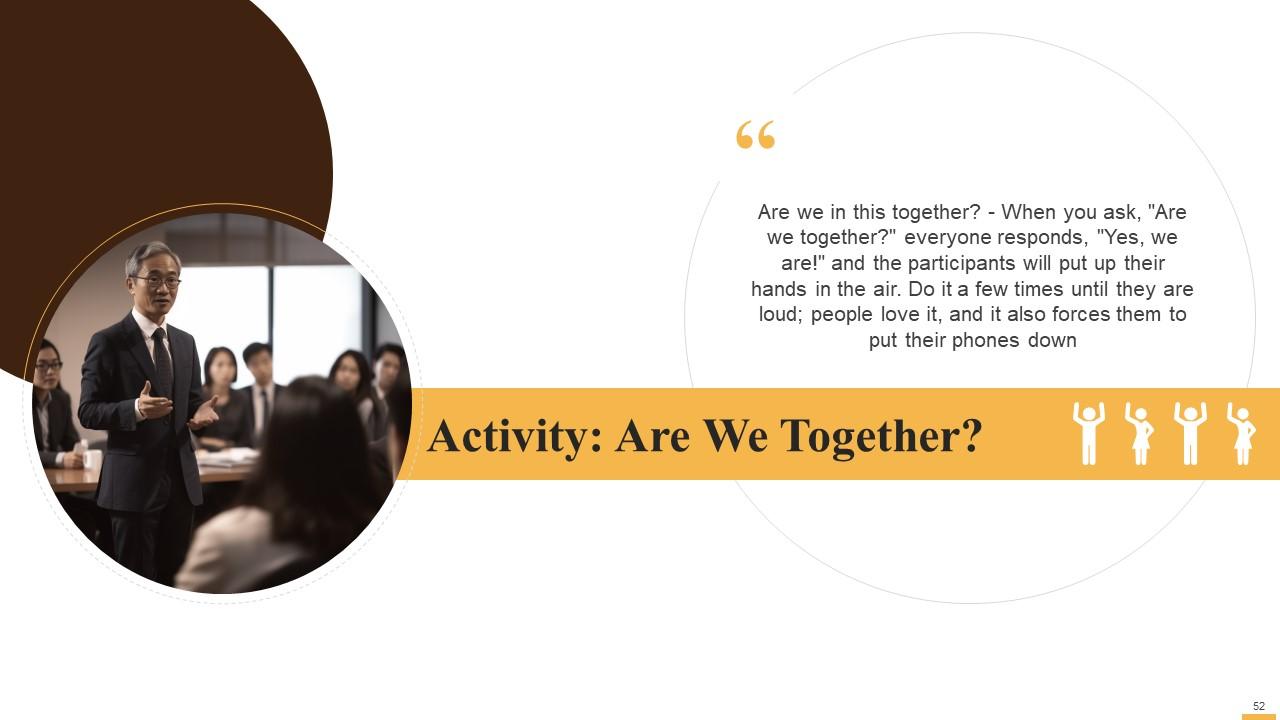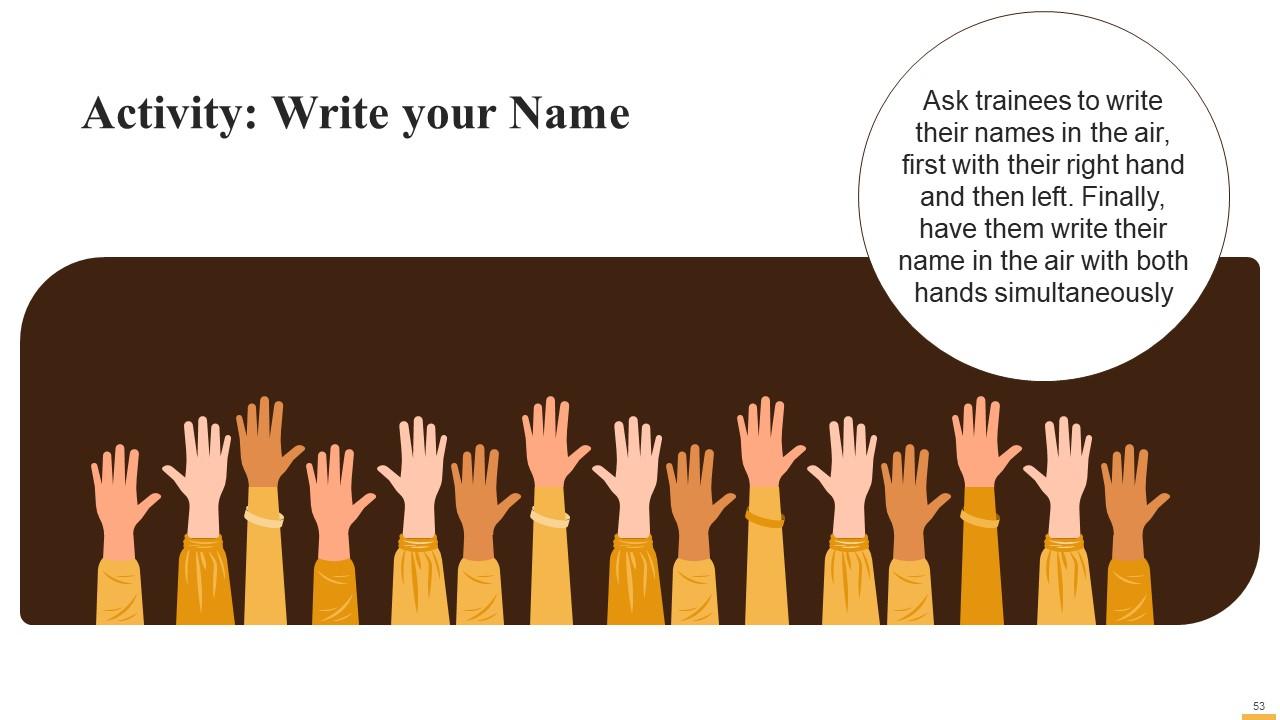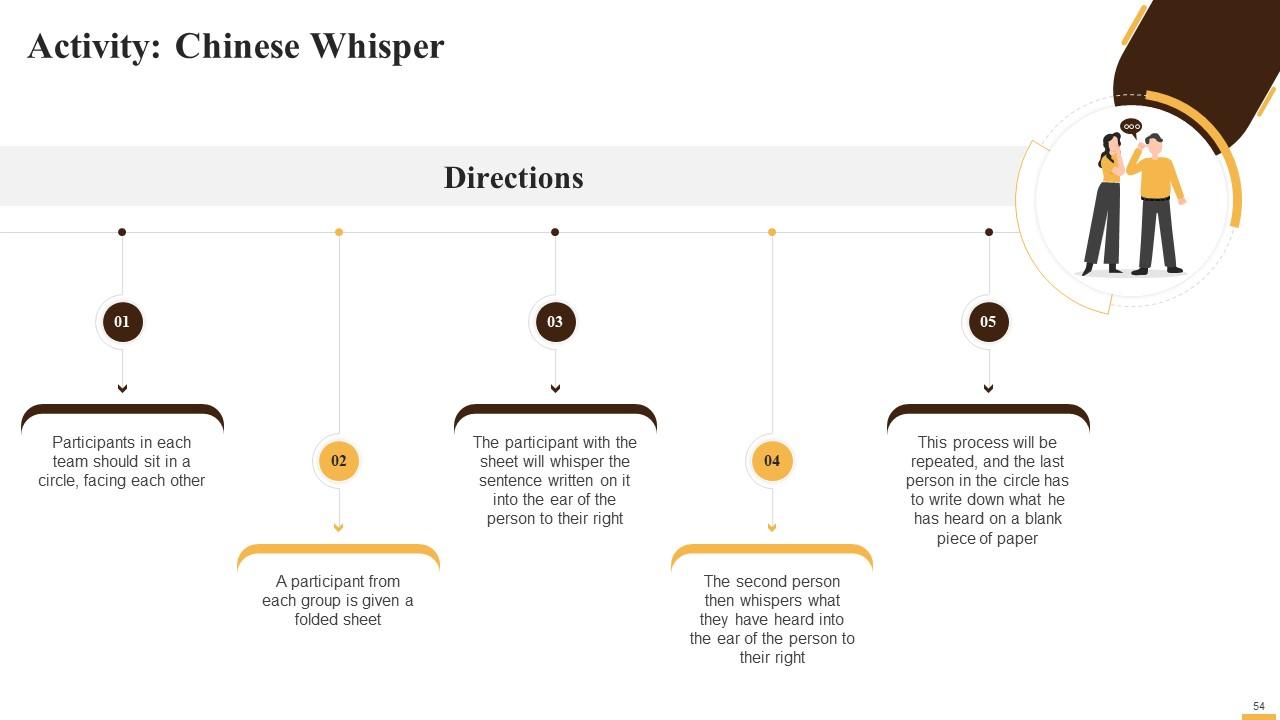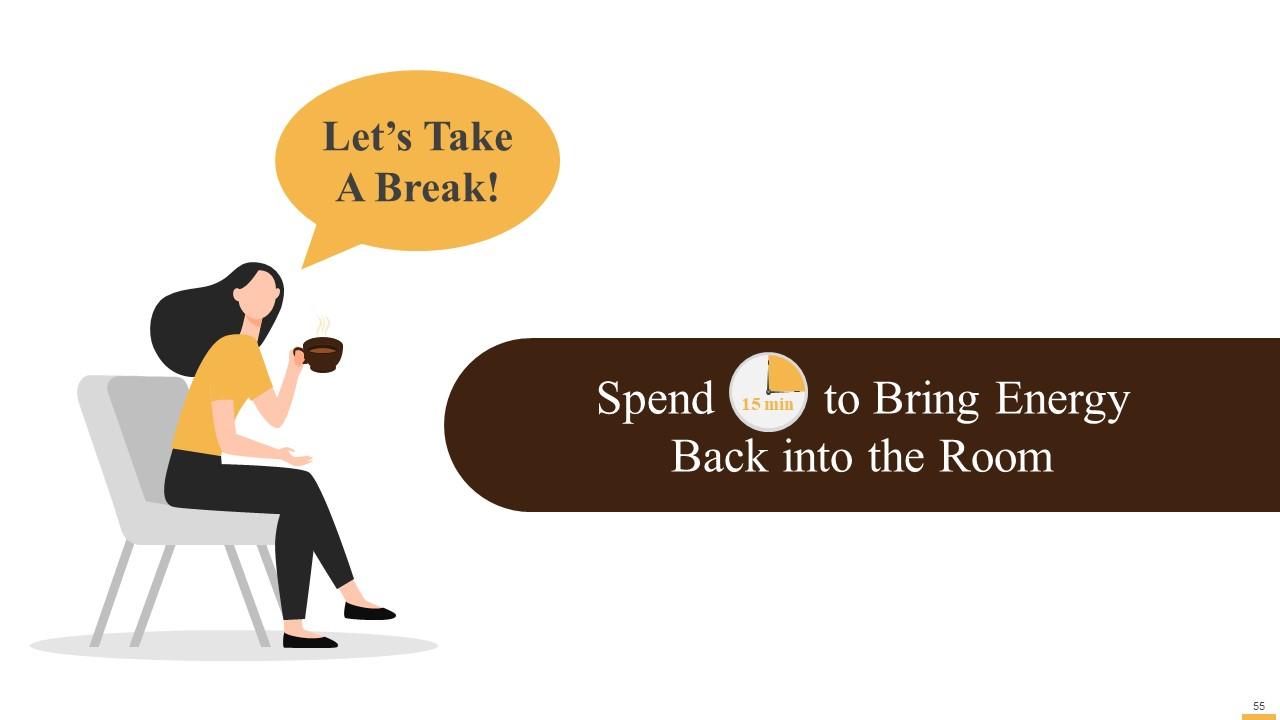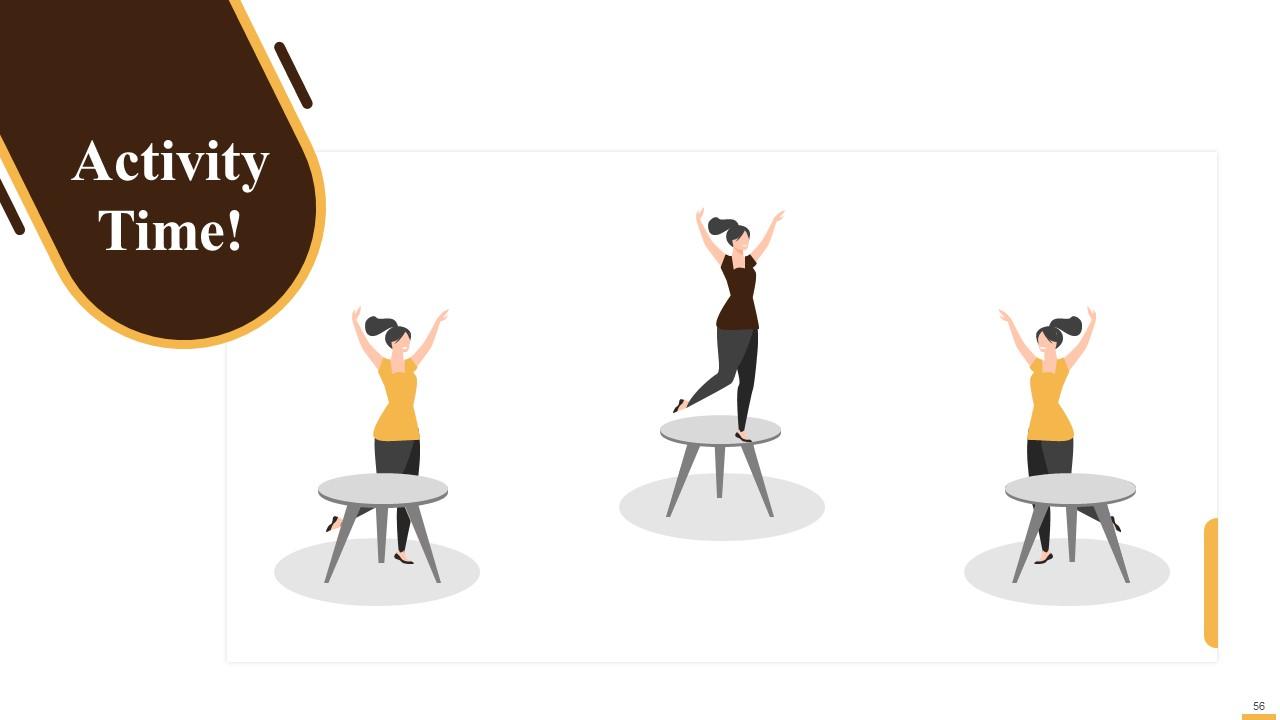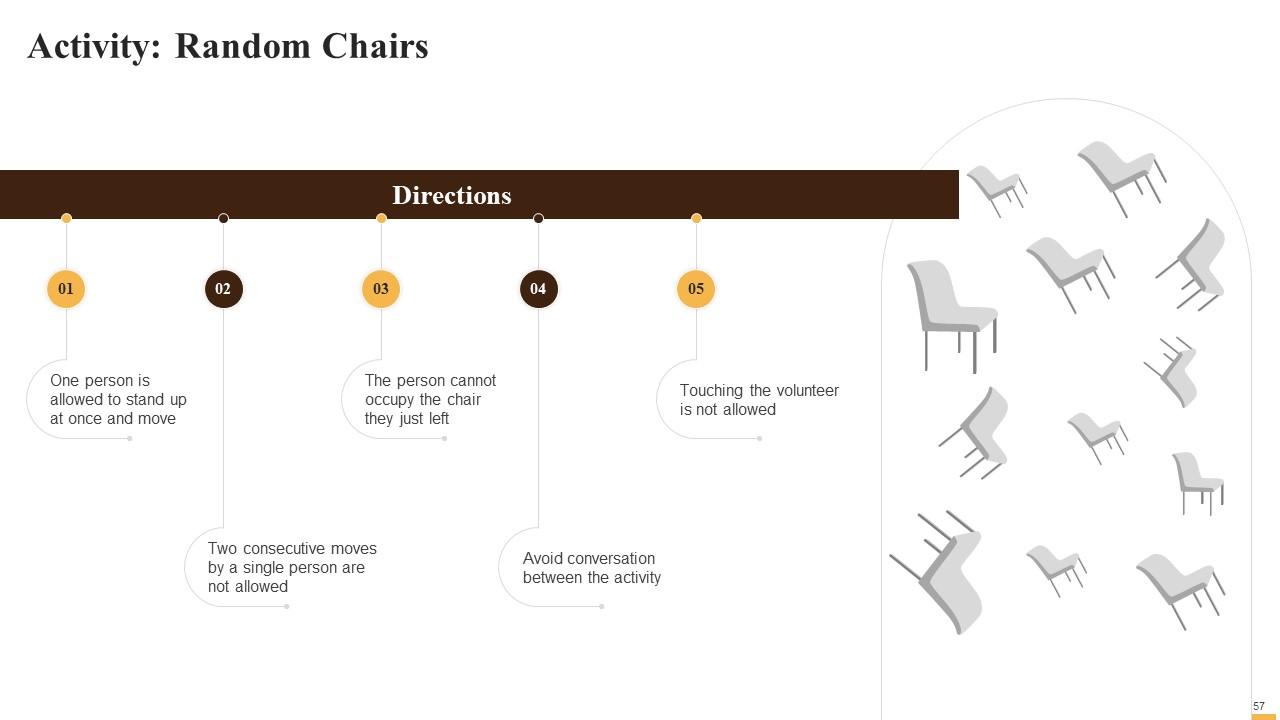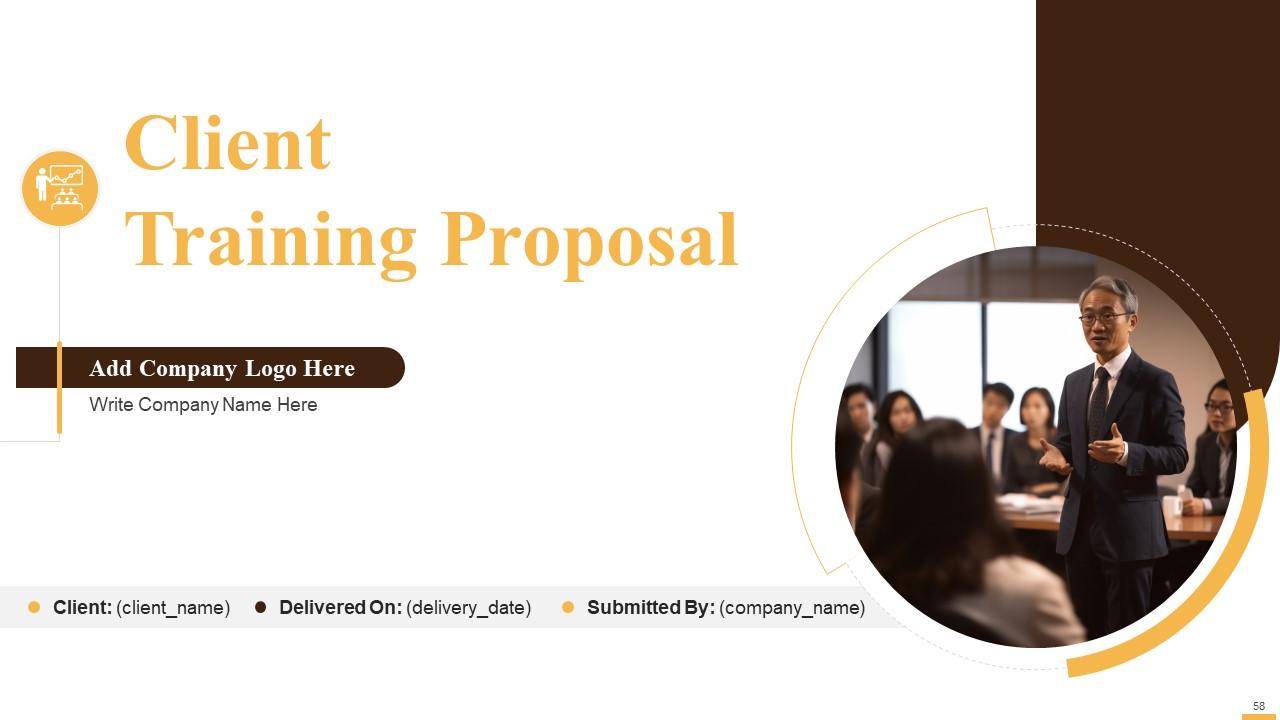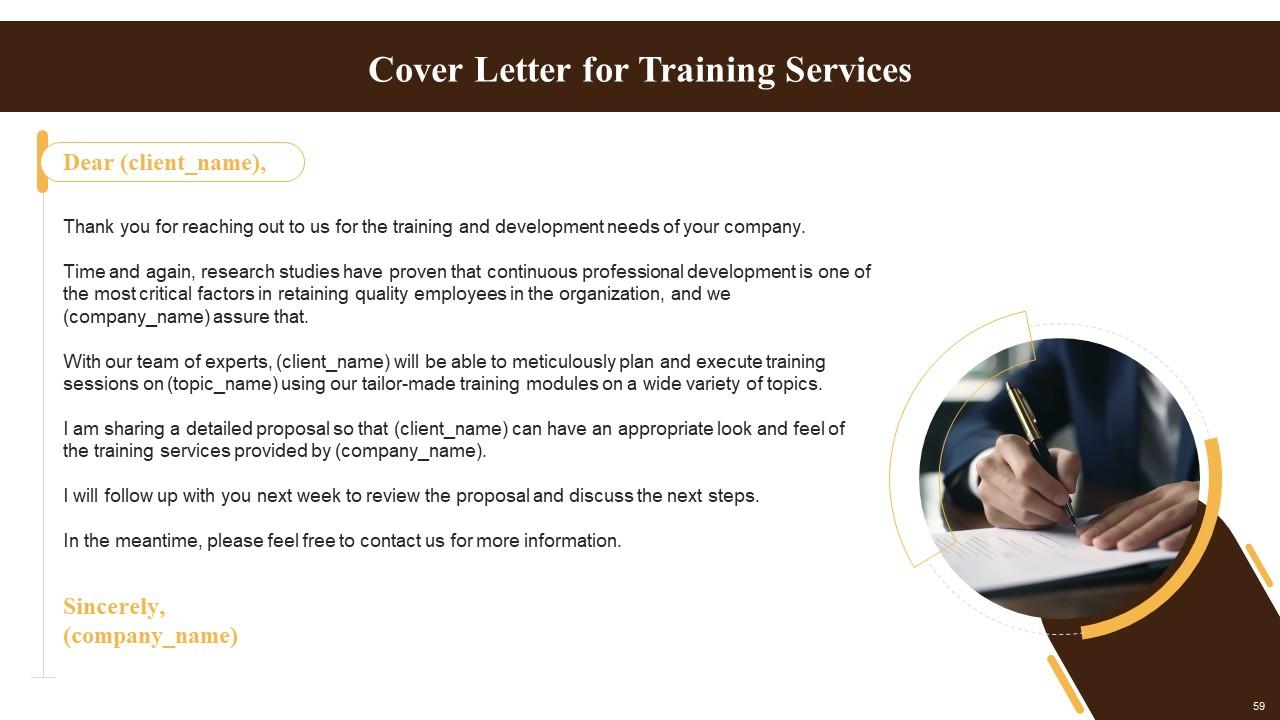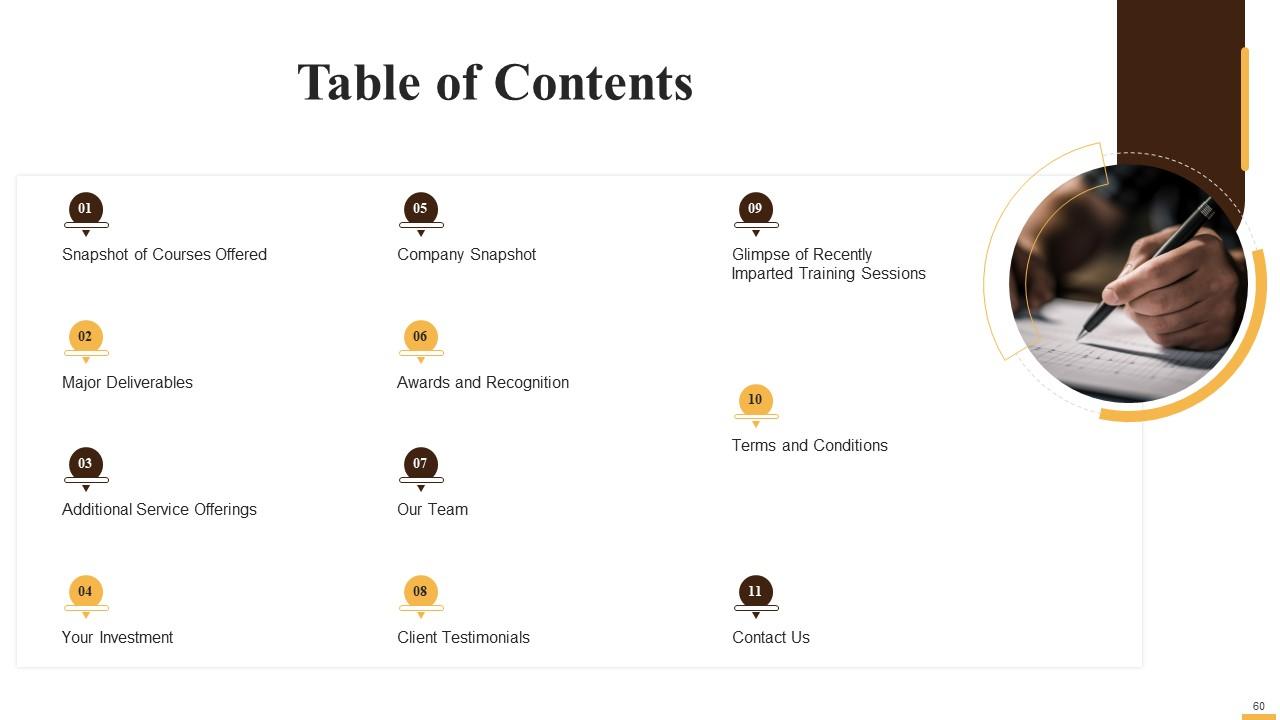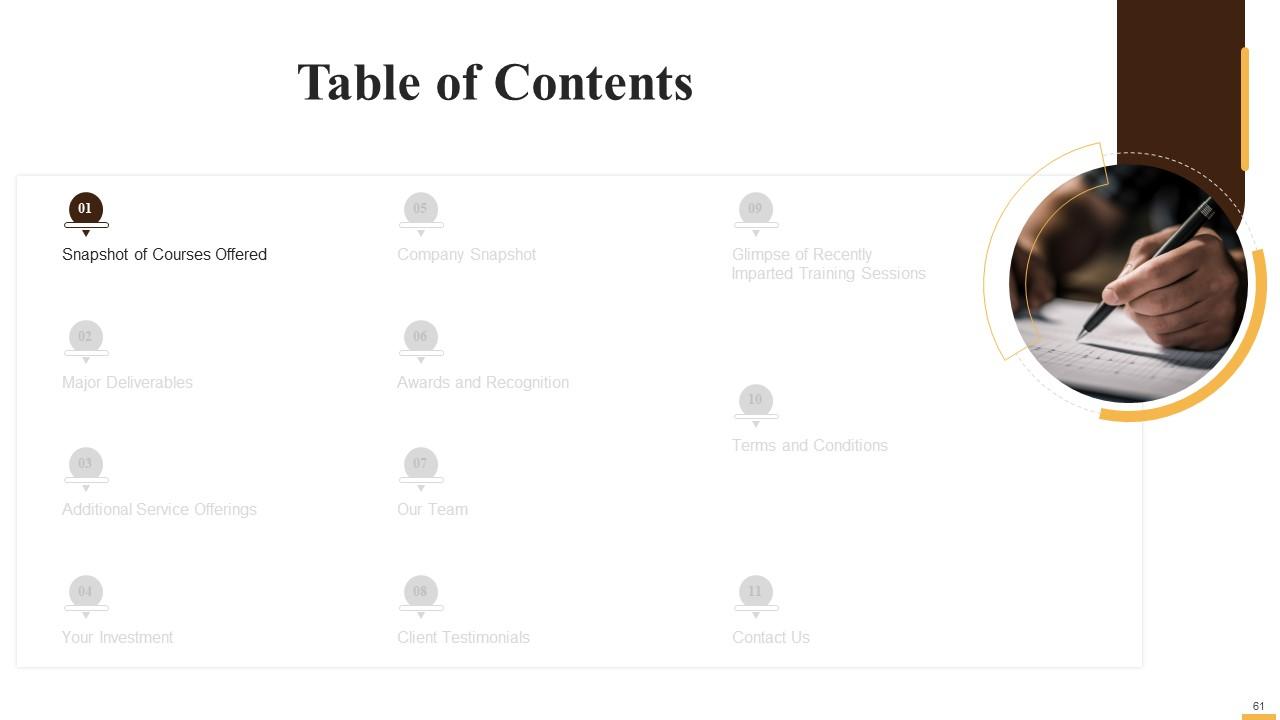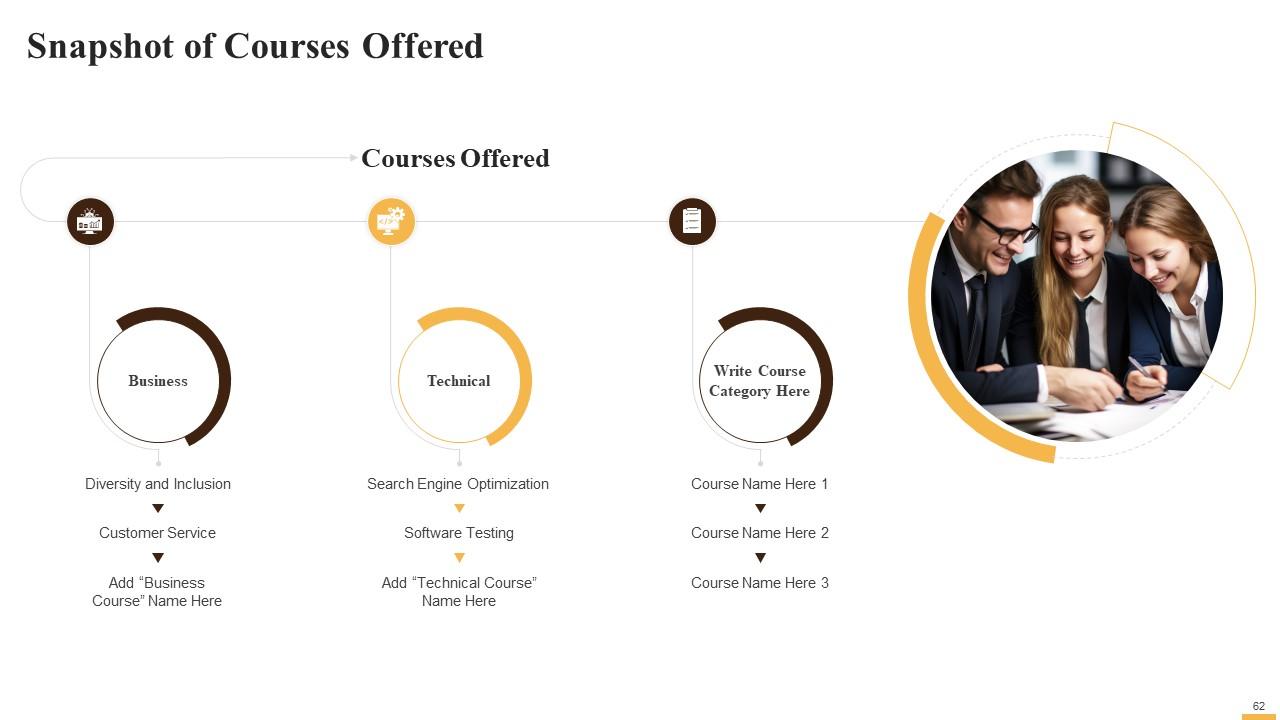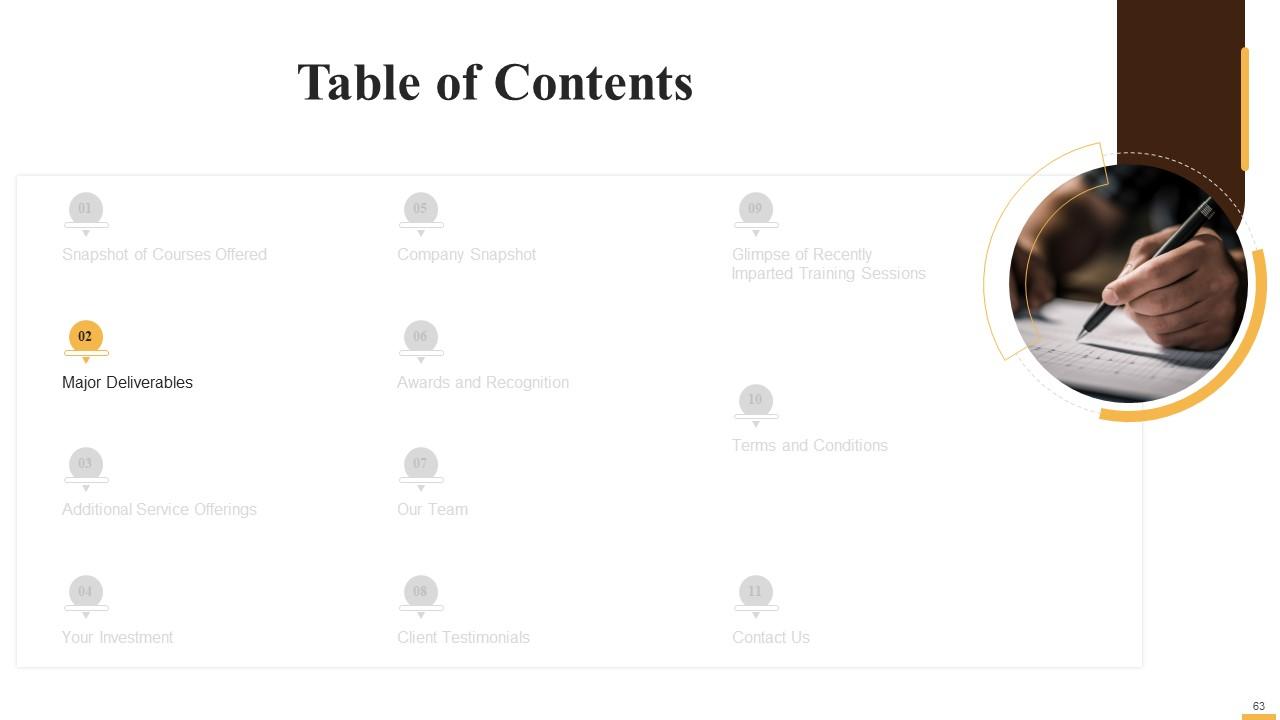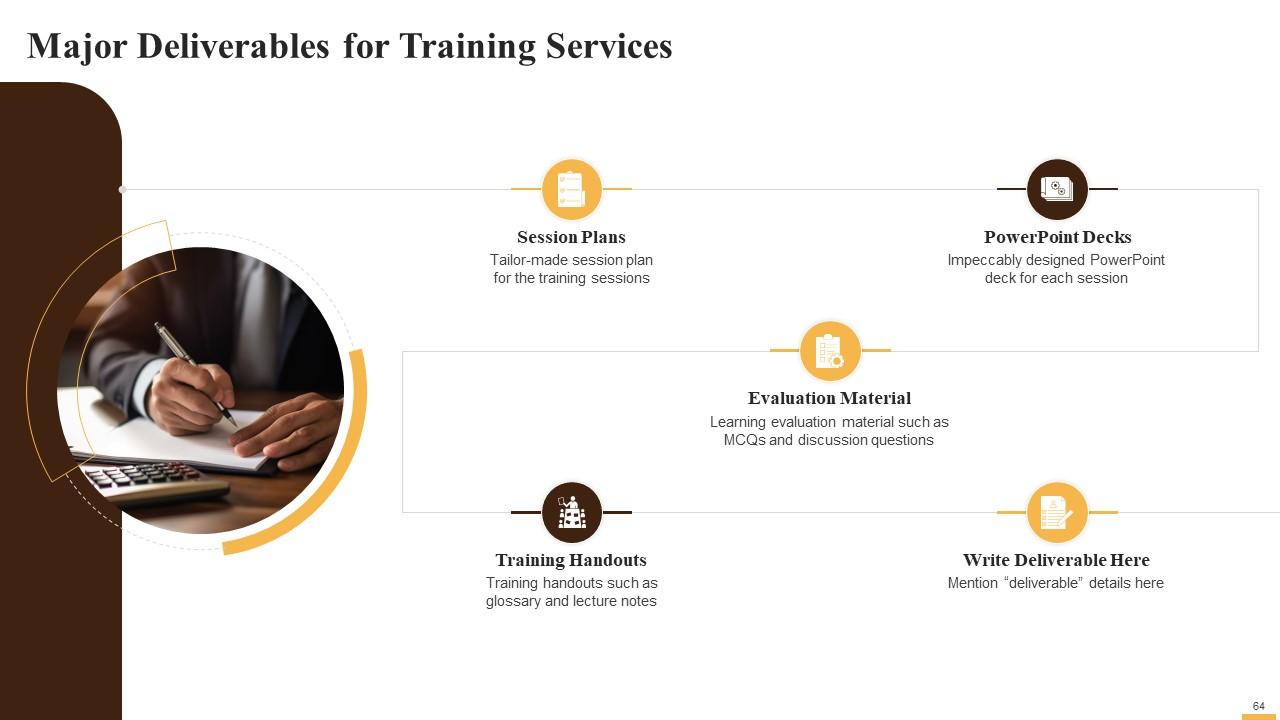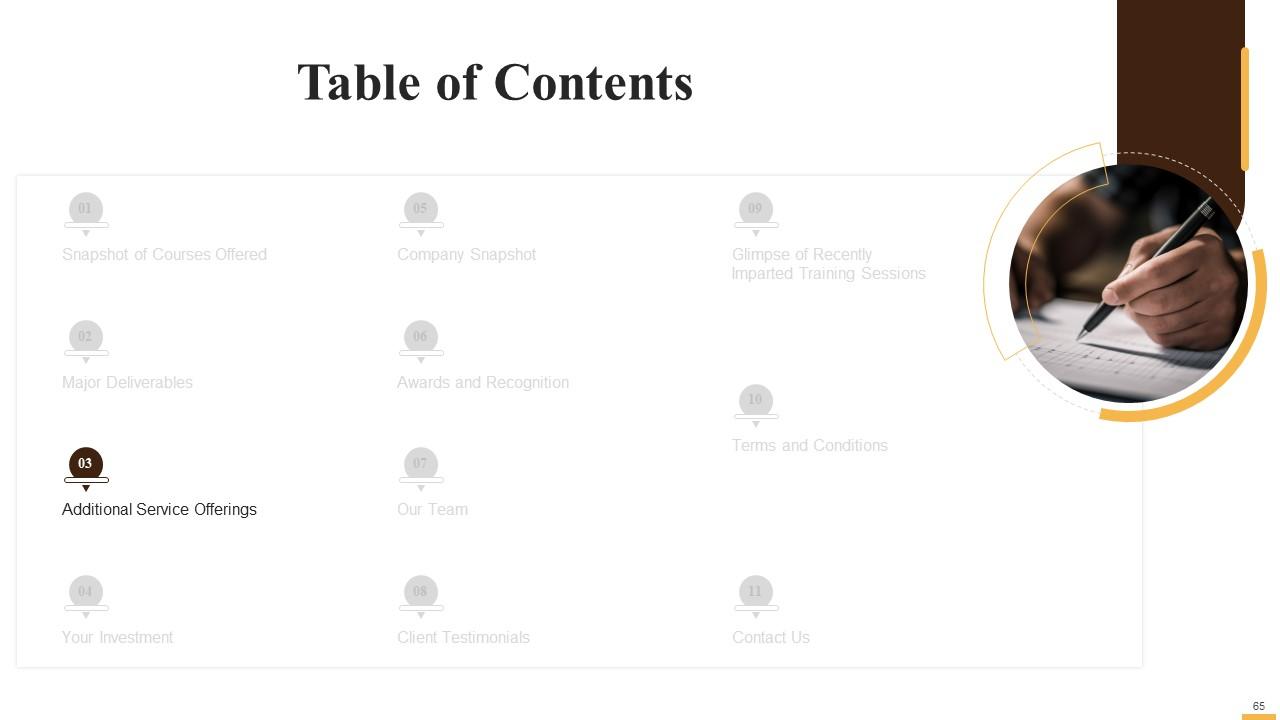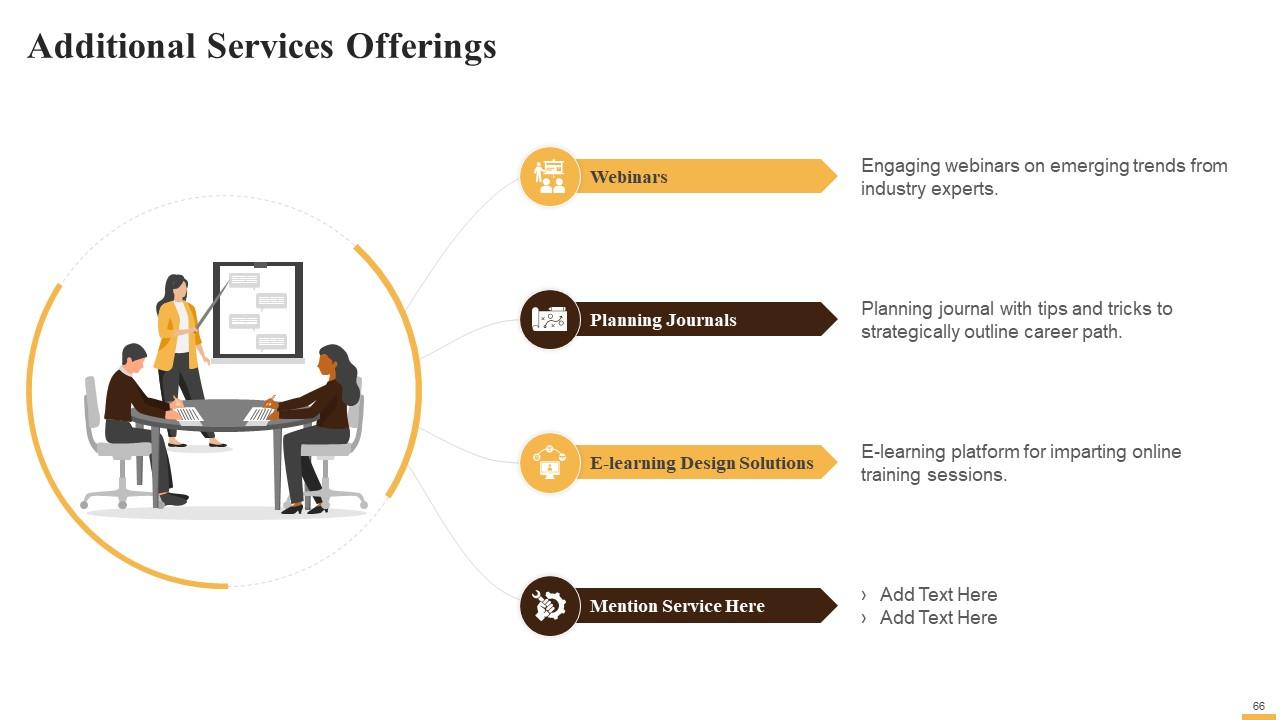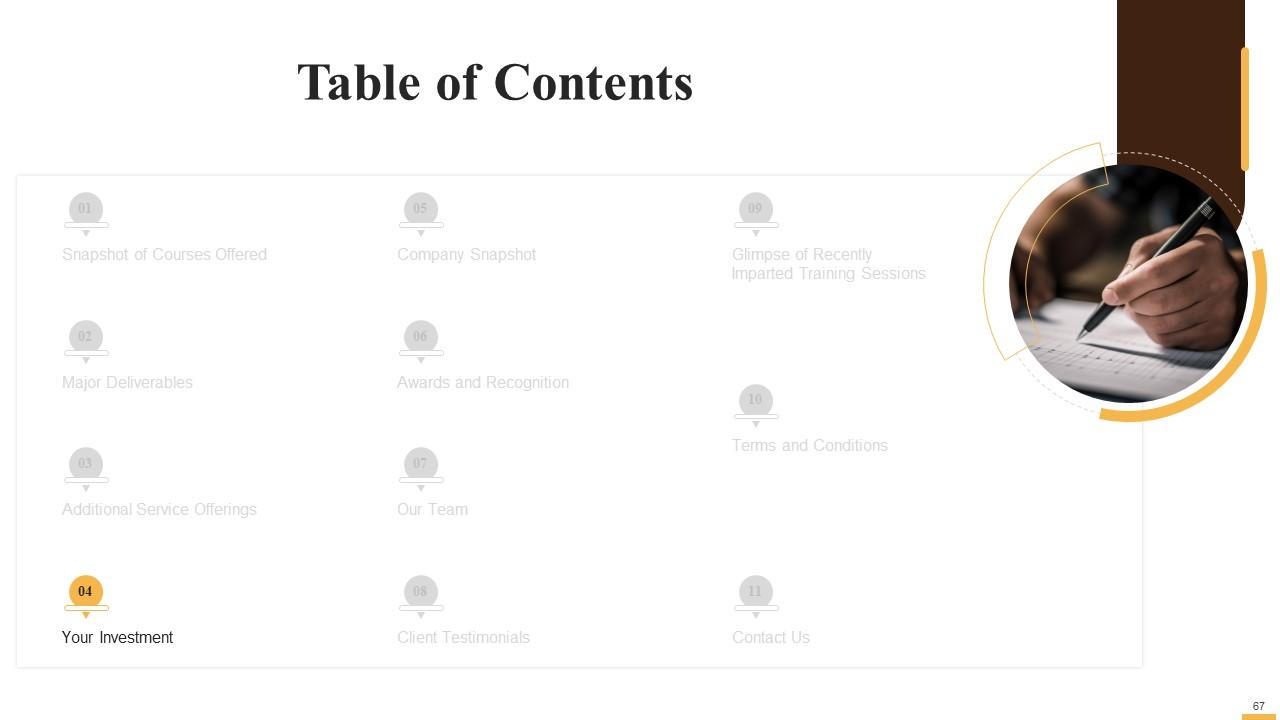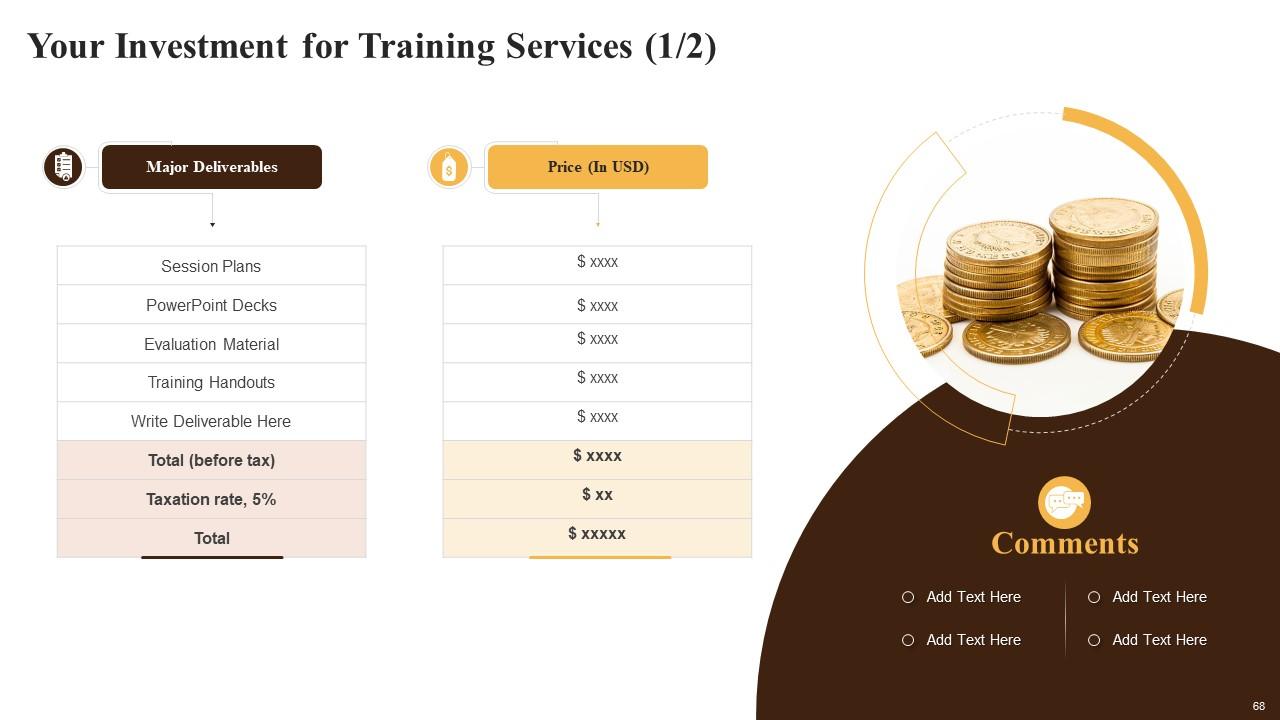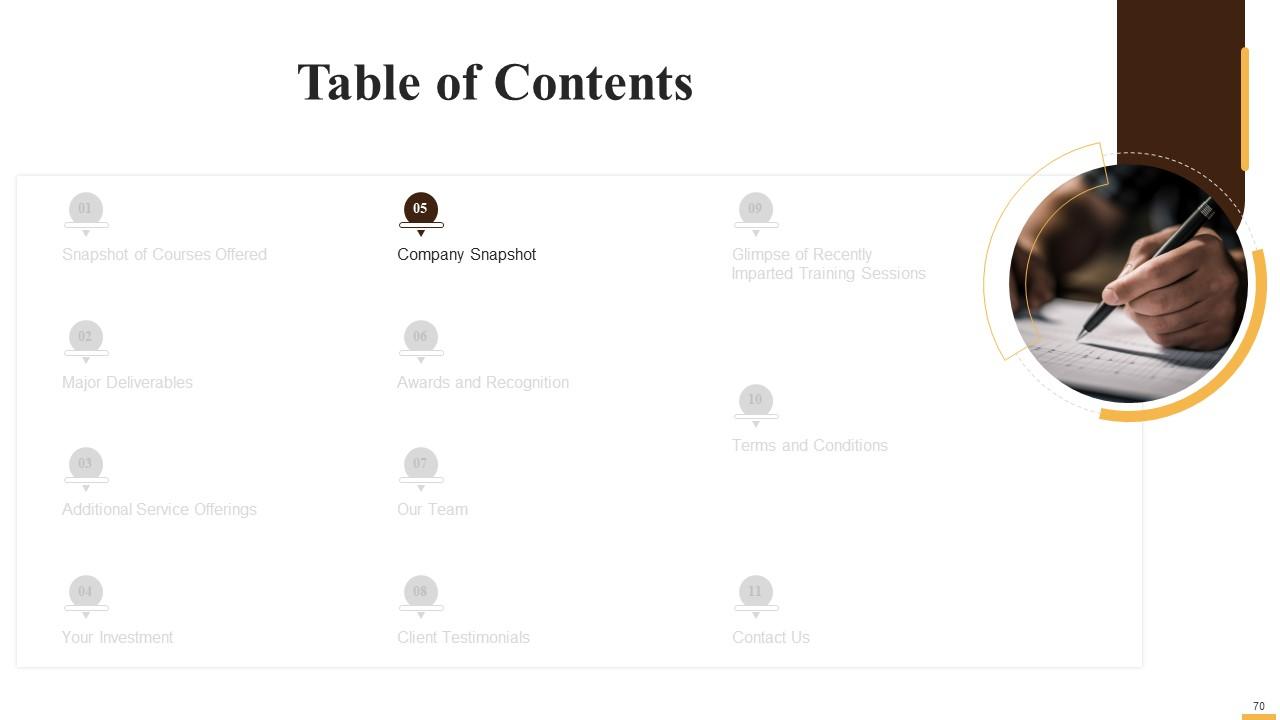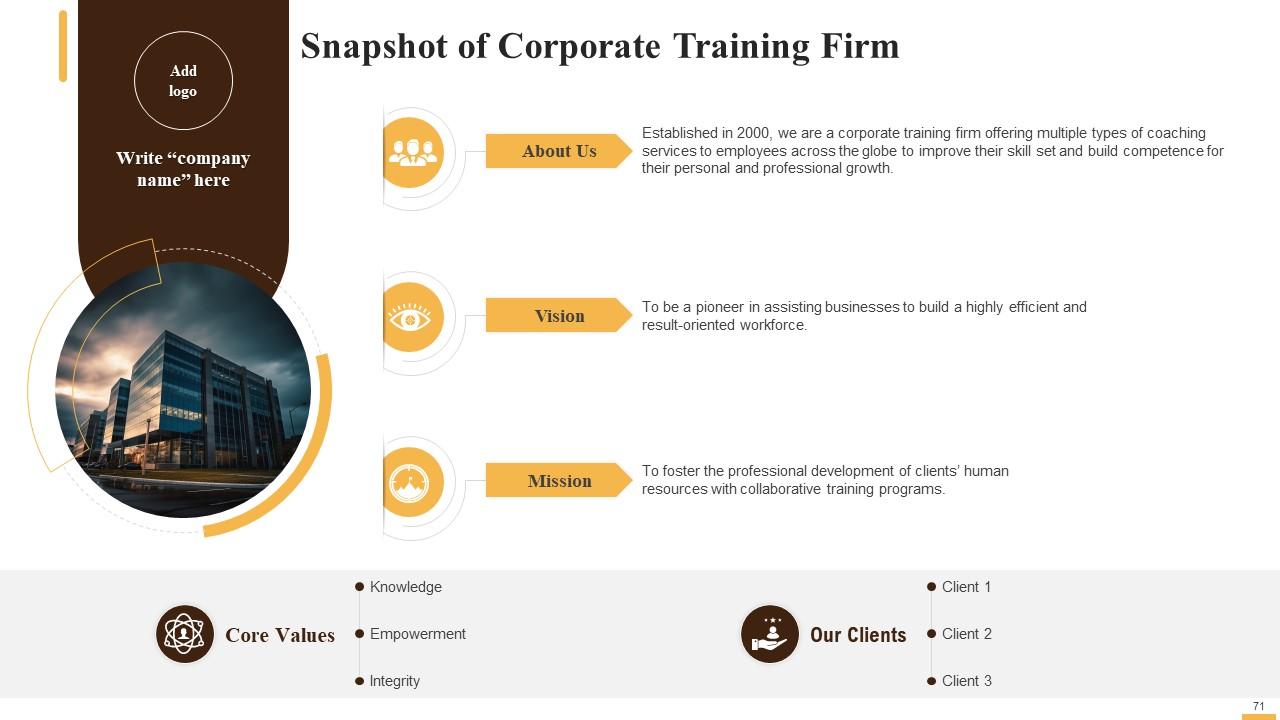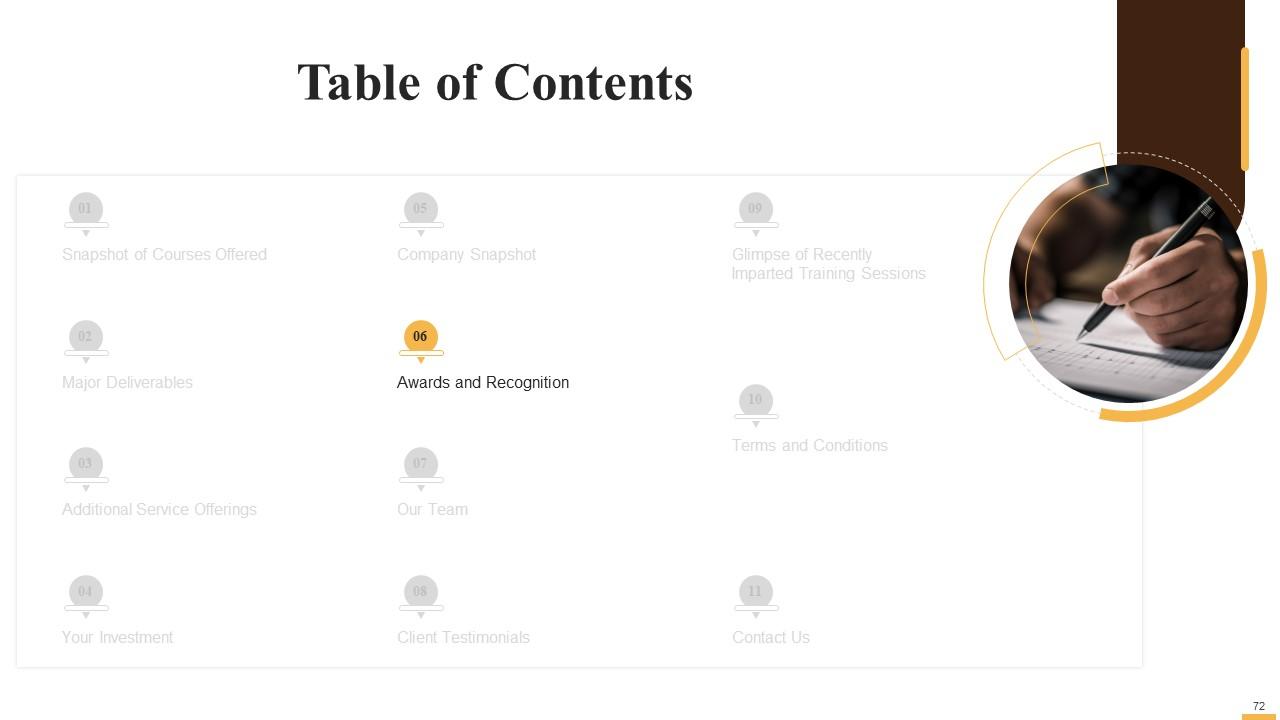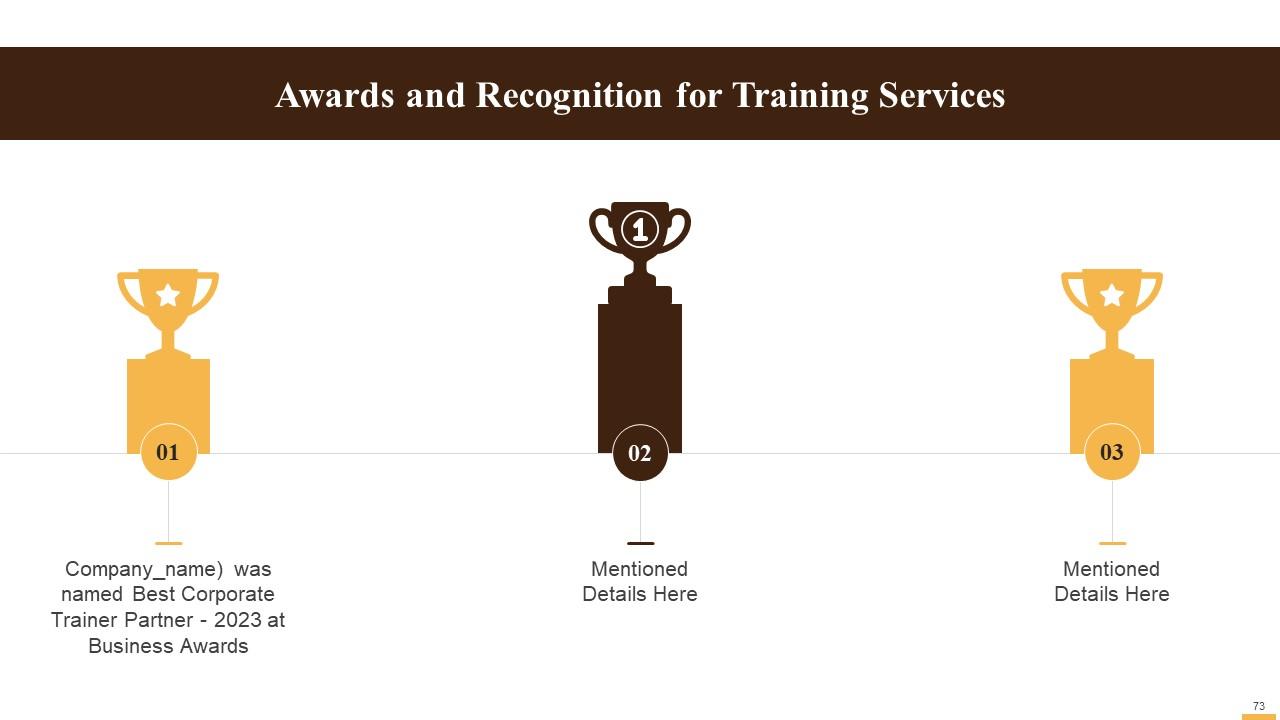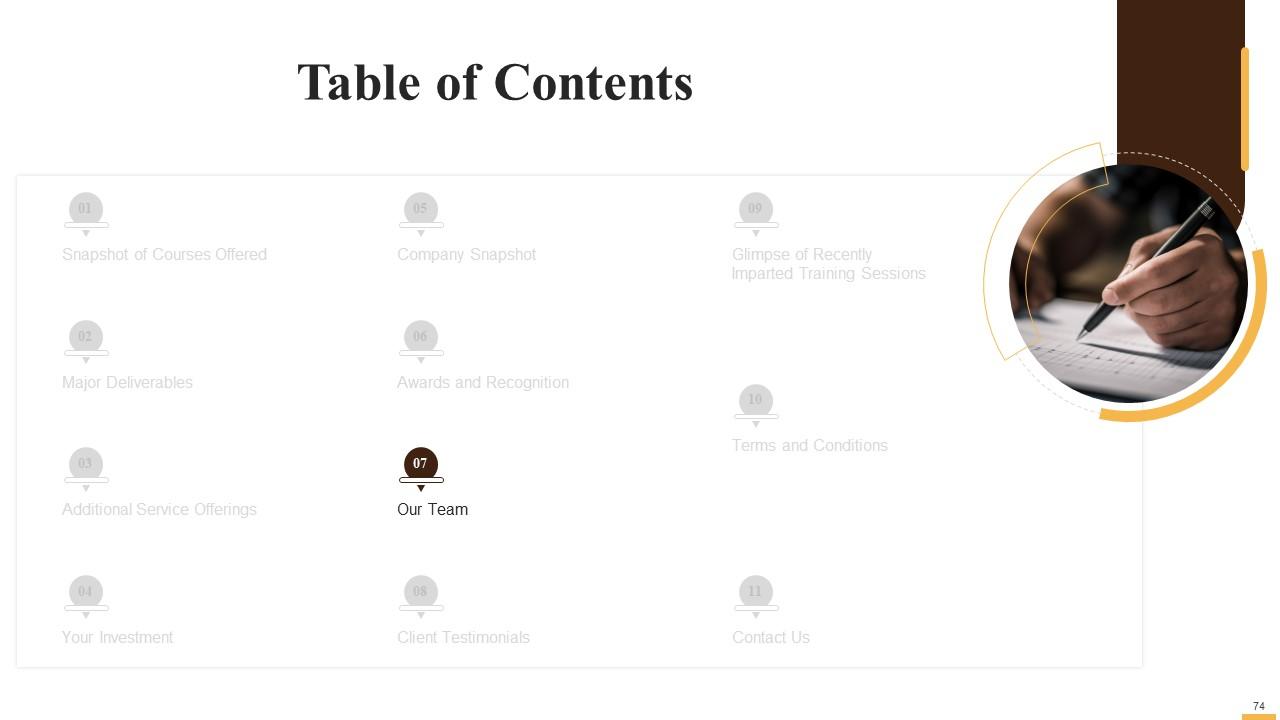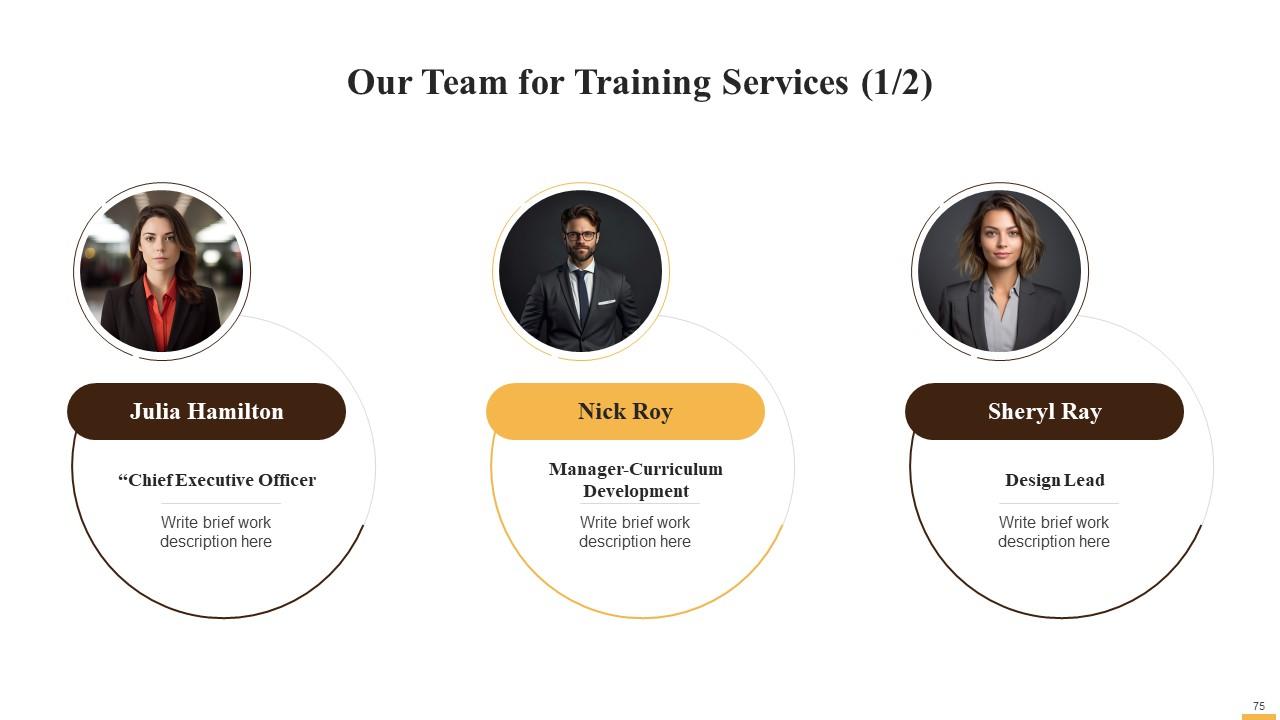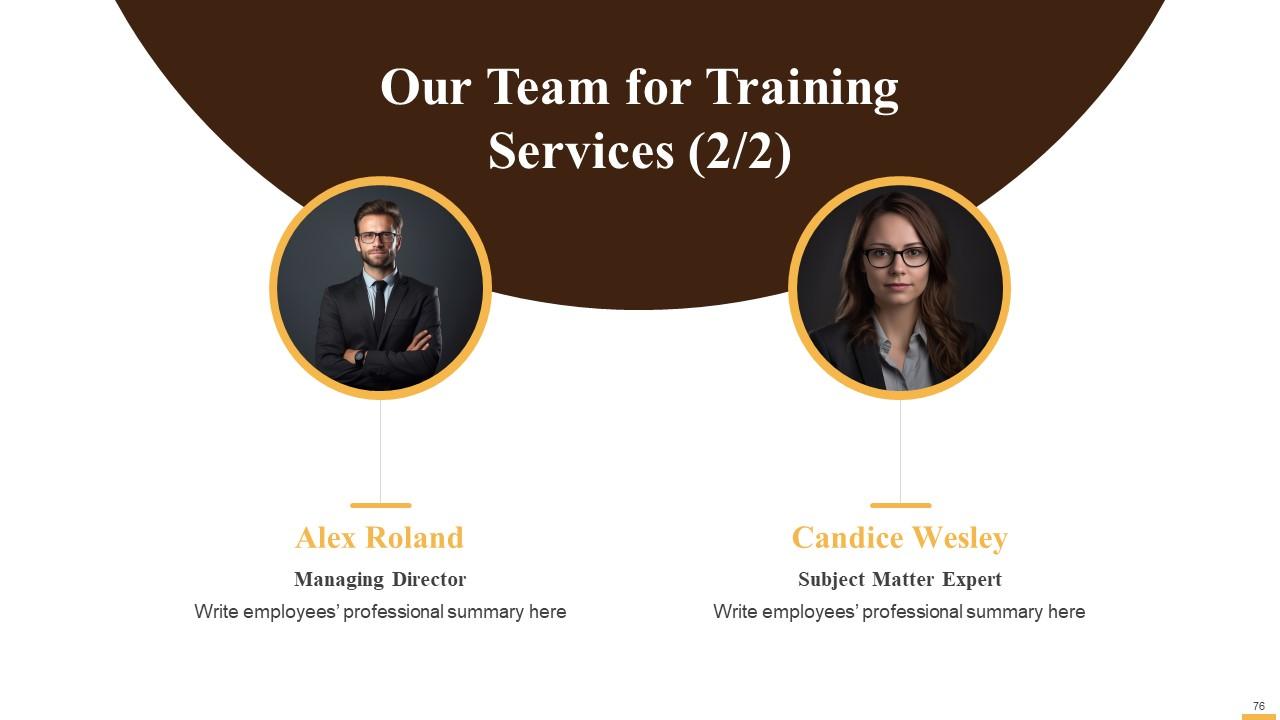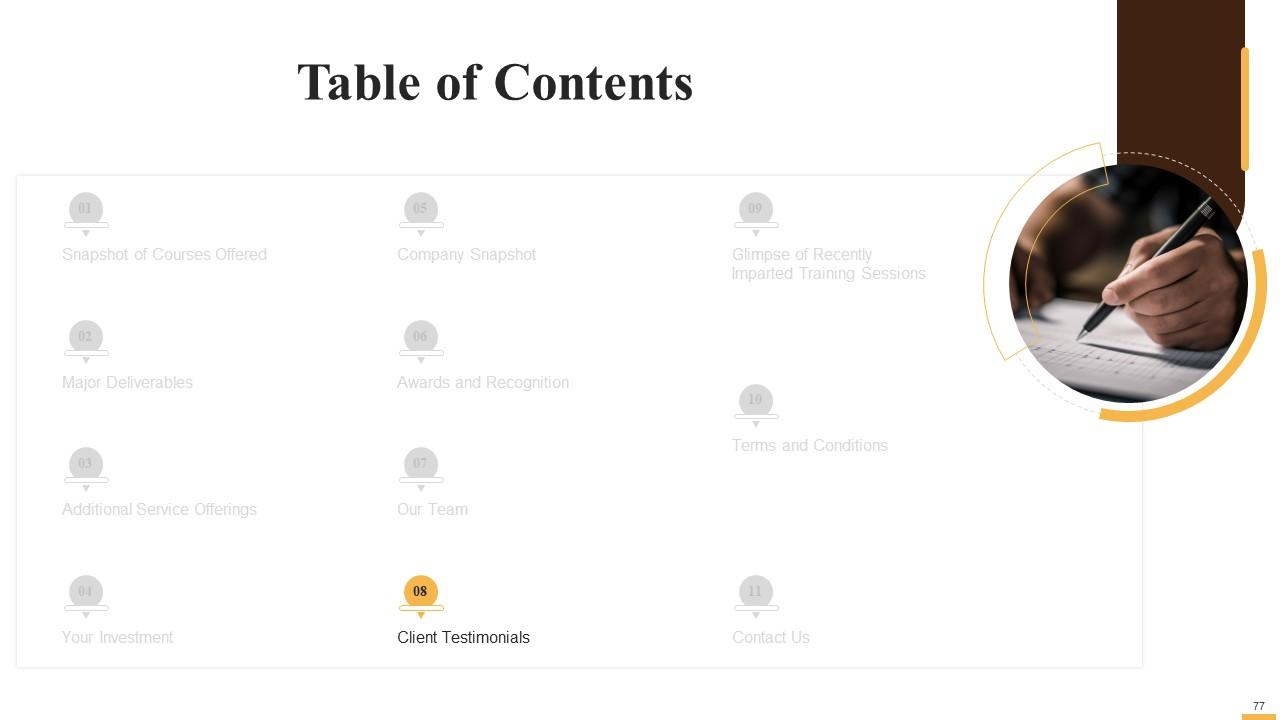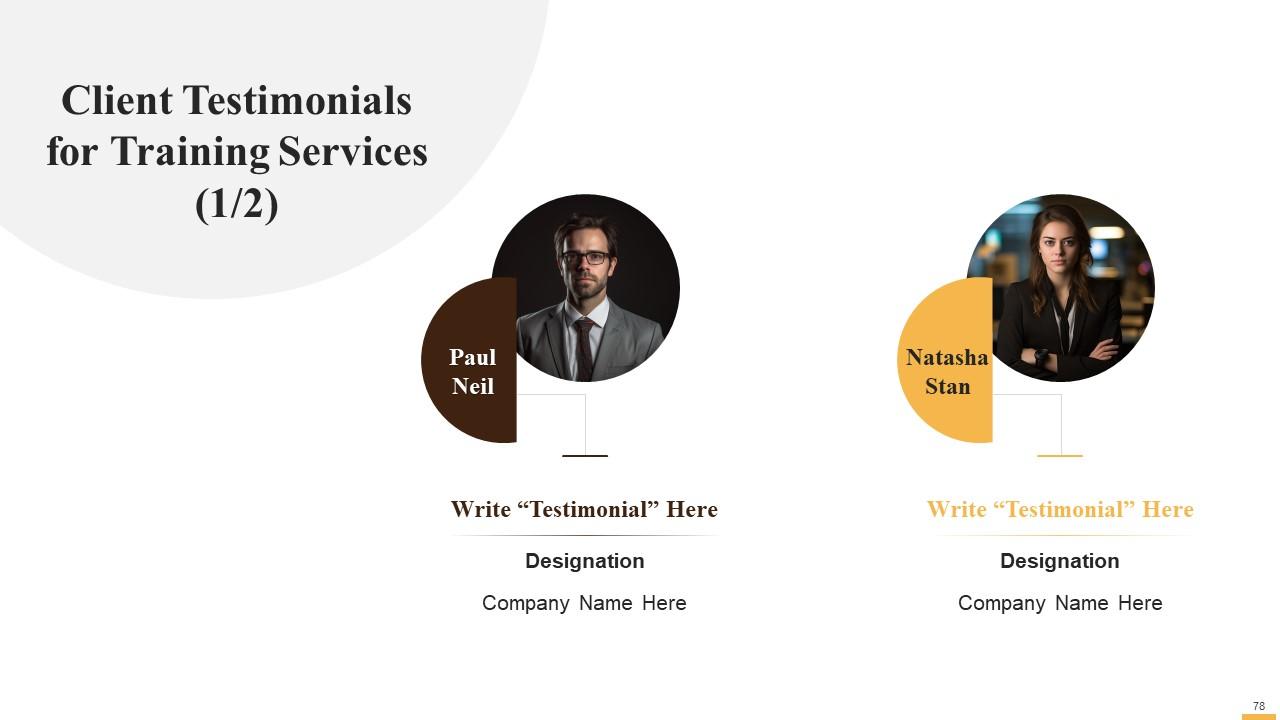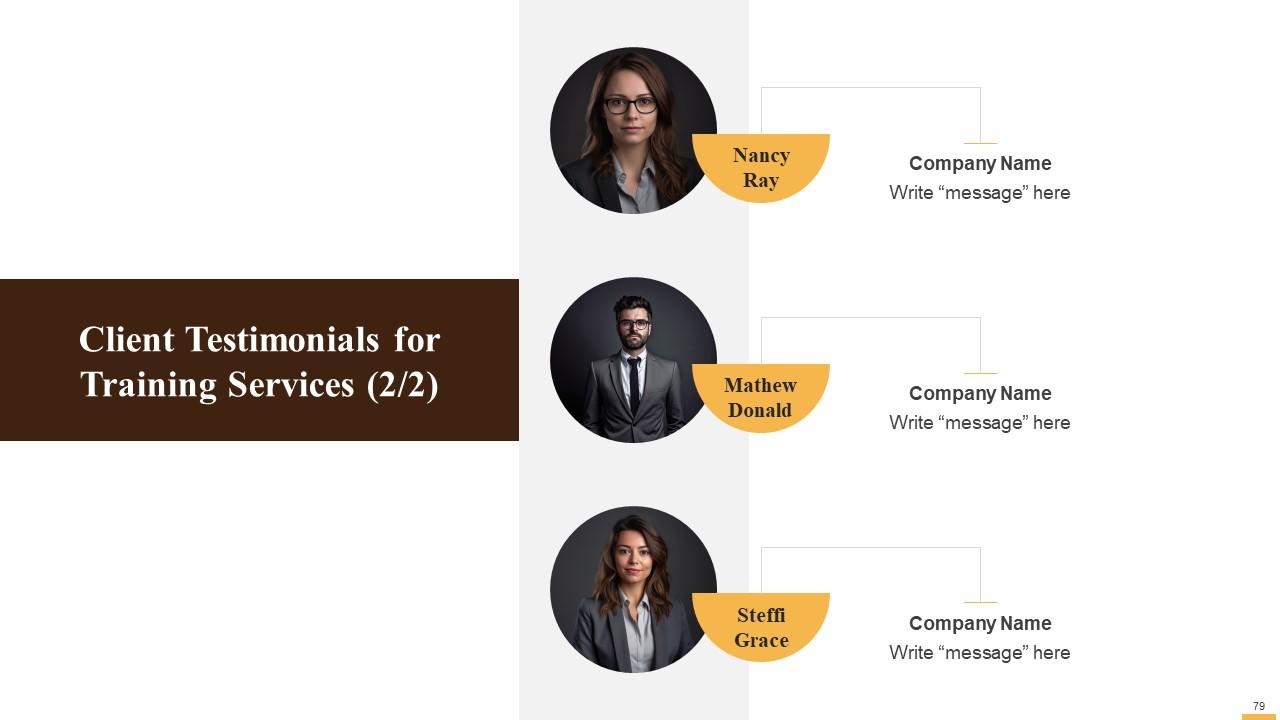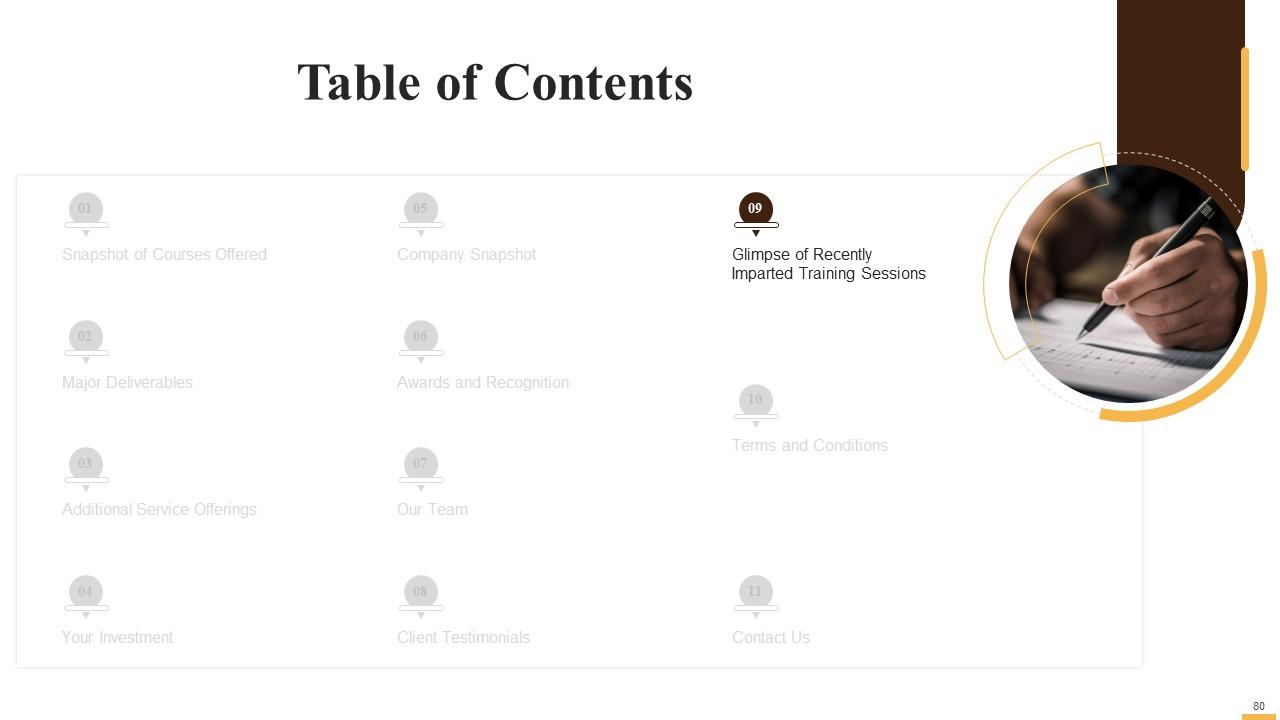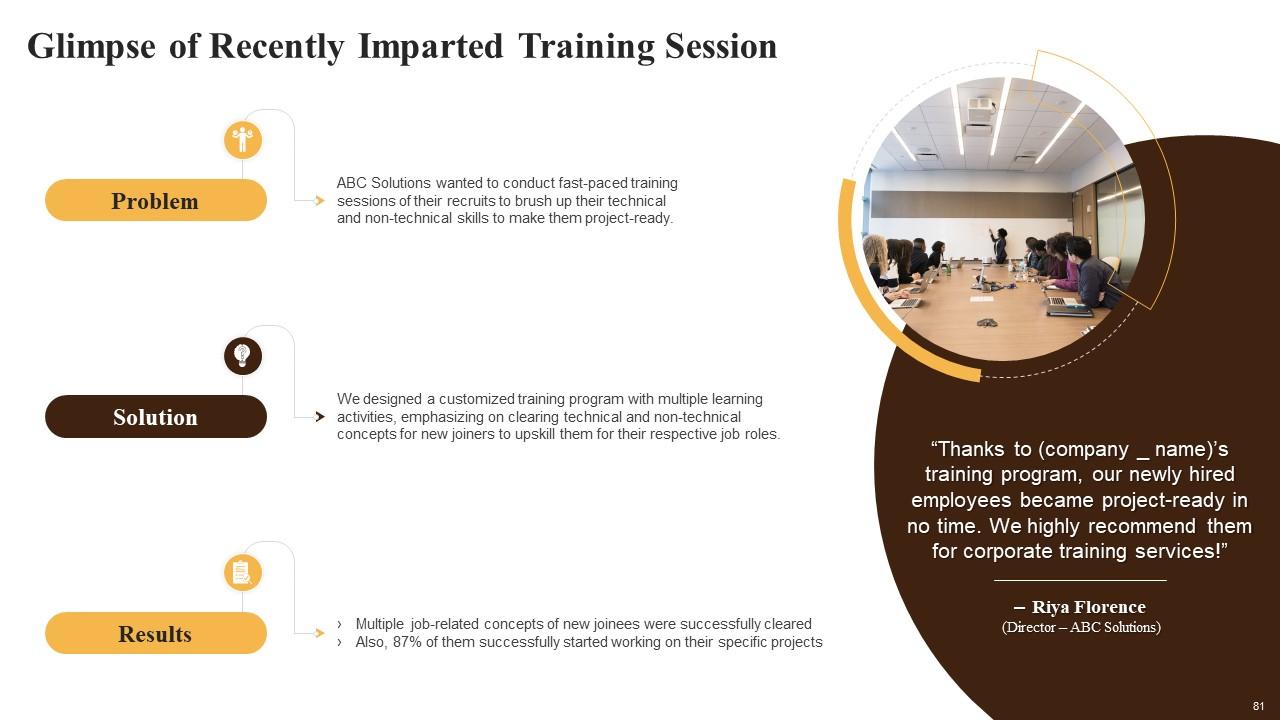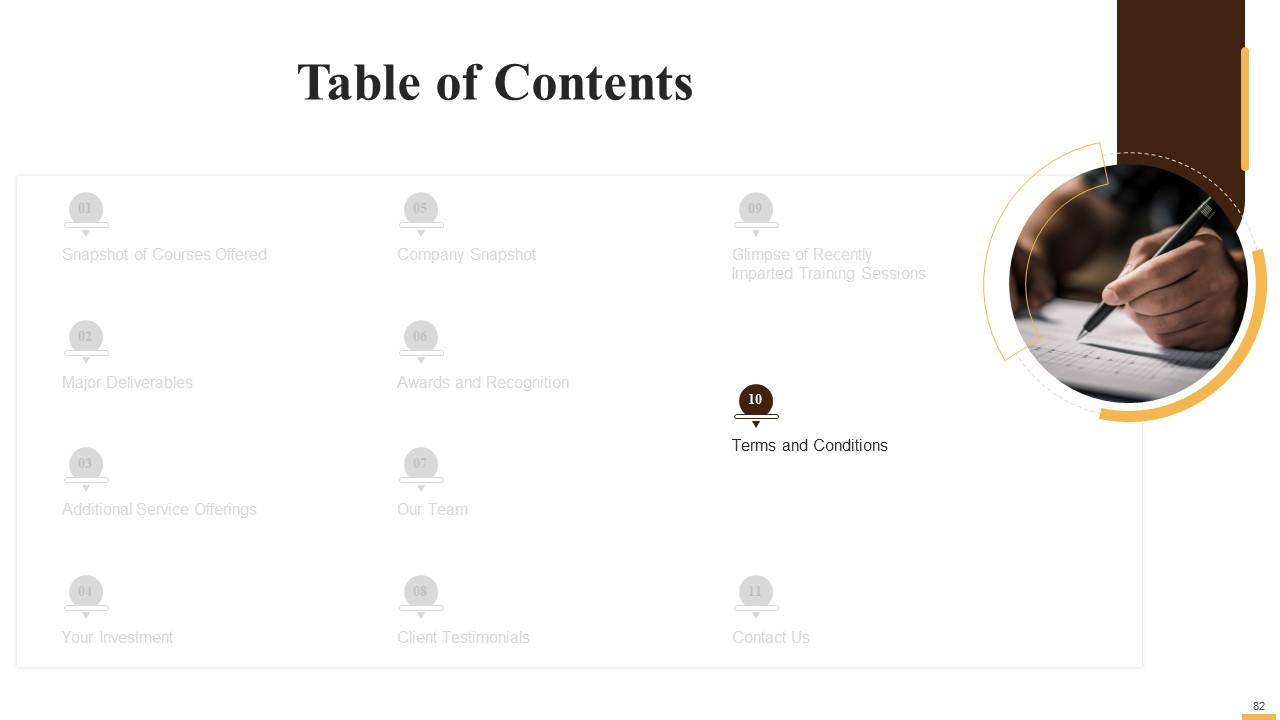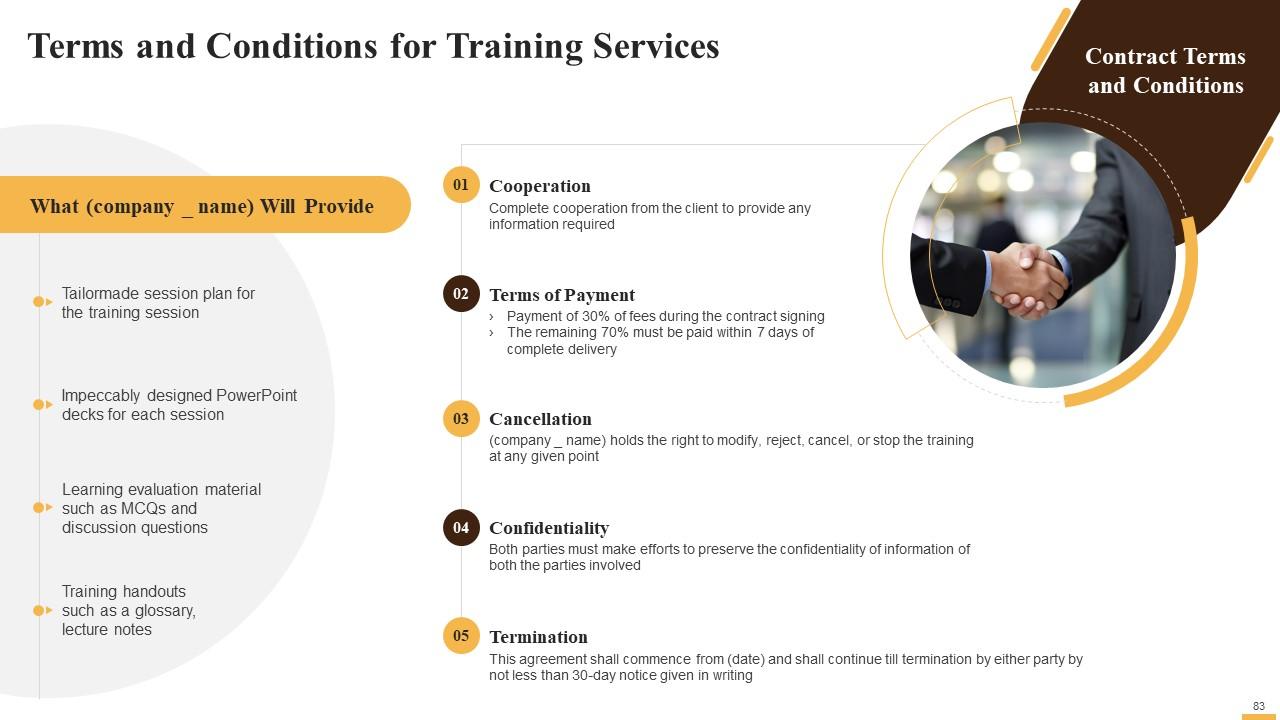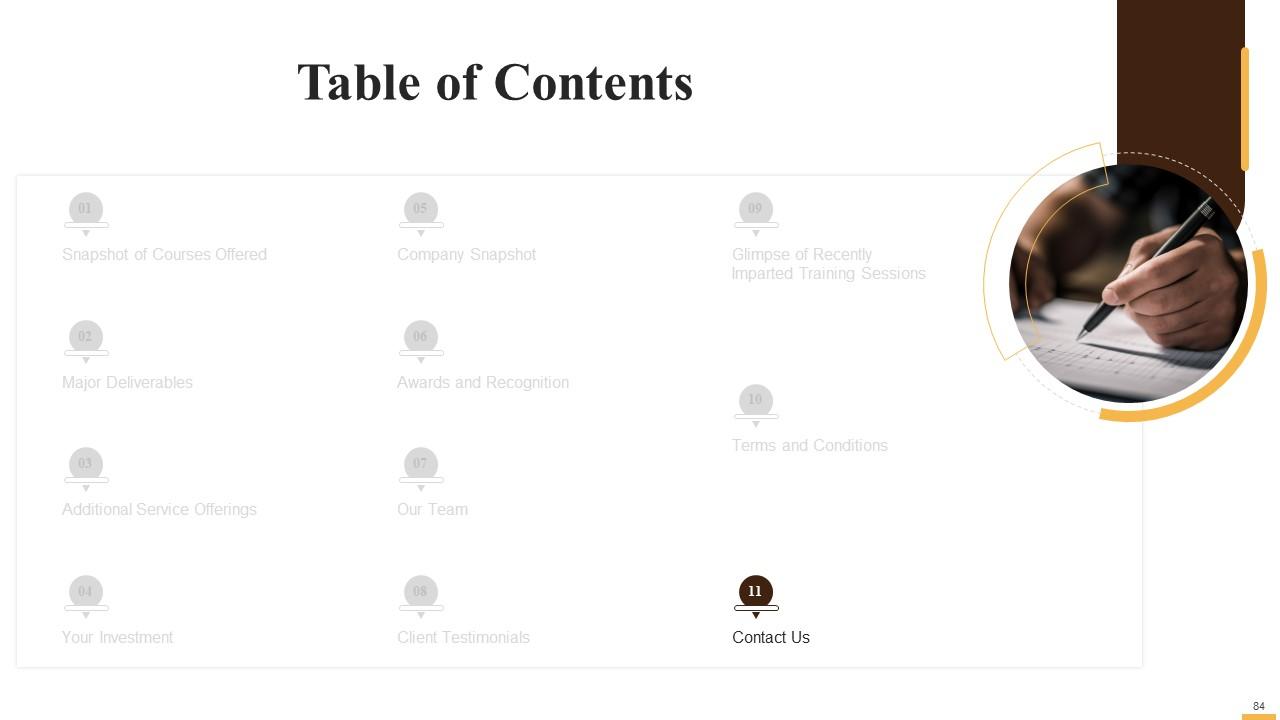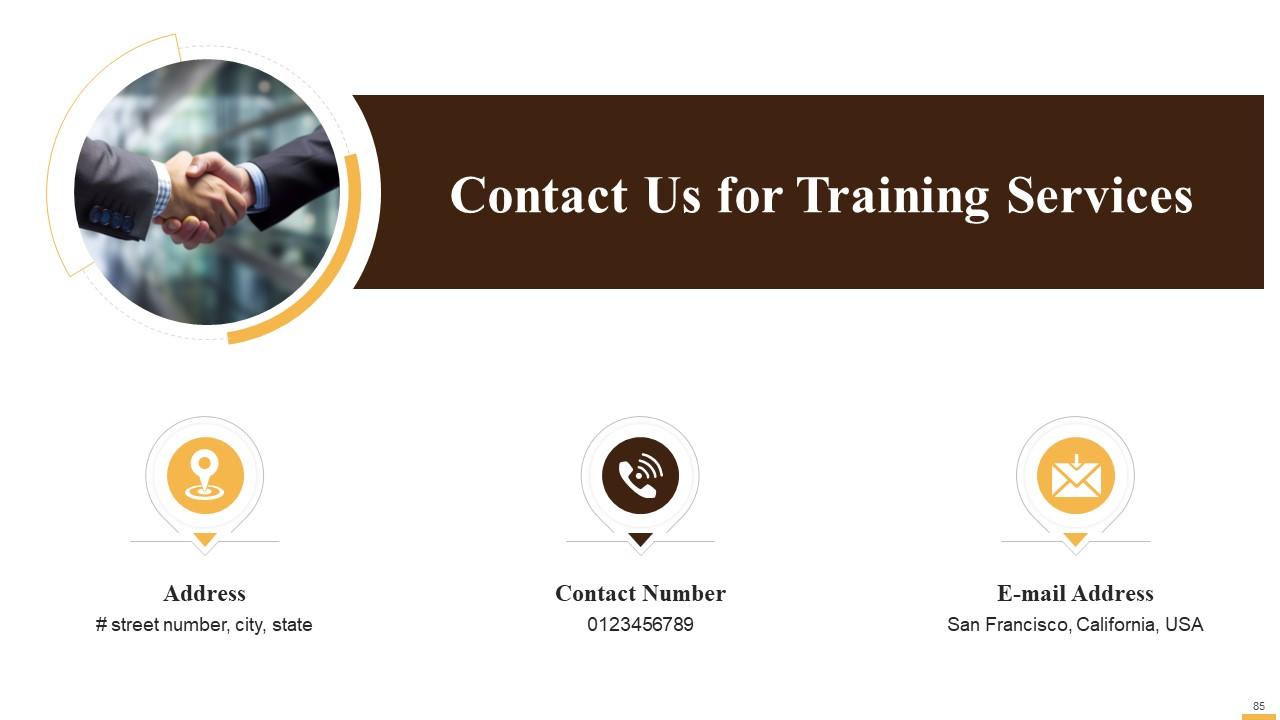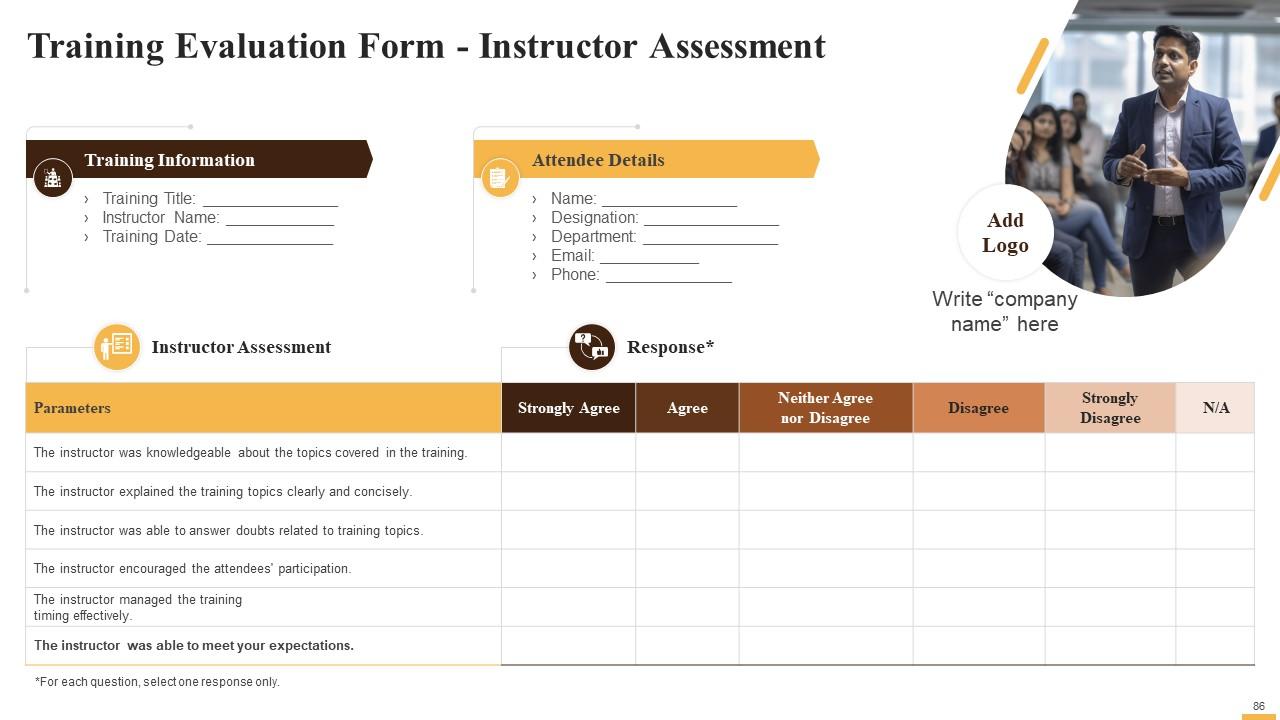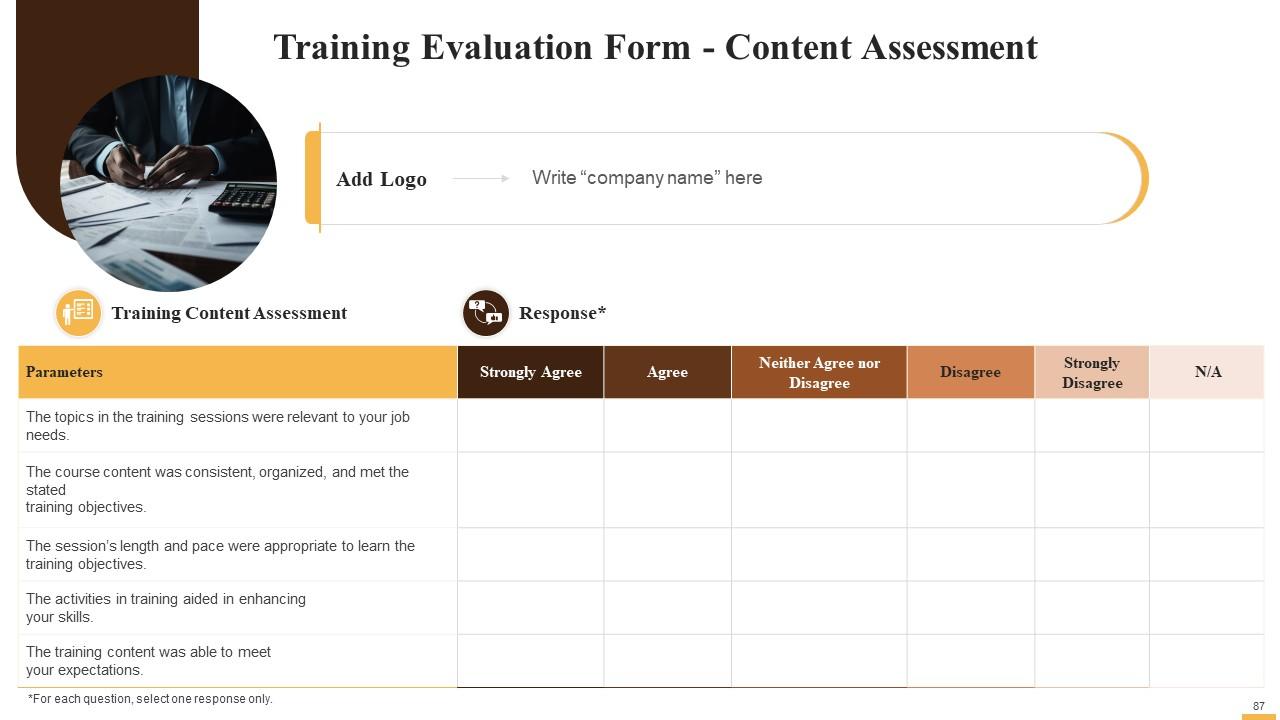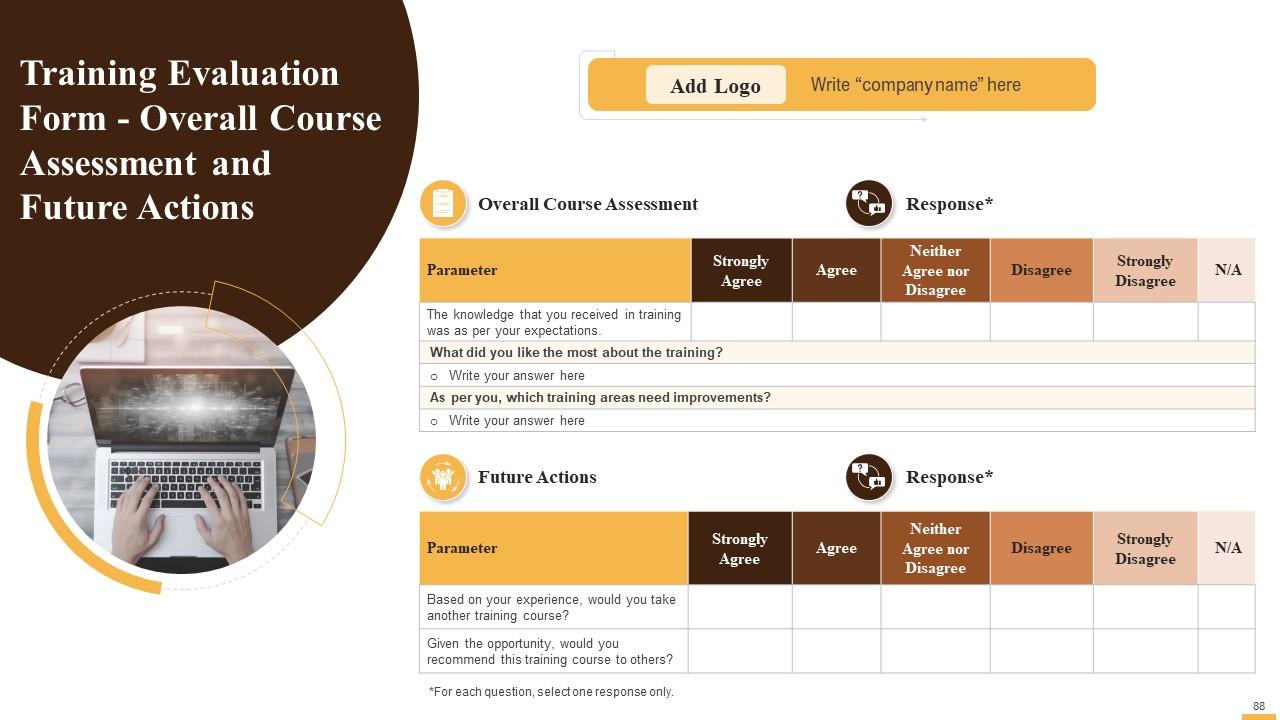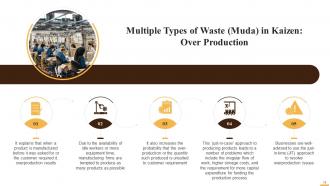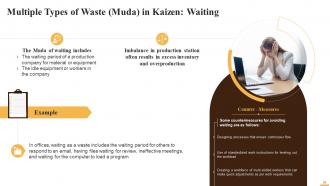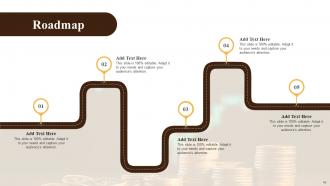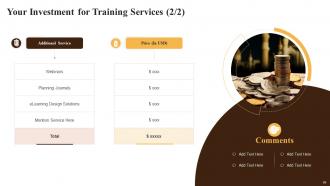Understanding Waste in Kaizen Training Ppt
The PPT Training Deck on Understanding Waste in Kaizen covers the concept of waste within the Kaizen framework, aimed at enhancing efficiency and productivity. It begins by categorizing activities into three main types Value Added, Non Value Added, and Non Value Added but Essential, and then it delves into the characteristics of each. The PowerPoint Module then introduces the 3Ms of Kaizen Muda Waste, Mura Overburden, and Muri Unevenness, each representing different aspects of inefficiency and imbalance in processes. It further examines the Eight Wastes of Muda, encapsulated in the acronym DOWNTIME Defects, Overproduction, Waiting, Non utilized Talent, Transportation, Inventory, Motion, and Extra processing. Each waste type is explained with examples, clearly understanding how they manifest in a workplace. The PPT also has Key Takeaways and Discussion Questions related to the topic to make the training session more interactive. The deck contains PPT slides on About Us, Vision, Mission, Goal, 30 60 90 Days Plan, Timeline, Roadmap, Training Completion Certificate, Energizer Activities, Client Proposal, and Assessment Form.
The PPT Training Deck on Understanding Waste in Kaizen covers the concept of waste within the Kaizen framework, aimed at en..
- Google Slides is a new FREE Presentation software from Google.
- All our content is 100% compatible with Google Slides.
- Just download our designs, and upload them to Google Slides and they will work automatically.
- Amaze your audience with SlideTeam and Google Slides.
-
Want Changes to This PPT Slide? Check out our Presentation Design Services
- WideScreen Aspect ratio is becoming a very popular format. When you download this product, the downloaded ZIP will contain this product in both standard and widescreen format.
-

- Some older products that we have may only be in standard format, but they can easily be converted to widescreen.
- To do this, please open the SlideTeam product in Powerpoint, and go to
- Design ( On the top bar) -> Page Setup -> and select "On-screen Show (16:9)” in the drop down for "Slides Sized for".
- The slide or theme will change to widescreen, and all graphics will adjust automatically. You can similarly convert our content to any other desired screen aspect ratio.
Compatible With Google Slides

Get This In WideScreen
You must be logged in to download this presentation.
PowerPoint presentation slides
Presenting Training Deck on Understanding Waste in Kaizen. This deck comprises of 88 slides. Each slide is well crafted and designed by our PowerPoint experts. This PPT presentation is thoroughly researched by the experts, and every slide consists of appropriate content. All slides are customizable. You can add or delete the content as per your need. Not just this, you can also make the required changes in the charts and graphs. Download this professionally designed business presentation, add your content and present it with confidence.
People who downloaded this PowerPoint presentation also viewed the following :
Content of this Powerpoint Presentation
Slide 3
This slide provides an overview of value in Kaizen for continuous improvement. It also explains that value is defined as the price customers are willing to pay for some product or service.
Instructor’s Notes:
Types of activities based on value are as follows:
- Value-Added Activity: An action taken to increase the benefits of a good or service to a customer is considered as a value-added activity
- Non-Value-Added Activity: An activity that does not increase the worth or value of product or service delivered to the customer
- Non-Value-Added but Essential Activity: An Activity that is essential to running the business smoothly, but adds no value to the customer hence, the customer is not willing to pay any additional amount
Slide 4
This slide illustrates the overview of value-added activity. It also explains attributes required to consider an activity value-added. These are modification/transformation, value for money etc.
Instructor’s Notes:
Attributes of an Value-Added Activity are:
Modification/ Transformation:
- When a product is transformed from raw material to its final form for which the customer will pay is considered a value-added activity for a manufacturing organization
- It is important to create a balance between modification and the expense on it. This ensures that neither excess time nor money is spent on things that require minor adjustments
Value for money:
- It is important that the client should receive the product of a quality they are willing to pay for
Examples of Value Added Activity are:
Assembly:
- The assembly process consists of components that are already high quality and functional; it assembles these to create a new end product
- Due to the good quality of components, there is value for money due to little modification required, and the need for very little maintenance in the form of repair
Service Provision:
- When a customer orders coffee from a restaurant, it is converted from raw material and served to the customer. This is known as a service provision for which customers are willing to pay
Slide 5
This slide illustrates the overview of non-value-added activity. It is an activity that does not increase the worth or value of product or service delivered to the customer.
Instructor’s Notes:
Example of non-value-added activity are:
Repair Activities:
- When a faulty product is repaired, it is called modification in a product because it was not manufactured correctly the first time
Overproduction:
- When a manufacturing company produce more than the market demand, then the risk of deterioration and wastage increases
Over-processing:
- When a product is over-modified, which is not a customer requirement, then it is considered over-processing
Inspection:
- Inspection is essential to ensure that the customer gets the product that they are paying for
- By itself, inspection is a non-value adding activity. It, however, should be built into the production process and not seen as a standalone activity
Slide 6
This slide explains the concept of non-value-added but essential activity. These activities are essential to running the business smoothly, but add no value to the customer hence customers are not willing to pay any additional amount.
Slide 7
This slide illustrates the comparison between value-added and non-value-added activities. It explains that in a value-added activity, an action is taken to increase the value of a good or service for a customer and the customer should be willing to pay more for it. In a non-value added activity, if the value of a product or service is not increased, then it is considered a waste.
Slide 8
This slide illustrates the flowchart for value added sustaining and non value added activity in Kaizen for continuous improvement.
Slide 9
This slide illustrates the 3Ms of Kaizen for continuous improvement that are Muda, Muri, and Mura.
Instructor’s Notes:
The 3Ms of Kaizen for continuous improvement are:
Muda (Waste):
- Muda means eliminating waste or non-value-added activities from the manufacturing process
- Non-value-added activity is anything that adds no value from the customer's point of view
Muri (Overburden):
- The activity that exceeds the capacity of 4Ms: Man, machine, method, and material than required are Muri
- The excessive burden or load applied on machines, vehicles, and employees results in poor work
Mura (Unevenness):
- The process or activity in which there are large variations can result in losses that increase operation costs
- The loss can be reduced by balancing or by reducing variations in tasks such as demand forecast accuracy
Slide 10
This slide contains information about the 3Ms of Kaizen with focus on Muda (Waste). Muda is a Japanese term that means waste. Using Kaizen, businesses focus on eliminating (or reducing) waste or non-value-added activities from the manufacturing process for improved efficiency.
Slide 11
This slide explains about the 3Ms of Kaizen Muri (overburden) for continuous improvement. It also explains that activity that exceeds the capacity of 4Ms against the actual requirement such as man, machine, methods, and material is known as Muri.
Instructor’s Notes:
Multiple factors that lead to Muri are:
Over-demanding:
- In a business setting, higher management gets over-demanding of employees; it is the process through which employees are pushed to give more input at work to produce increased output
- This increases the number of unfinished tasks, which could result in chaos and burnout
Lack of training:
- Companies neglect training sessions, resulting in team members taking more time to complete a task than required
- For e.g., if an employee is trained to work as a copywriter, but the manager decides to use them as a designer. It will be difficult for that employee to deliver good images; it will also take longer than a regular designer
Lack of communication:
- Employees working in an organization should have good communication with each other that will contribute to the success of the organization they are working for
- Establishing clear communication channels can help any overburdening scenario from arising
- For e.g., A meeting between the manager and three of his team members resulted in a decision to make seven new landing pages for the company website
- As the meeting was based on a verbal agreement, the designers were not informed of the project until the last day of submission, which resulted designers being overburdened. Ultimately, the organization suffered a negative impact due to the miscommunication
Insufficient tools and equipment:
- Teams across organizations will feel overburdened as they require more time to complete their tasks as a result of old equipment
- It is essential to manage each team member; providing better quality tools is critical to preventing a systemic collapse of work processes
Ways to deal with Muri are:
Map team’s workflow:
- Start mapping your team's workflow with an identification of their capacity and valuing their creativity
- Setting workflow limits for each stage
- Each team member ensures that multitasking will not be done; every employee has to focus on completing the current task and then moving on to the next one
Standardize the process:
- Standardization is another way to deal with Muri
- Standardization helps in processing documents and training team members to ensure that everyone is trained to do the right work
- It also helps develop good communication between employees; misunderstandings and misconceptions are avoided
Slide 12
This slide illustrates Mura as a philosophy for continuous improvement. It also explains that the process or activity in which there are large variations leads to losses as operational costs rise.
Instructor’s Notes:
Examples of Mura are:
Uneven Customer Demand:
- Customer demands are always given utmost importance
- Companies find it difficult to forecast customer requirements as these are dynamic, which leads to unevenness
- Planning ahead is also considered a waste because, by the time the project is delivered, the customer demand might change
Uneven Workload Distribution:
- Employees sometimes deal an overwhelming number of tasks to complete
- Other team members may have limited work to occupy their professional time, leading to resentment
- This leads to work pressure on employees that can hamper their productivity
Irregular Working Rhythm:
- Irregular work rhythm happens when a business follows no standard work process
- It leads to an interruption in workflow, with processes going haywire
Slide 13 to 16
These slides illustrate cases of Muda, Mura, and Muri for Kaizen training session.
Slide 17
This slide illustrates types of waste in Kaizen such as defects, overproduction, waiting, non-utilized talent, transportation, inventory, motion, and extra-processing.
Instructor’s Notes:
Defects:
- When a product is not fit for use, it shows an error in the form of a defect
- The situation results in either reworking or scrapping the product
- Such results are waste and add additional cost to the operations
- Different countermeasures taken for defects are:
- Focus on finding the frequent defects and remove it
- A process should be designed to detect abnormalities and avoid passing any faulty item along the production process
- Redesign the product to avoid any future defects
Overproduction:
- When a product is being manufactured before it was asked for or required is known as overproduction
- Due to the availability of idle workers or more equipment time, the production company tempts to produce as many products as possible
- It also increases the probability that the over-production or quantity produced is beyond the customer's requirements
- The just-in-case way of producing products leads to a number of problems which include the irregular flow of work, higher storage costs, and the requirement for more capital expenditure for funding the production process
- So instead, use the just-in-time (JIT) approach to resolve above mentioned overproduction issues
Waiting:
- The Muda of waiting includes:
- The waiting period of a production company for material or equipment
- The idle equipment or workers in the company
- Imbalance in the production station often leads results in excess inventory and overproduction
- In offices, waiting as a waste includes the waiting period for others to respond to an email, having files waiting for review, ineffective meetings, and waiting for the computer to load a program
- Some countermeasure for avoiding waiting are as follows:
- Designing processes that ensure continuous flow
- Use of standardized work instructions for leveling out the workload
- Develop multi-skilled workers that can help in quick adjustments in work demands
Non-Utilized Talent:
- The underutilizing or engaging talented employees in unnecessary work instead of using them for activities that could add greater value
- This underutilization of employee talent pertains to the loss or incomplete use of human capability and resources in a production process
- If talented employees are made to work in silos, then they might face monotony and find it difficult to share the knowledge with others. It can lead to talent underutilized
Transportation:
- Transportation waste includes excessive movement of people, tools, inventory, and equipment more than it is required
- Excessive movement of material leads to product damage and defects
- In addition, excessive use of movement people and equipment leads to unnecessary work fatigue
- In a production company, required material should be easily available at production locations
- Different countermeasure to transport waste are:
- Create a flow between processes
- Design a U-shaped shop floor layout
- Prevent overproduction of work-in-progress (WIP) products
Inventory:
- Excessive inventory can create problems in workflow, including product defects and damaged materials, more time in the production process, and inefficient allocation of funds
- Excessive inventory can lead to neglecting product-related problems
- This leads to more work in searching for defects and correcting them
- Different countermeasures to avoid inventory waste are:
- Purchase raw material only at the time of production and also in the required quantity
- Create a system to improve the buffer between production steps
Motion:
- In motion waste, movements such as walking, reaching, bending, stretching, and moving are considered unnecessary movements of people, equipment, or machinery
- Organizations that are involved in tasks with excessive motion requirements should redesign the mechanism to enhance the work of personnel and also increase their health and other protection levels
- Office motion waste includes searching for files, reaching out to get material, shifting through the inventory to find required items, etc.
- Multiple countermeasures for motion include:
- Organizing the workspace properly
- Placement of required equipment around the production location
Extra-Processing:
- Extra-processing is defined as the process in which more work is done, the addition of more components in a product or service than what the customer actually demanded
- In the process of manufacturing, the use of higher precision or over capacity equipment, running excessive analysis than needed, and having more features in a product than needed is considered overprocessing
- In offices, extra-processing includes generating highly detailed reports than required
- A simple way to counter extra-processing is:
- Understanding the standpoint of consumer
- Always produce the product or service according to the expectation of the consumer
Slide 18
This slide provides information regarding defect as the type of waste in Kaizen. It also explains that when a product is not fit for use, it shows an error in the form of a defect.
Slide 19
This slide provides information on over production as the type of waste in Kaizen. It also explains that when a product is manufactured before it was asked for or the customer required it, overproduction results.
Slide 20
This slide provides information regarding waiting as the type of waste in Kaizen. It also explains that imbalance in production station often results in excess inventory and overproduction.
Slide 21
This slide illustrates information on non-utilized talent as a type of waste in Kaizen. It also explains that the underutilizing or engaging talented employees in unnecessary work instead of using them for activities that could add greater value leads to waste
Slide 22
This slide illustrates how regarding transportation is a type of waste in Kaizen. It also explains that transportation waste includes excessive movement of people, tools, inventory, and equipment.
Slide 23
This slide illustrates information on inventory as a type of waste in Kaizen. It also explains that excessive inventory can create problems in workflow, including product defects and damaged materials, more time in the production process, and inefficient allocation of funds.
Slide 24
This slide elaborates on motion as a type of waste in Kaizen. It also explains that organizations that are involved in tasks with excessive motion requirements should redesign the mechanism to enhance work quality; it also increases the health levels of personnel and other protection levels.
Slide 25
This slide illustrates how extra-processing is a type of waste in Kaizen. It also explains that extra-processing is defined as the process in which more work is done, and more components are added to a product or service than what the customer demanded.
Slide 42 to 56
These slides contain energizer activities that a trainer can employ to make the training session interactive and engage the audience.
Slide 58 to 85
These slides contain a training proposal covering what the company providing corporate training can accomplish for prospective clients.
Slide 86 to 88
These slides include a training evaluation form for the instructor, content, and course assessment to assess the effectiveness of the coaching program.
Understanding Waste in Kaizen Training Ppt with all 97 slides:
Use our Understanding Waste in Kaizen Training Ppt to effectively help you save your valuable time. They are readymade to fit into any presentation structure.
-
It's always a delight to see new templates from you! I am extremely pleased with the fact that they are easy to modify and fit any presentation layout in seconds!
-
Innovative and Colorful designs.


